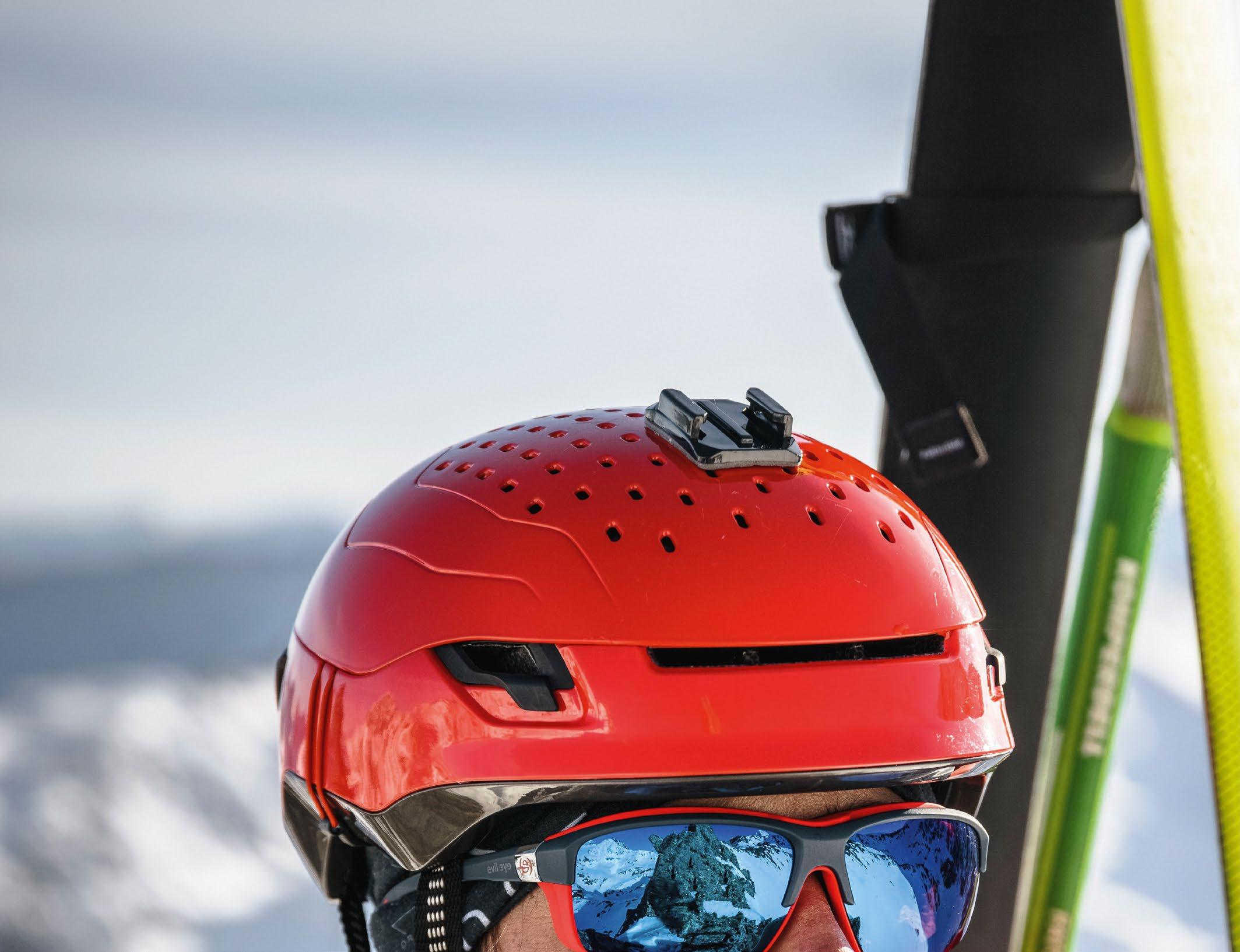DESTINATIONS





Entdecke eine neue Welt im Schnee: mit QV (QuattroVarioflex), Q (Quattroflex) und QLITE (QuattroflexLite). Unsere Top-Technologien machen Kontraste im Schnee deutlich sichtbar und lassen dich Gefahren schneller erkennen. Wechsle deine Perspektive – und sehe deine nächste Line, bevor du sie gefahren bist.
Die Kombination der Q (Quattroflex) - sowie V (Variofelx) - Technologie. Quattroflex ist unsere stark kontrastverstärkende Scheibentechnologie mit Polfilter. Varioflex sorgt dafür, dass sich das Glas automatisch tönt.
Die stark kontrastverstärkende Quattroflex-Scheibentechnologie mit Polfilter macht Konturen im Schnee sichtbar – auch bei schlechtem Wetter. Der Polfilter minimiert störende Reflexionen und Spiegelungen.
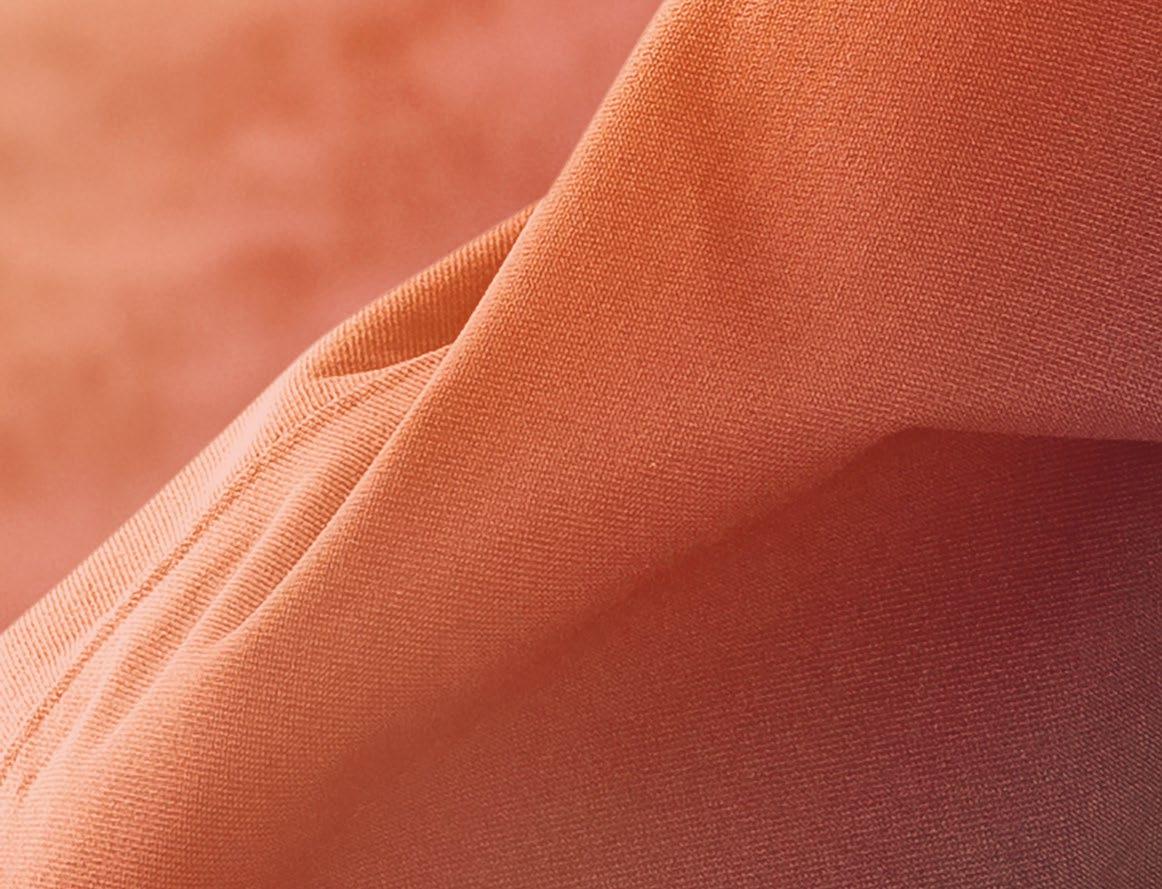



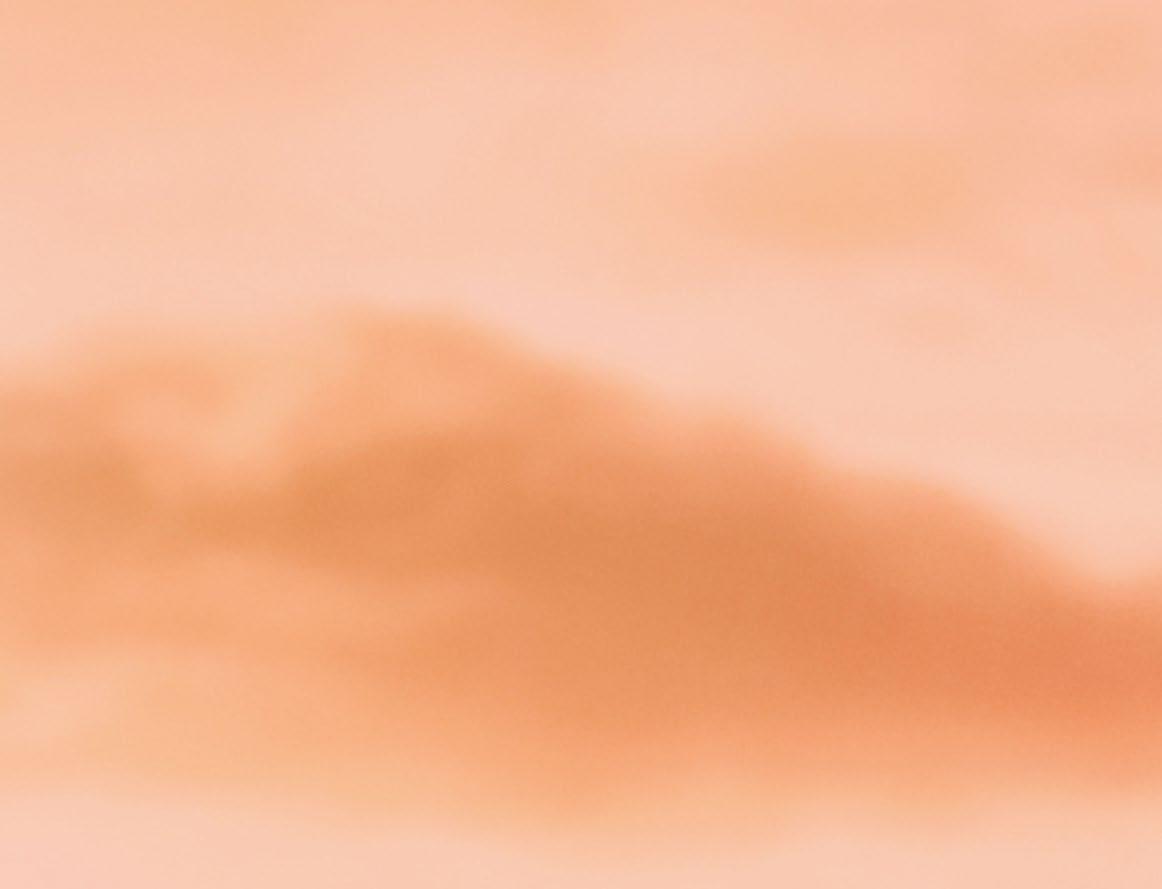


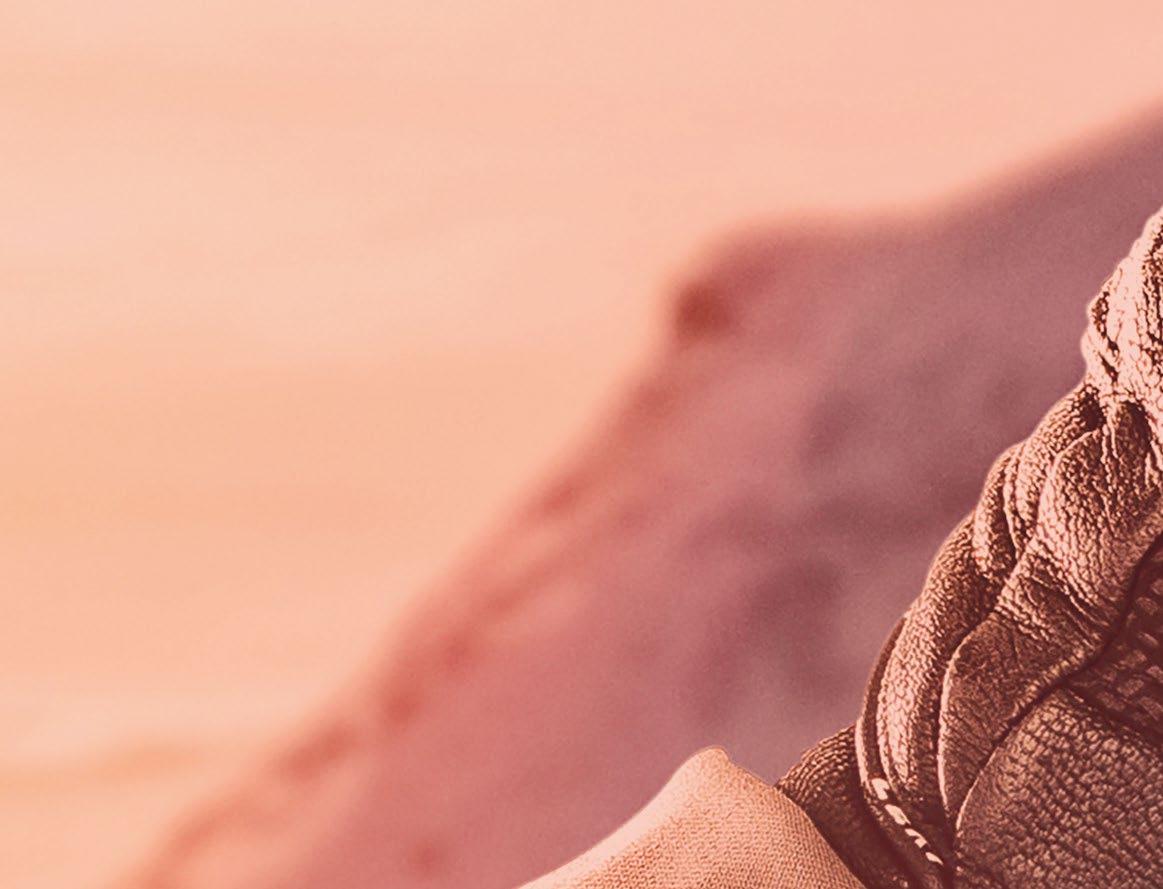
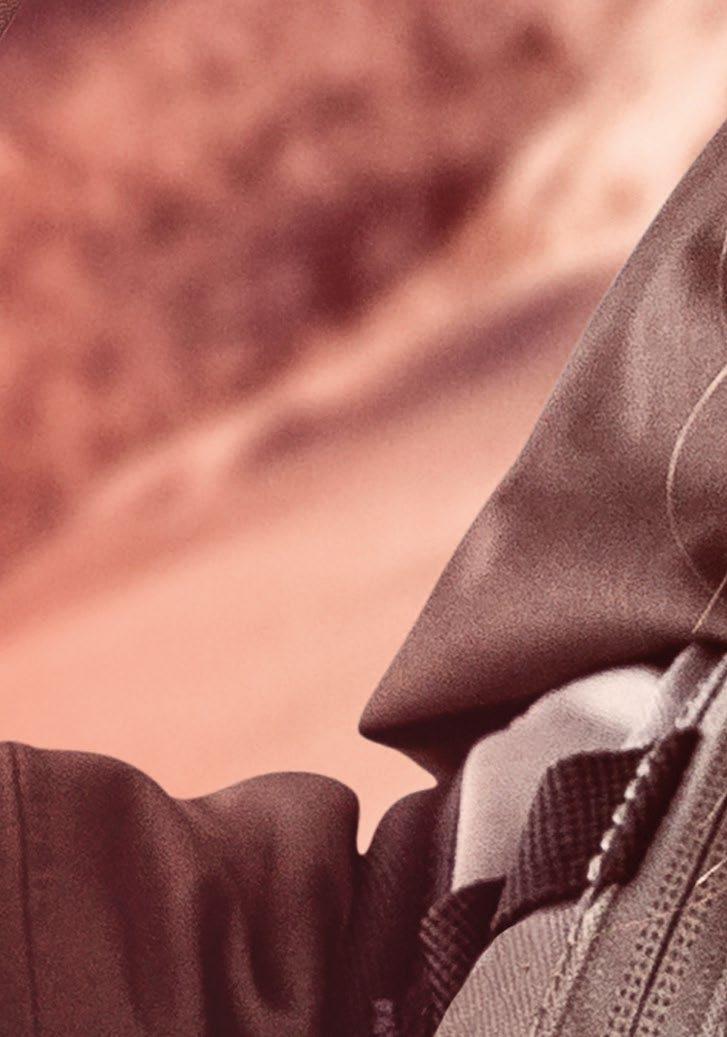
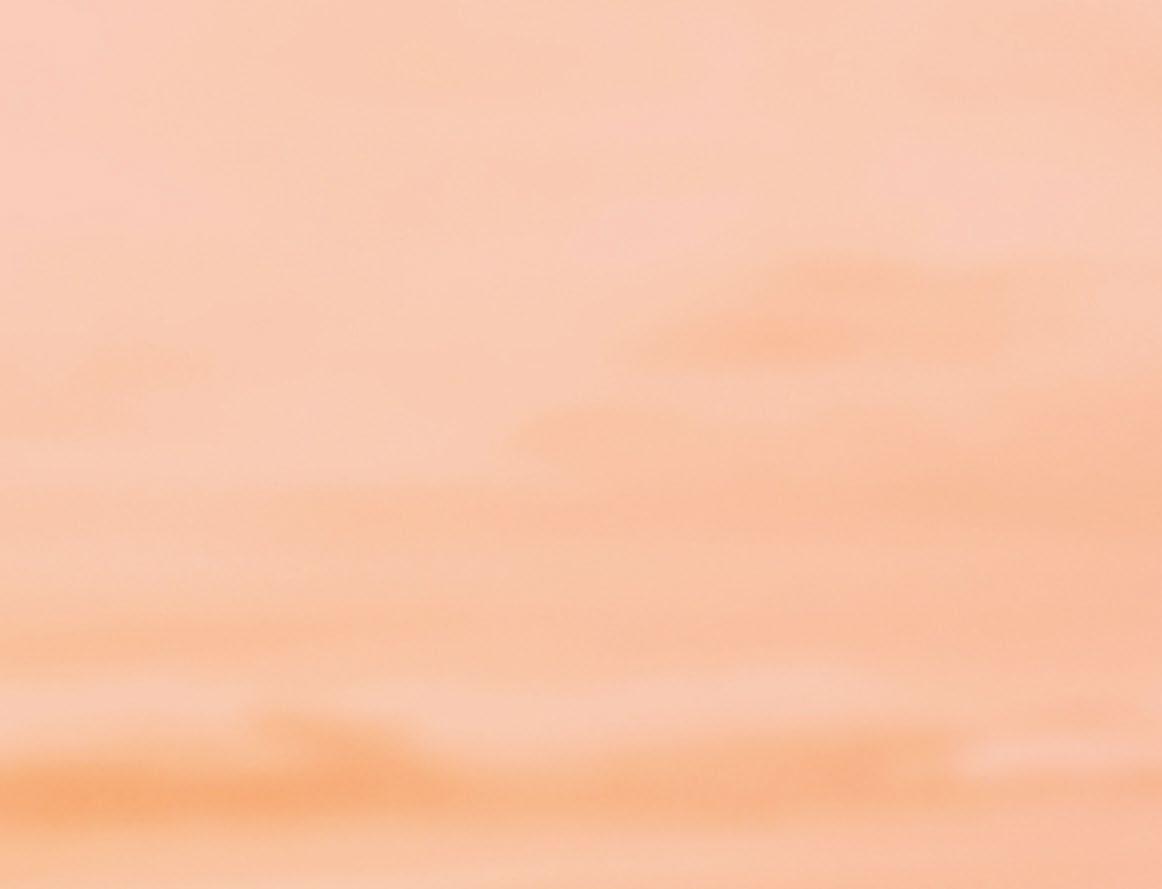
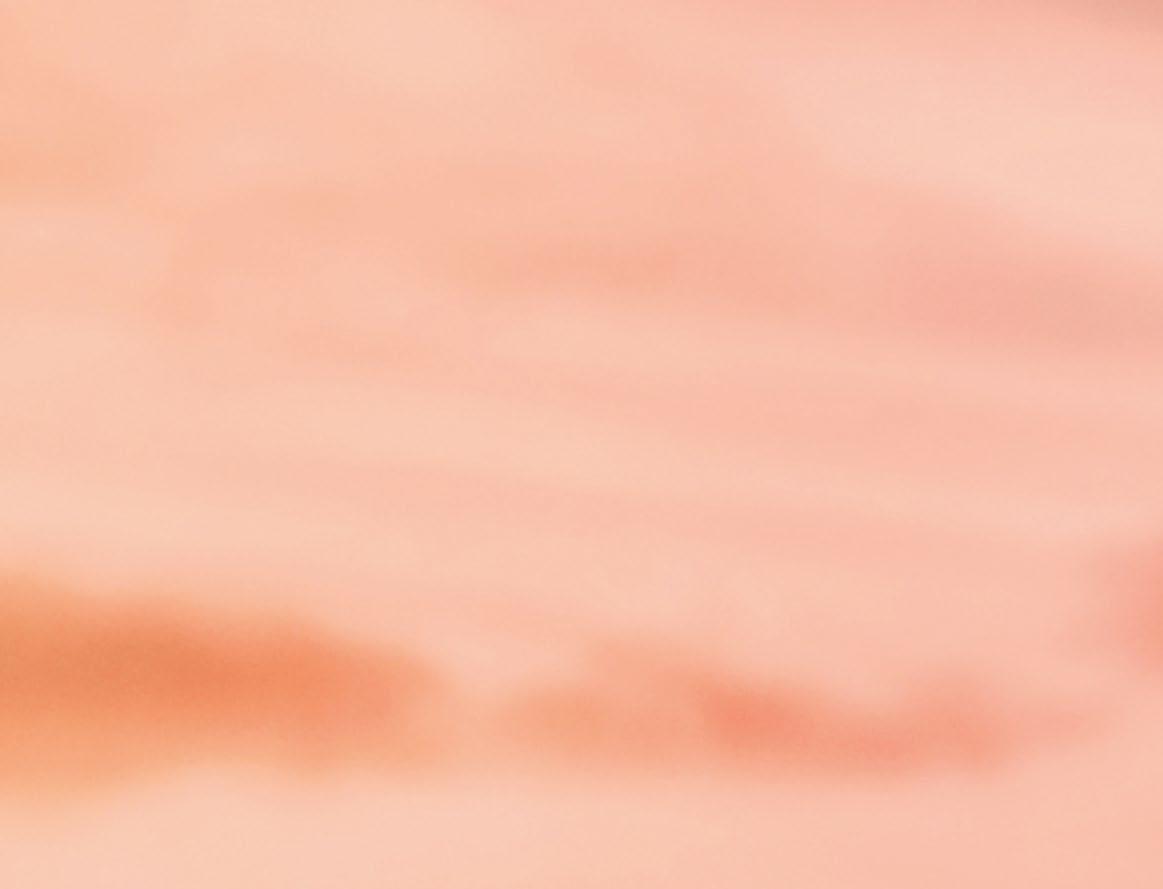
Kontraste scharf zu sehen ist für ALPINA die elementarste Eigenschaft einer Skibrille. Deshalb sind alle unsere Modelle mindestens mit der kontrastverstärkenden QLITE Technologie ausgestattet.




Teile deinen Wintertraum auf Facebook oder Instagram mit dem Hashtag #salewahome und tagge @salewa. Eine Jury übernimmt die Auswahl von 5 Bergträumen, die wir dann gemeinsam wahr werden lassen. Mehr Infos unter: salewa.com/salewahome
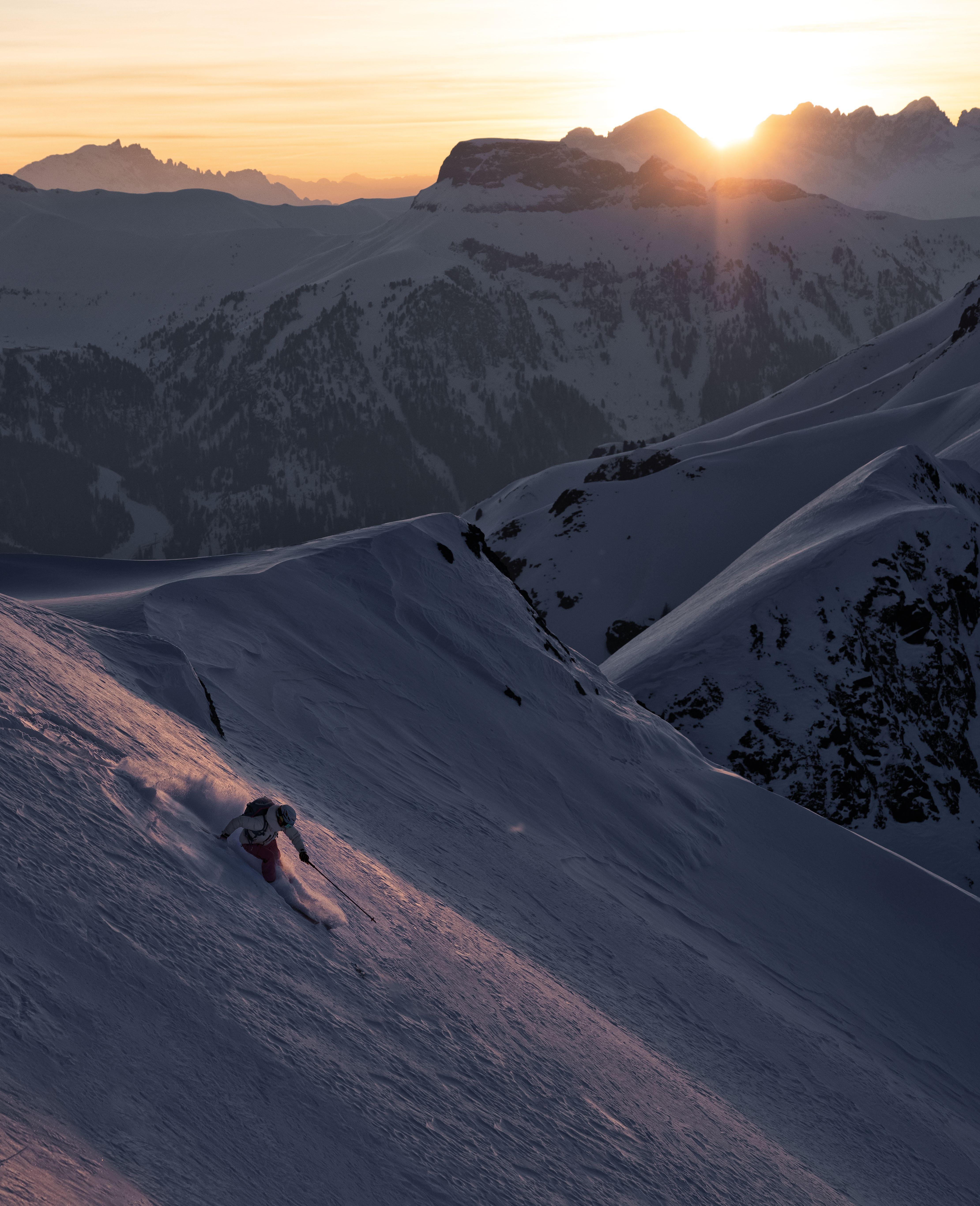
Der letzte Winter war etwas Besonderes. Die umfassenden Schließungen von Skigebieten aufgrund der Corona-Pandemie brachten viele Novizen zum Skitourengehen, „lokal statt global“ war durch die Erschwerung des Reisens angesagt. Wie erhofft und erwartet, reduzierte sich dadurch die Anzahl der Skiunfälle im organisierten Skiraum – in Österreich zum Beispiel von durchschnittlich rund 6.000 pro Winter auf etwa 700. Interessant, dass trotz des boomenden Skitourengehens die Zahl der auf Skitour Verunfallten von durchschnittlich ca. 500 auf moderate 600 stieg. Eine gute Nachricht für die Skitouren-Industrie. Aber vielleicht eher eine schlechte Nachricht für eingefleischte Skitouren-Enthusiasten? Sind nun auf vielen Touren Massenaufläufe zu befürchten?
Die Frage ist berechtigt, die Antwort wird man erst in kommenden Jahren geben können. Die Mode-Touren werden – wie bereits seit Jahren – wohl noch seltener mit Einsamkeit glänzen. Die verordnete Besinnung auf das Lokale brachte vielen, die bevorzugt die Einsamkeit und unverspurte Hänge suchen, wohl auch eine Teillösung für dieses so oft diskutierte sogenannte „Problem“. Wer seine Hausberge sehr gut kennt, weiß, wo er an guten Tagen hingehen muss, um das einsame Walhalla zu finden. Ein Erfahrungsschatz, den man nur über Jahre aufbauen kann und der von den „alten Hasen“ auch sehr vertraulich behandelt wird.
Einsteiger sind gut beraten, dem einem oder anderen „alten Mentor“ zu folgen. Nicht auf Instagram, sondern durch die echten, tiefen Spuren im Neuschnee. Wie wichtig diese Mentoren auch für einen Topstar der Backcountry-Szene wie „Hoji“ waren, kann man neben anderen tollen Geschichten in dieser Ausgabe nachlesen. Mit mehr Wissen und Sicherheit in den Tiefschnee –pragmatisch und praktisch, sofern man fündig wird.

Ihnen allen einen schneereichen und sicheren Winter. Und herzlichen Dank an alle, die diese elfte Ausgabe von BACKLINE ermöglicht haben.
Last winter was special. The widespread closures of ski areas due to the Covid pandemic introduced many novices to ski touring; “local instead of global” was the order of the day due to the impediment of travel. As hoped and expected, this reduced the number of ski accidents in the ski resorts – in Austria, as an example, from an average of about 6,000 per winter to about 700. In this context, it is very interesting to note that despite the boom, the number of people injured on ski tours rose from an average of about 500 to a moderate 600. Good news for the ski touring industry. But perhaps more bad news for die-hard ski touring enthusiasts? Do we have to fear mass crowds wherever we go?

The question is legitimate, but the answer can only be given in the years to come. The fashionable tours will probably shine –as they have for years – even more rarely with solitude. The situational reflection on what lies on one’s own doorstep quickly clarified for many who prefer to seek solitude and untracked slopes how to solve this “problem:” those who know their local mountains very well know where to go on a good day to find their very own, intimate Valhalla. A wealth of experience that can only be built up over years and which is also treated very confidentially by those “old dogs.”
Newcomers to the sport are well advised to follow one or the other experienced mentor. Not on Instagram, but in their real, deep tracks in the freshies. That these mentors were extremely important even for a top star of the backcountry scene like “Hoji” can be read – among other great stories – in this issue. Venturing into deep pow with more knowledge and confidence: pragmatic and practical. If you can find any.
I wish you a snow-blessed and safe winter. And heartfelt gratitude to all who have made this eleventh issue of BACKLINE possible.
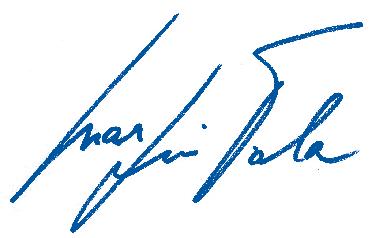
Yours,
Martin Fiala, Publisher, Editor-in-Chief
Seite | PAGE 8: Eric Hjorleifson – Canada rider: Eric Hjorleifson photo: Robin O’Neill
Seite | PAGE 16: Where the Adventure is Real – Pakistan rider: Tiphaine Duperier photo: Boris Langenstein
Seite | PAGE 24: Blessing and Curse – Italy rider: Valentine Fabre photo: Ben Tibbetts
Seite | PAGE 32: Dani Arnold – Switzerland rider: Dani Arnold | Tobi Heinle photo: Martin Fiala

Seite | PAGE 40: Friends on a Touring Day – France rider: Enak Gavaggio | Mathieu Navillod | Jeremy Prevost photo: Dom Daher
Seite | PAGE 48: Brothers of the Mountains – Austria rider: Christoph Johann | Fabian Johann photo: Christoph Johann
Seite | PAGE 56: A few Steps from Home – Austria rider: Johannes Hoffmann | Max Kroneck | Jochen Mesle photo: Andreas Vigl
Seite | PAGE 64: Art – Jessie Pitt
Seite | PAGE 66: The Evolution of Daron Rahlves – USA rider: Daron Rahlves photo: Ming Poon
Seite | PAGE 74: NoMansLand – Switzerland rider: Ricarda Schneegass photo: Anton Brey
Seite | PAGE 82: Go Big but Go Clean – Italy rider: Lorenzo Alesi | Alice Linari photo: Lorenzo Alesi | Alice Linari
Seite | PAGE 90: Photo Session – Austria rider: Jochen Reiser photo: Max Draeger
Seite | PAGE 98: The Land of the Swan – USA rider: Alexa Cathcart | Jack Kornfeld | Jeff Rich | Carl Simpson photo: Jason Hummel
Seite | PAGE 106: TimeOut – Austria rider: Roman Rohrmoser photo: Tom Klocker
Seite | PAGE 114: Photo
Seite | PAGE 118: Imprint | BACKLINE 2021/2022

Eric Hjorleifson, oder einfach nur Hoji, ist Mitte dreißig, lebt in Whistler in British Columbia, Kanada, und war an der Entwicklung des Backcountry-Skischuhs beteiligt, der seinen Namen trägt und für viele ein wahres Meisterwerk ist. Wenn ich mir die vielen Skifilme anschaue, in denen er in den letzten zehn Jahren mitgespielt hat, und sehe, wie er verrückte Linien fährt und es dabei mühelos aussehen lässt, dann zaubert er mir immer wieder ein breites Lächeln ins Gesicht. Genug Gründe, um ihn ganz oben auf meiner Liste für ein Feature in dieser Ausgabe von BACKLINE zu haben. Als wir den Videoanruf vereinbarten, planten wir ein Treffen von etwa 30 Minuten. Am Ende haben wir uns fast zwei Stunden lang unterhalten, und es fühlte sich trotzdem nur an wie ein kurzes, zehnminütiges Gespräch.
Eric Hjorleifson, or simply Hoji, is in his mid-thirties, lives in Whistler in British Columbia, Canada, and was involved in developing the backcountry ski boot that carries his name, a true masterpiece for many skiers.

Watching the many ski movies that he starred in the last decade, seeing him ski crazy backcountry lines and making it look effortless, has always put – and still puts – a big smile on my face.
Enough reasons to have him at the top of my bucket list for a feature in this issue of BACKLINE. Setting up the video call, we planned to meet for roughly 30 minutes. We ended up talking for almost two hours, and it still felt like a well-spent short ten-minute chat.

Hoji, danke, dass Du Dir die Zeit genommen hast. Gibst Du uns einen Überblick über die wichtigsten Momente Deiner Skikarriere? Meine Karriere begann mit Dreharbeiten bei Matchstick. Einer der wichtigsten Momente war die jährliche Tour im Januar 2010 zu den Golden Alpine Holidays Meadow & Sentry Lodges in British Columbia. Damals waren wir mit Tourenadaptern für Alpinbindungen unterwegs. Zum Glück war ich in meinen Zwanzigern und kräftig. Das Skitourengehen machte es mir möglich, unberührte Linien zu erreichen und zu fahren. Tourenbindungen waren zu dieser Zeit in Europa bereits etabliert, in Kanada aber eher mit mehrtägigen Hüttentouren, Guiding und riesigen Rucksäcken verbunden. All die technischen Möglichkeiten kennenzulernen, während ich mehr und mehr mit Skitourenausrüstung fuhr, war ein wichtiger Wendepunkt in meiner Karriere und hat meinen Weg bestimmt.
Was war Deine Hauptmotivation, diesen Weg einzuschlagen? Ich habe Jahre meiner Karriere damit verbracht, mit Hubschraubern und Schneemobilen zu tollen Linien zu kommen. Das ist fantastisch, aber auch sehr frustrierend. Ich mag den Lärm nicht. Ich möchte in der Wildnis Ski fahren und es genießen. Aber man hört nur diesen Lärm, riecht das Benzin; das hasse ich daran. Als wir begannen, selbst aufzusteigen, wurde mir klar, dass das die einzige echte Methode für mich ist.
Wie bist du mit dem zusätzlichen Risiko umgegangen, das beim Aufstieg

Hoji, thank you for taking the time. Would you take us through your skiing career and point out the most influential and memorable moments? My career was firmly situated in filming with Matchstick. One of the most important moments for me was the annual January ski touring trip to Golden Alpine Holidays Meadow & Sentry Lodges in British Columbia back in 2010. That time, we used inserts for alpine bindings. Luckily, I was still in my twenties, strong and I didn’t mind. Ski touring for me opened the door to access and ski untouched and beautiful lines. Skiing with touring bindings was kind of established in Europe by then. In Canada, ski touring was instead associated with multiple day trips from hut to hut, with guides and giant backpacks. Diving deeper into all the tech findings while skiing more and more with ski touring equipment was a significant moment in my career and defined my path.
What was your primary motivation to follow this path? I spent years of my career flying around in helicopters and using snowmobiles to get to cool lines. They are amazing tool vehicles but using them is also highly frustrating. I dislike the noise. I want to be out in these amazing wilderness areas, ski, and love it. And you’re just listening to horrible, horrible loud noises, smelling the gas; I hate it. As soon as we started approaching the lines by fair means, I realized I wanted to spend as much time as possible doing it.
How did you deal with the extra portion of risk approaching bold lines by fair
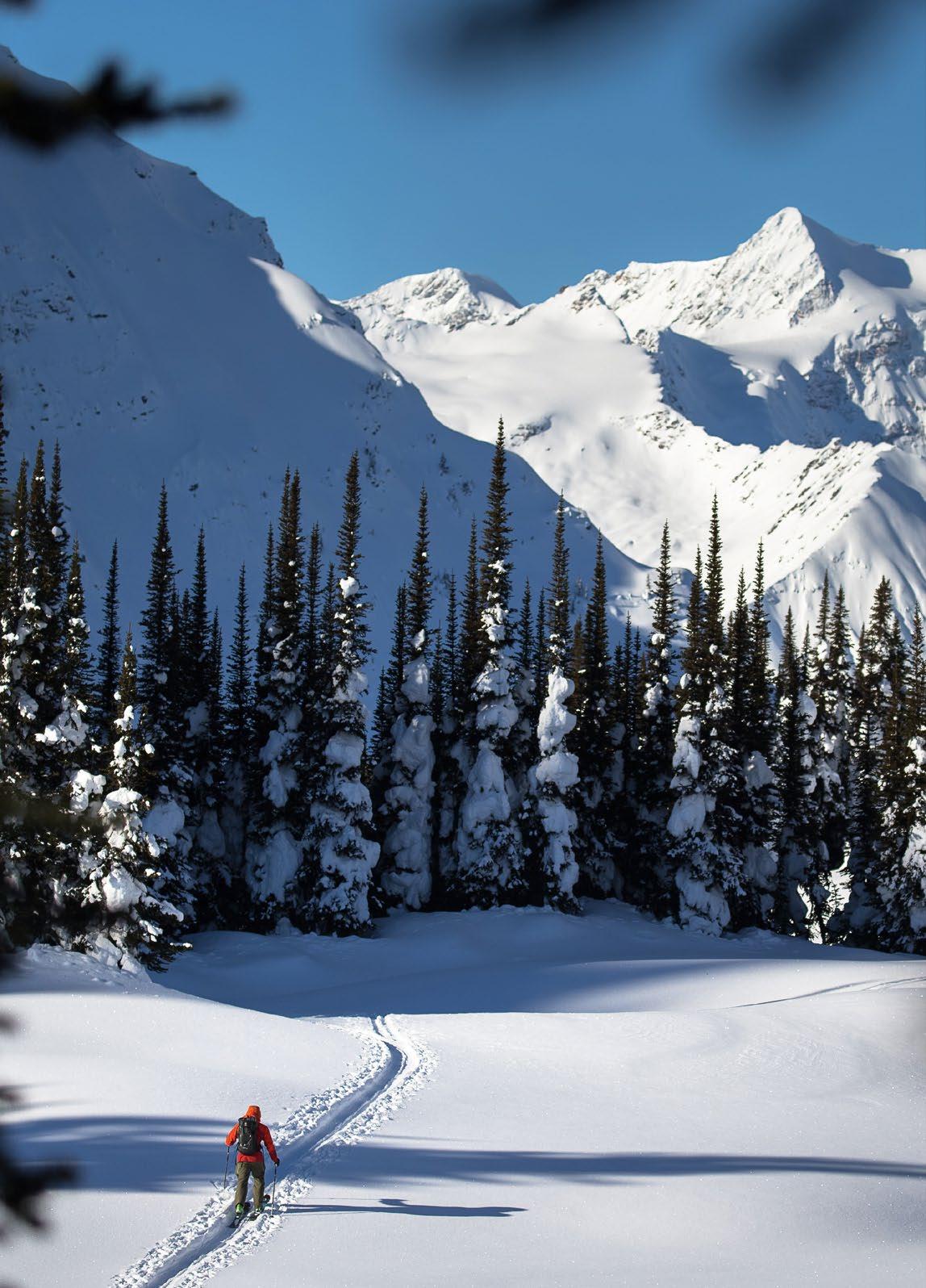
plötzlich allgegenwärtig ist? Zurückblickend denke ich, dass ich hunderte Male einfach Glück hatte, weil ich es nicht besser wusste. Skitourengehen ist ein ständiger Lernprozess. Es gibt keine Ausreden. Ich hatte das große Glück, in den kanadischen Rockies aufzuwachsen und mit Leuten Ski zu fahren, die zehn Jahre älter waren und Erfahrung hatten. Sie waren alle im Begriff, entweder Skiführer, Lawinensprenger oder Lawinenhelfer zu werden. Ich hatte immer die besten Mentoren um mich herum. Heutzutage kann jeder hervorragende Informationen im Internet finden; alles ist offen zugänglich und progressiv. Auch die Skiführerszene wird größer und ist sehr hilfsbereit. Die Entwicklung des Canadian Ski Guiding ist fantastisch. Sie legen großen Wert auf die pädagogische Komponente des Guidings, die anderen den Zugang zum Backcountry ermöglicht und das Ganze sicherer macht. Welche Ziele verfolgst du derzeit als Skitourengeher? Ich bin eher Opportunist, nicht mehr so sehr auf ein Ziel fixiert. Ich weiß mittlerweile, dass das Skifahren im Backcountry sehr von den Bedingungen abhängt, also konzentriere ich mich darauf, die Bedingungen so gut wie möglich zu verstehen. Und wenn alles passt, weiß ich die Momente zu schätzen und nutze sie aus. Sagen wir, ich bin ein bisschen verwöhnt. Da ich in Whistler wohne, habe ich das Glück, in einem Gebiet zu leben, in dem man gut Ski fahren kann und oft gute Bedingungen vorfindet. Was bedeutet es für Dich, in die Ausrüstungsentwicklung involviert zu sein?
means? Looking back, I think hundreds of times I just got away with only not knowing any better. Backcountry skiing means a lifetime of learning. There are no shortcuts. I was super lucky growing up in the Canadian Rockies and skiing with people who were ten years older and had experience. They were on their way to either becoming guides or professional snow safety ski patrollers doing avalanche control. Finding mentors worked well for me. Nowadays, anyone can find excellent information online; everything is open and progressive. Also, the guiding community is growing and helpful. The evolution of Canadian Ski Guiding has been fantastic. They put a premium focus on the educational component of guiding, which makes the entry to the backcountry for others possible and safe. What are your goals these days as a backcountry skier? I’m more of an opportunist, like I’m not an objective-focused guy as much anymore. I’ve identified that backcountry skiing is such a condition-dependent activity, and my focus is on understanding the conditions as best as possible. And when everything lines up, I appreciate those moments and just take advantage. Let’s say I’m spoiled a bit. Living in Whistler, I am fortunate enough to be in an area with good skiing and good lines.
rider | ERIC HJORLEIFSON

Was das angeht, habe ich gerade mal an der Oberfläche gekratzt. Ich habe letzten Sommer wie verrückt gearbeitet, bin Anfang August nach Europa, blieb bis Anfang Oktober und habe jeden Tag an der Entwicklung eines Schuhprototyps gearbeitet. Ich sollte auch jetzt besser in meine Werkstatt gehen und weitermachen. Ich denke, es gibt noch viel Potential für Verbesserung und Fortschritte im Schuhbereich. Ich würde auch gerne mehr mit Bindungen machen. Aber man muss wirklich ein Ingenieur sein, um da mitzuspielen, weil sie einfach super technisch sind. Ich kann mich im Moment nicht so stark einbringen wie bei den Schuhen. Vielleicht werde ich technisch ja noch besser. Du hast die Wahl: Eine kostenlose Guide-Lizenz oder ein technisches Ingenieurstudium und all das dazugehörige Wissen. Was nimmst Du? Gute Frage. Ich würde mich wahrscheinlich für das Studium entscheiden. Es ist eine
and worked every single day on prototyping a boot. I am still working on this project and should go down to my shop right now and continue working on the prototype. I think there’s still a lot of room for improvement and progression in the boot sector. I would also love to do more with bindings. You really need to be an engineer to play in the realm of bindings because it’s just such a technical thing. I can’t provide the same level of involvement as I can with boots at this moment. Maybe I’ll get better at engineering.
Two offers! Which one would you prefer? A guiding license for free or a technical engineering degree with all the knowledge? That’s a good question. I would probably go for the technical engineering side. It’s a tough one, though, because as a guide, one is working in the mountains, which I love.
But I can see the journey of being technically trained and how that could

schwierige Entscheidung, denn als Bergführer arbeitet man in den Bergen, was ich liebe. Ich habe zwar keine Ausbildung zum Bergführer gemacht, aber ich habe das Gefühl, dass ich schon einen großen Teil dieser Reise hinter mir habe, so dass ich nicht mehr so lernen müsste, um das nötige Niveau zu erreichen. Aber ich kann mir vorstellen, dass eine technische Ausbildung später, wenn ich älter bin, tatsächlich mehr Sinn machen würde. Wie schwer ist es, das Gleichgewicht zwischen Entwicklungsarbeit, Dreharbeiten und Privatleben zu finden? Das ist eine der schwierigsten Aufgaben, weil man nur eine begrenzte Zeit im Leben und eine bestimmte Menge an Lebensenergie hat. Ich erinnere mich an das Jahr 2014, als ich mit der Arbeit an den Schuhen in Österreich begann und den ganzen Februar mit der Entwicklung verbrachte. Ich glaube, ich bin zum ersten Mal in meinem

affect my life as I grow older. I thought about the guiding thing a lot. I didn’t go through a guiding certification training, but I feel like I’ve gone through a lot of that journey already, so there would not be as much of a journey ahead of me to get to the level.
Is it a challenge to find a balance between working as a developer, filming and your private life? That’s one of the hardest to balance it all because you only have so much time in your life.You only have so much life energy. And it is tricky. And I remember what was in 2014 when I started working on the boots in Austria and spent all of February developing. I think I went skiing once that month, and that was like the first time in my life. I mean, which professional skier takes February off from skiing? Mentally that was a bit of an interesting thing. Filming is very much a serious job, and you must get
Leben nur einmal Ski gefahren. Ich meine, welcher Profi-Skifahrer nimmt sich im Februar eine Auszeit vom Skifahren? Mental war das interessant. Filmemachen ist ein ernsthafter Job, und man muss gut darin sein, um zu überleben, mit anderen zusammenzuarbeiten und auf hohem Niveau abzuliefern. Ich bin Mitte dreißig und entwickle mich weiter. Ich habe eine Frau hier in Whistler und hatte großes Glück, eine Partnerin zu finden, die mich wirklich unterstützt. Ich bin glücklich, all diese unterschiedlichen Facetten ausleben zu können.
good at it to survive, work well with others and consistently create content that’s at a good level. I am in my mid-thirties and moving on. I have a wife here in Whistler, and I have been very fortunate; it’s good to have a partner and someone who really supports you. I’m a very lucky guy to have found all of this, all these different tangents.





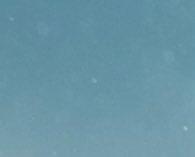

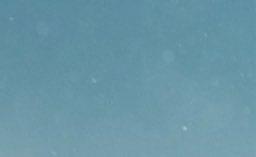







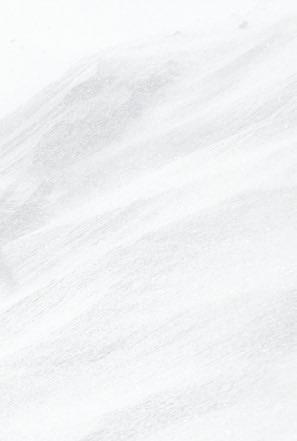






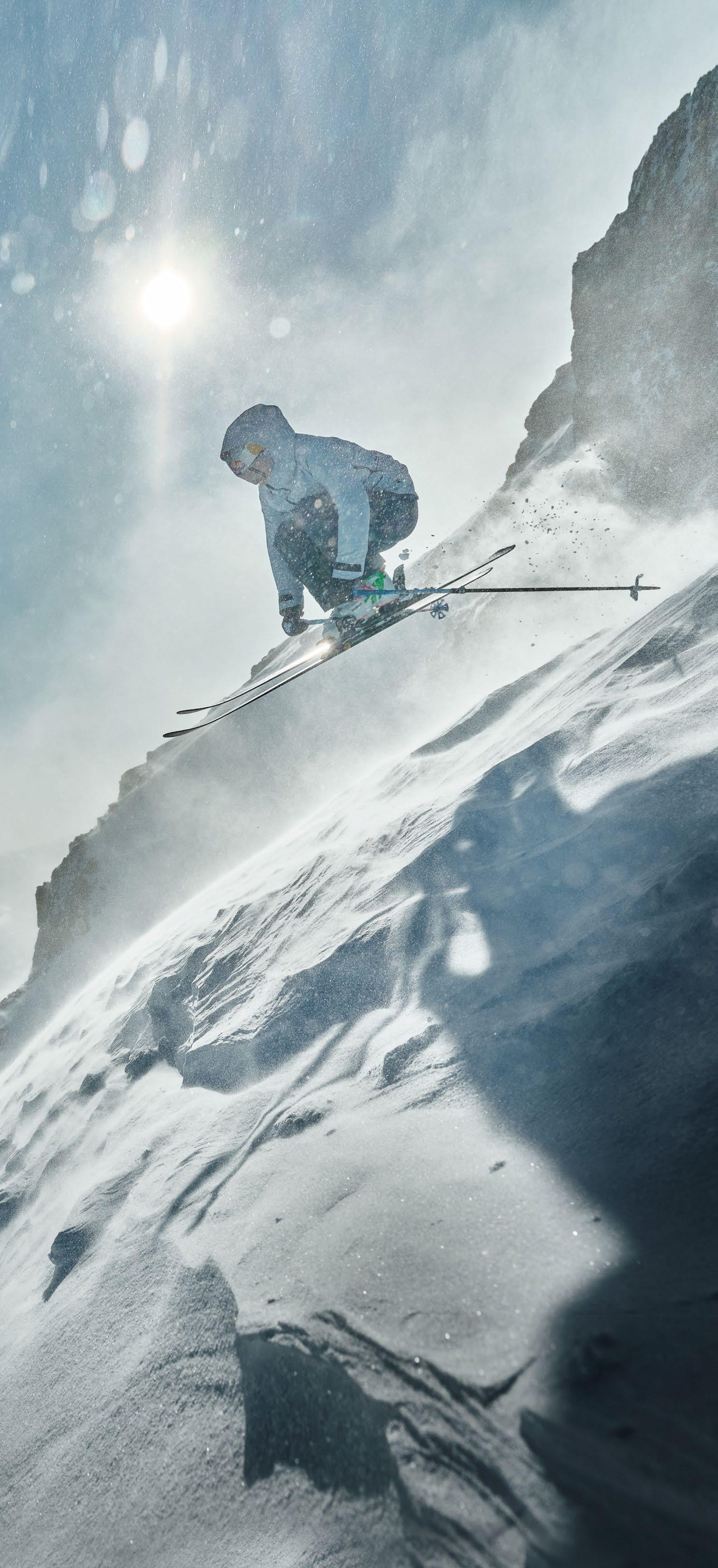
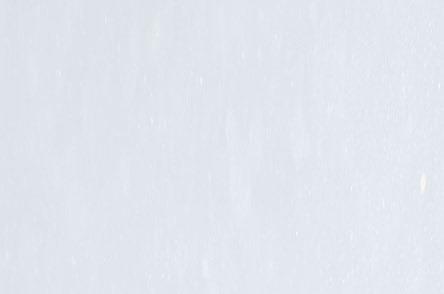










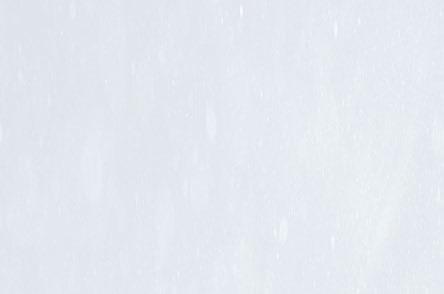









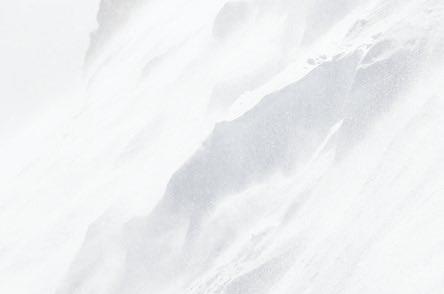





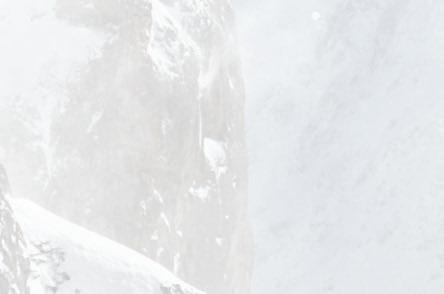




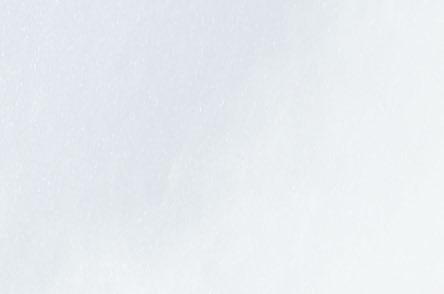

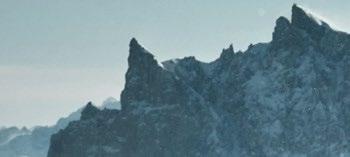





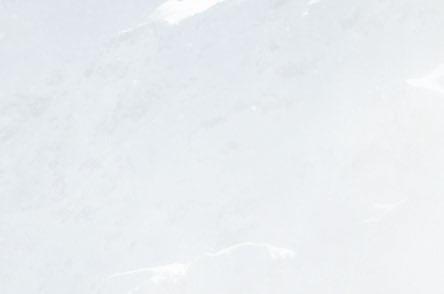
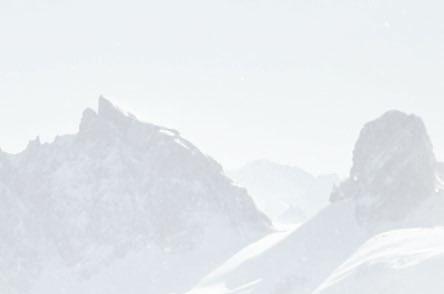


Wann beginnt ein Abenteuer? Wenn man das erste Mal über eine Idee spricht? Am Check-in-Schalter des Flughafens? Wenn man einen ersten Blick auf die Berge erhascht? Der Weg ins Hochgebirge des Karakorum erfordert sowohl Geduld als auch Ausdauer. Man muss bereit sein, weiterzugehen, aber auch wissen, wann man aufgeben muss. Das Abenteuer ist eine Mischung aus Entbehrungen und der Freude, dabei zu sein. Dies ist unsere zweite Reise nach Pakistan, und wir können es kaum erwarten, diese Gipfel mit ihren herrlichen Linien wiederzusehen. Es ist die Geschichte von zwei alten Freunden, die ihre Ferien gerne auf Expeditionen verbringen, am liebsten auf Skiern. Und so kommt es, dass wir 2019 die Hänge des Spantik – 7.027 Meter –und des Nanga Parbat – 8.126 Meter - befahren wollen.
When does an adventure begin? When you first talk about an idea? At the airport check-in desk? When you catch a first glimpse of the mountains? The road to the high mountains of the Karakoram requires both patience and perseverance. You have to be willing to keep going but also know when to give up. The adventure is a mixture of both hardship and the joy of being there. This is our second trip to Pakistan, and we cannot wait to see these peaks with their magnificent lines.
This is the story of two old friends who love to spend their vacations on expeditions, preferably on skis. That’s how, in 2019, we find ourselves skiing the slopes of the Spantik –7,027 meters – and the Nanga Parbat – 8,126 meters.


Mitte Mai. Nachdem der Transport organisiert, die Genehmigungen erteilt und der Jeep beladen ist, kann unsere Expedition beginnen. Dank des rosa Land Cruisers aus den 70ern sieht es so aus, als kämen wir aus einem Sommercamp. Auf dem Rücksitz singen Nuawas, Muaz und Nazir – sie kümmern sich um die Küche im Basislager – zur Playlist des Fahrers.
Nach dem Wiegeritual, maximal 25 Kilogramm pro Person, machen wir uns mit 25 Trägern auf den Weg zum Spantik-Basislager. Am Abend ist das Zelt mit Lachen und Gesang erfüllt. Kurze Zeit später sind Nawas, Muaz, Nazir, Tiphaine und ich allein im Lager.
Der Ort ist wunderschön, Berge überall. Nachdem wir drei Tage lang auf 5.000 und 6.000 Metern Höhe Ski gefahren sind, einige Lawinen ausgelöst, eine haushohe Wechte zum Einsturz gebracht und zwei Gipfel bestiegen haben, geht es zurück ins Basislager. Unsere Gefühle sind gemischt. Der Schnee ist in allen Expositionen instabil und anfällig für Schneebretter.
Als fünf Tage gutes Wetter vorhergesagt sind, beschließen wir, den Gipfel in Angriff zu nehmen. Nach zwei Tagen erreichen wir Lager Zwei. Obwohl der Weg nicht ausgesetzt ist, ist der Aufstieg nervenaufreibend: links eine Wechte, die jederzeit brechen kann, rechts ein lawinengefährdeter Hang.
Am dritten Tag ist der Schnee stabiler, aber fernab von ideal. Nach einem Tag mit konstantem Risikomanagement erreichen wir müde Lager Drei.
30. Mai, „Gipfeltag“. Nach einer unruhigen Nacht in der Höhe brechen wir um
It’s the middle of May. After the logistics are settled, the permits are issued, and the jeep is loaded, the first part of our expedition can begin. In our pink 1970s Land Cruiser, it looks more like we are coming from a summer camp. In the back seat, Nuawas, Muaz and Nazir are smiling and singing to the driver’s playlist.They take care of our logistics and especially our kitchen at base camp.
After the weighing ritual, max. 25 kilogram per person, we start the trek towards the Spantik base camp with 25 porters from the nearby village. In the evening, the tent is filled with laughter and singing. Shortly after, Nawas, Muaz, Nazir, Tiphaine and I are left alone at camp.
The place is beautiful, with mountains all around. After skiing for three days at 5,000 and 6,000 meters, triggering a few avalanches, collapsing a cornice the size of a small house and climbing two peaks, we return to base camp. Our feelings are mixed. The snow is unstable in all exposures and prone to slab avalanches.
When five days of good weather are forecasted, we decide to hike up the mountain. After two nerve-wracking days, we reach Camp Two. Although the trail isn’t exposed, the ascent is stressful: on the left is a cornice that can slide off at any time, on the right an avalanche-prone slope.
On the third day, the snow is more stable but far from ideal. After a day of constant risk management, we reach Camp Three. We are tired.

5 Uhr auf und steigen zu einem großen Plateau für den letzten Gipfelvorstoß. Es ist 13 Uhr, die Sonne scheint, es ist windstill, und wir haben den Gipfel erreicht. Müde, aber glücklich genießen wir den Moment und die Berge, die sich bis zum Horizont erstrecken. Für die Abfahrt wählen wir eine direkte Linie durch die Spalten. Nach unzähligen Kurzschwüngen kehren wir zum Basislager zurück. Cola, Pommes, Kuchen, Lieder und Tänze. Wir haben den Spantik befahren!
1. bis 9. Juni; Nanga Parbat. Wechsel des Tals, Wechsel der Szenerie. Nach zwei Tagen, begleitet von einem Polizisten, erreichen wir das Basislager. Der Ort ist magisch. Im Lager befinden sich zwei andere Gruppen. Am ersten Tag steigen wir zum Lager Zwei, um die Kinshofer Wand zu besichtigen, 150 senkrechte Meter, die technischste Passage des Aufstiegs. Die nächsten fünf Tage werden zu einem Kampf, denn leider hat sich Pakistan endgültig in meinem Magen eingenistet. In der Zwischenzeit hat ein Schneesturm mehr als 80 Zentimeter Neuschnee auf das Basislager abgeladen. Die Felswand des Nanga Parbat wurde vom Wind freigefegt und glänzt nun mit einer eisigen Oberfläche. Um die Akklimatisierung abzuschließen, begeben wir uns auf die abgelegene Seite des Diama auf etwa 7.000 Metern. Die Schneeverhältnisse sind ermutigend. Nach der Akklimatisierung warten wir auf ein Wetterfenster, das uns um den 29. erreichen soll. Wir nutzen es, auch wenn es nicht perfekt ist, und erreichen nach drei Tagen und einem Aufstieg unter wechselnden
May 30, “summit day.” After a poor night’s sleep at altitude, we set out at 5 am and head to a large plateau for the last push. It’s 1 pm, the sun is shining, no wind, and we have reached the top of Spantik. Tired but happy we enjoy the summit and the mountains that stretch to the horizon. On the descent we choose a direct line straight through the seracs. Skiing countless, fun short turns we return to base camp. Coca-Cola, French fries, cake, songs and dances. We skied the Spantik! June 1st to 9th; the objective: Nanga Parbat. Change of valley, change of scenery. After two days, accompanied by a policeman, we reach the base camp. The place is magical. There are already two teams in the camp. On our first day, we continue to Camp Two to examine the famous Kinshofer Wall, a 150-meter vertical wall, the most technical passage of the climb. Then, for five days, a real battle begins; unfortunately, Pakistan has finally taken grip of my stomach. In the meantime, a snowstorm has dumped more than 80 centimeters of fresh snow at base camp. The face of Nanga Parbat has been swept clean by the wind and is now shiny with an icy surface. To complete acclimatization, we head to the remote side of Diama at about 7,000 meters. The snow conditions are reassuring. After acclimatizing, we wait for the next weather window for our summit attempt, which is supposed to reach us around the 29th. We take advantage of it, even though it’s not perfect, and after three days, we reach Camp Four, after an ascent

Bedingungen, mit steilen Hängen und tiefem Schnee, das Lager Vier. Wir sind auf 7.250 Metern. Es ist 19 Uhr.
Am nächsten Tag verlassen wir das Lager um 5 Uhr morgens. Mit weniger als 100 Höhenmetern pro Stunde scheint alles viel zu weit entfernt. Gegen 18 Uhr erreichen wir erschöpft 8.000 Meter. Ich gehe ein Stück weiter bis auf 8.040 Meter. Der Gipfel scheint unerreichbar. Tiphaine hat früher aufgegeben.
Es ist spät, das Wetter mittelmäßig. Auch ich gebe auf. Als wir absteigen, ist es dunkel. Mit unseren Smartphones als Lampen legen wir uns seitlich in den Schnee und rutschen die Aufstiegsspur hinunter. Im Lager Vier denken wir bereits über den nächsten Versuch nach. Wir müssen früher los.
1. Juli, der zweite Versuch. Wir müssen neu spuren, unser Tempo ist frustrierend, Tiphaine und ich wechseln uns ab. Wir sind auf 7.800 Metern. Tiphaine will
in changing conditions, with steep slopes and deep snow. We are at 7,250 meters. It’s 7 pm.

The following day, we leave camp at 5 am, and with less than 100 meters of altitude per hour everything seems way too far away. Around 6 pm we reach 8,000 meters, exhausted. I hike a bit further; my phone indicates 8,040 meters. Visually, the summit seems unreachable. Tiphaine quit a bit sooner.
It’s late; the weather is mediocre; I also give up. As we descend it’s already dark. Using our smartphones as makeshift headlamps we lie sideways on the snow and slide down the ascent track on our skis. At Camp Four we are already thinking about the next attempt. We need to set out earlier.
July 1st; summit attempt number two. We have to re-track, our pace is depressing, and Tiphaine and I take turns in the front, tracking. We are at
anhalten und auf mich warten. Ich bitte sie, zum Lager zurückzukehren, aber sie besteht darauf, in einem Schneeloch hinter einem Felsen zu bleiben. Mein benebeltes Gehirn widerspricht nicht. Ich bin auf über 8.000 Meter. Der brüchige, tiefe Schnee ist einer harten Unterlage gewichen; der Gipfel scheint erreichbar. Auf 8.080 Metern erreiche ich einen kleinen Sattel links vom Gipfel, wo ich meine Skier abstelle und dem Felsgrat folge. 17:27 Uhr. Der Wind bläst. Ich habe den Gipfel des Nanga Parbat erreicht. Ohne Tiphaine sind die Gefühle weniger intensiv. Ein Selfie, dann steige ich wieder zu meinen Skiern ab. Auf dem Weg nach unten treffe ich auf Tiphaine, zusammengekauert in ihrem Loch. Wir umarmen uns, glücklich, wieder zusammen zu sein. Auch wenn unsere Beine nicht mehr richtig wollen, ist die Abfahrt fantastisch. Die Sonne scheint, das Licht ist magisch. Um 19
7,800 meters. I distance myself from Tiphaine as she tells me she will stop and wait for me. I ask her to return to camp, but she insists on waiting for me in a pit behind a rock. My somewhat foggy brain doesn’t object. I am above 8,000 meters. The brittle and deep snow has given way to a hard base; the top seems accessible. At about 8,080 meters, I reach a small pass to the left of the summit where I leave my skis and follow a rocky ridge. It’s 5:27 pm. The wind blows hard. I have reached the summit of Nanga Parbat. Without Tiphaine, the emotions are less intense. A selfie, then I descend back to my skis. On the way down, I pick up Tiphaine, huddled up in her hole. We hug, happy to be back together. Even though our legs are no longer responding properly, the descent is amazing. The sun is shining, the sky on fire, the light magical. At 7 pm, we reach Camp Four again. The next day,

Uhr erreichen wir Lager Vier. Am nächsten Tag geht es zurück. Vier Nächte auf 7.250 Metern haben uns die letzten Kräfte geraubt. Unterhalb von Lager Drei ist das Eis nur noch dünn mit Schnee bedeckt. Wir greifen die Fixseile, um die kritischen 100 Meter zu überwinden. Um die Kinshofer Wand zu umgehen, nutzen wir eine Variante auf der rechten Seite, die Luis Stitzinger im Jahr 2007 befahren hat. Danach ist es einfach. Wir genießen die letzten Schwünge. Muaz und eine Cola warten auf uns. Wir haben den Nanga Parbat befahren!
we begin our descent. Four nights at 7,250 meters have exhausted our last energy. Below Camp Three, the ice is only covered by a thin layer of snow. We decide to grab hold of the fixed ropes to overcome the critical 100 meters. To bypass the Kinshofer wall we use a variant to its right which Luis Stitzinger skied in 2007. After this passage it all becomes much easier. We savor our last turns and reach the lower part of the glacier. Muaz and a refreshing Coca-Cola are waiting for us. We have skied Nanga Parbat!

RISE BEYOND 96
Mit dem neue Rise Beyond 96 wird die Völkl Tourenski-Linie ergänzt. Mit seinem geringen Gewicht von 1262g (@170cm) und seiner zuverlässigen Ab fahrtsperformance fügt er sich nahtlos in die vielseitige, technisch anspruchsvolle RiseSerie ein.

130
Das High-End FreetouringModell für sehr anspruchs volle Fahrer, die eine exzellente Downhill- und reibungslose Uphill-Performance suchen. Top Handling und einfacher Ein- und Ausstiegskomfort bei einem Gewicht von 1250g (@26.5) inklusive!

DALBELLO.IT

Die ultraleichte und robuste Touren-Pinbindung für hoch alpine Herausforderungen mit DIN-Einstellungen bis zu 12.

 Photo & Text: Ben Tibbetts
Photo & Text: Ben Tibbetts
Die Signalkuppe (4.554 Meter) – oder Punta Gnifetti auf Italienisch –ist vielleicht am bekanntesten dafür, dass auf ihr das höchstgelegene Beherbungsgebäude Europas steht, die 1893 eröffnete Margheritahütte. Von der Schweiz aus gesehen ähnelt der Gipfel den anderen kleinen Schneegipfeln, die sich am Monte-Rosa-Plateau aneinanderreihen.
Von Italien aus erscheint sie jedoch als höchster Punkt der gewaltigen Ostwand, die zu den eindrucksvollsten der Alpen gehört. Der Signalgrat ist der lange Grat, der in der Mitte dieser Wand aus Eis und Fels emporzieht. Er trennt die wilden, malerischen Täler von Anzasca und Sesia voneinander und führt direkt zum Gipfel der Signal kuppe. In über 2.000 Kilometer Entfernung gibt es nach Osten keine höheren Berge.
Punta Gnifetti, or Signalkuppe, the 4,554 meters peak in the Monte Rosa massif on the border between Switzerland and Italy, is perhaps best known for accommodating the highest building in Europe, the Margherita hut, which opened in 1893. When seen from Switzerland, the peak resembles the other small snow domes scattered across the Monte Rosa plateau. From Italy, however, it appears as the culminating point of the great east face, among the most impressive in the Alps. The Cresta Signal is the long ridge that thrusts up the center of this wall of ice and rock. It divides the wild and beautiful valleys of Anzasca and Sesia and leads directly to the summit of Signalkuppe. There are no higher summits for over 2,000 kilometers to the east, and the views across the mountains and plains beyond give pause for thought.

Valentine und ich kamen spätabends am 25. April 2018 in Alagna an, fanden einen ruhigen Parkplatz und krochen hinten in den Van. Ich wachte um drei Uhr auf, eine Stunde früher als geplant. Als ich leise aus dem Van stieg, war ich überrascht, wie warm es war. Ich weckte Valentine und schlug vor, sofort aufzubrechen, falls die Hänge auf dem Weg zum Resegotti-Biwak gefährlich werden sollten. Während wir im Dunkeln an wunderschönen alten Häusern vorbeikamen, mussten wir aufgrund des weichen Schnees über eine Stunde lang immer wieder die Ski an- und abschnallen. Endlich kamen wir aus dem bewaldeten Tal heraus und der Schnee wurde fester. Allerdings bot sich uns ein apokalyptisches Bild eines Lawinenkegels. Der Schnee war hoch aufgetürmt, mitgerissene Bäume und Felsblöcke überall verteilt. Auch mit Fellen kamen wir in dem harten Lawinenkegel nur mühsam voran, bis nach ein paar Stunden endlich die Sonne zum Vorschein kam und den Schnee aufweichte. Dreißig Minuten später, als wir einen breiten Hang querten, schrie Valentine plötzlich auf. Ich drehte mich um und sah einen fußballgroßen Felsen auf mich zurasen. Ich versuchte, über ihn hinwegzuspringen, doch er traf meinen linken Stiefel und warf mich um. Ich war unverletzt, doch wir waren beide erschrocken, dass es an einem so harmlosen Ort fast zu einem Unfall gekommen wäre. Stunden später, als ich meine Ski an der letzten Felspassage unterhalb des Biwaks ablegte, entdeckte ich, dass der Stein ein großes Stück aus der Kante herausgeschlagen hatte. Am Abend inspizierte ich vom Biwak aus den Grat.
Valentine and I arrived in the small mountain village of Alagna late in the evening on April 25, 2018. We found a quiet car park and crawled into the back of the van. I woke with a start at three, an hour earlier than planned. Creeping outside, I was surprised at how warm it was. I woke Valentine and suggested we leave immediately in case the snow slopes on the way to the Resegotti bivouac should become dangerous. While hiking through the darkness past clusters of beautiful old houses, the rotten snow had us struggling on and off skis for over an hour. At length, we emerged from the wooded valley and the snow became firm, but we were met by an apocalyptic scene of avalanche debris. The snow was piled high and mixed with broken trees and rocks.We skinned up with difficulty, slipping about on the icy rubble until the sun arrived after a couple of hours and finally began to soften the surface. Thirty minutes later, as we were traversing a broad slope, Valentine suddenly yelped. I turned to see a football-sized boulder dashing towards me. As I tried to skip over it, it smashed into my left boot and knocked me over. The boot protected my foot from the impact, but we were both shaken by a close call in such a benign place. Hours later, as I took my skis off to climb the final rock band below the bivy, I discovered that the boulder had taken a massive chunk out of the edge of my ski. That evening, sitting quietly in the bivouac perched on a cliff and looking out over immense views, there was nothing to suggest the ridge above

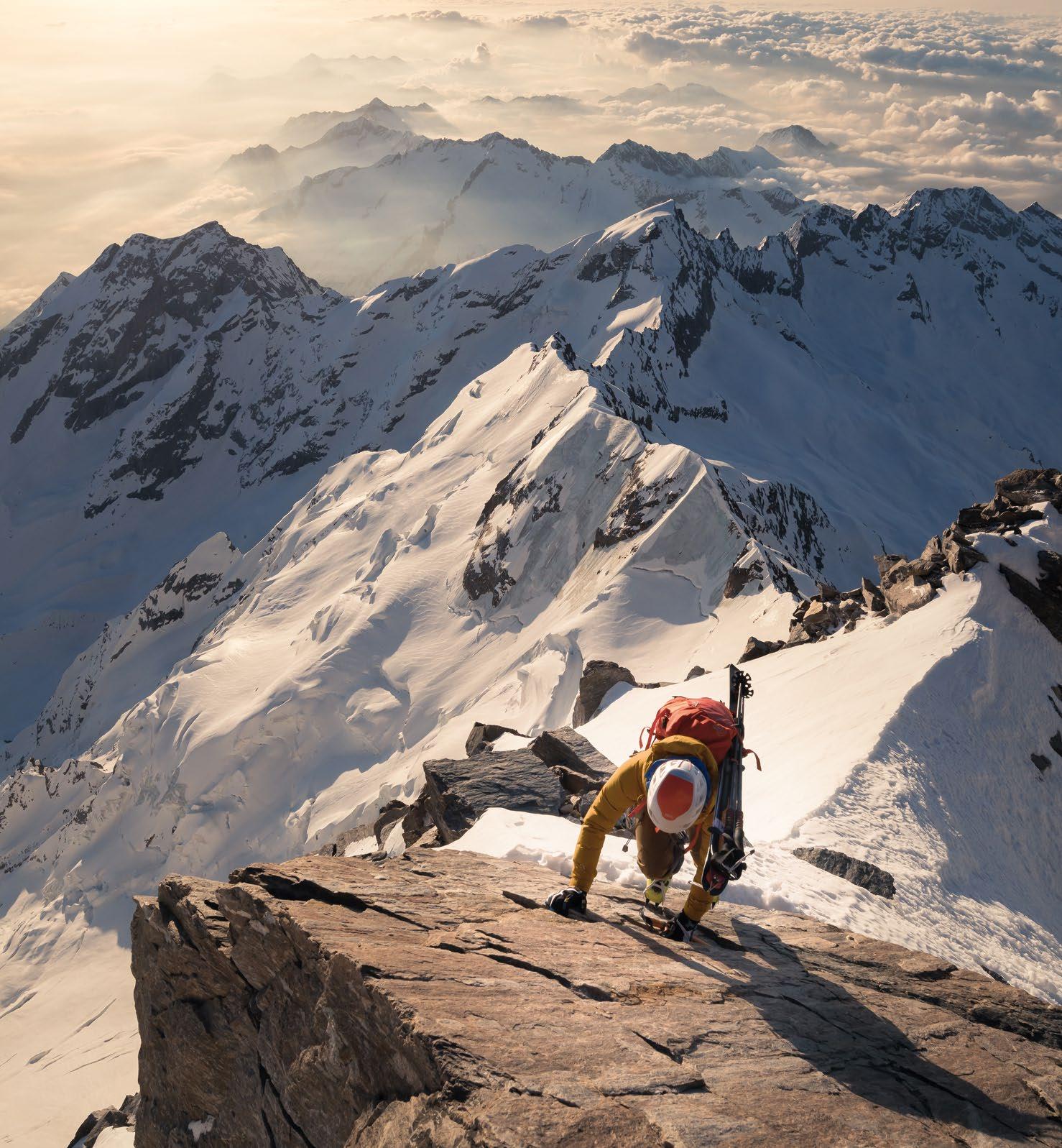
Nichts deutete auf irgendwelche Probleme hin. Dennoch hatte ich dieses angespannte Bauchgefühl, das ich mittlerweile so gut kannte. Auch realisierte ich, dass ich dieses Gefühl auf Touren mit Valentine häufiger hatte als sonst. Das Klettern als Paar ist Segen und Fluch zugleich: Es vereint unsere schönsten Erlebnisse, aber unsere Abenteuer sind oft von der Angst geprägt, was mit dem Partner passieren könnte. Ich spreche diese Ängste selten aus, wenn ich in den Bergen bin, denn Angst ist, wie jeder Kletterer weiß, ansteckend.
Um 3:30 Uhr machten wir uns auf den Weg zum Grat, unsere im Schnee knirschenden Schritte waren das einzige Geräusch, das die Stille durchbrach. Wir waren die ersten Bergsteiger auf dieser Route in diesem Jahr und die Verhältnisse auf dem Grat waren ausgezeichnet. An der linken, nach Süden ausgerichteten Seite war der Schnee kompakt, auf der rechten kalt und pulvrig. Als das Sonnenlicht schließlich über den Grat kroch, fühlte ich ein überwältigendes Gefühl der Erleichterung, das alle meine Ängste in den Schatten stellte. Diese flüchtigen, aber intensiven Erfahrungen von Schönheit und Freiheit sind es, die mich immer wieder in die Berge zurückkehren lassen, ganz so, als wäre ich in einem seltsamen, masochistischen Ritual gefangen.
Obwohl man im Hüttenbuch lesen konnte, dass die meisten Besucher die Route im Sommer kletterten, schien sie besser für Mixed-Touren im Frühling
should be problematic, but I couldn’t shake off that deep, gut-level tension that I have come to know so well. I also recognized that I feel like this more strongly when climbing with Valentine. Climbing as a couple is both a blessing and a curse: it melds our most powerful experiences, but our adventures are often tinged with a fear of what might happen to the other. I rarely voice these fears while in the mountains because, as every climber learns, fear is contagious.
We closed and jammed the warped wooden door of the hut at 3.30 am and set off up the ridge, our clawing footsteps the only sound cutting through the stillness. We were the first climbers on the route that year, but the ridge was in excellent condition. The left side, facing south, was sculpted in firm consolidated snow, while the right was cold and fluffy.
As the sun finally crept down the ridge to meet us, I felt an overwhelming sense of release that sublimated all my fears. These brief but intense experiences of beauty and freedom are what keep me coming back to the mountains as if caught in some strange, masochistic ritual.
Though the hut book suggests most people climb the route in summer, it seemed better suited to springtime mixed climbing. Where there would be shelves and gullies of loose rock in summer, we scampered up the crispy snow. Passing around the left side of the first buttress, we climbed steep snow into a corner. The rock was well scratched by crampons, and although
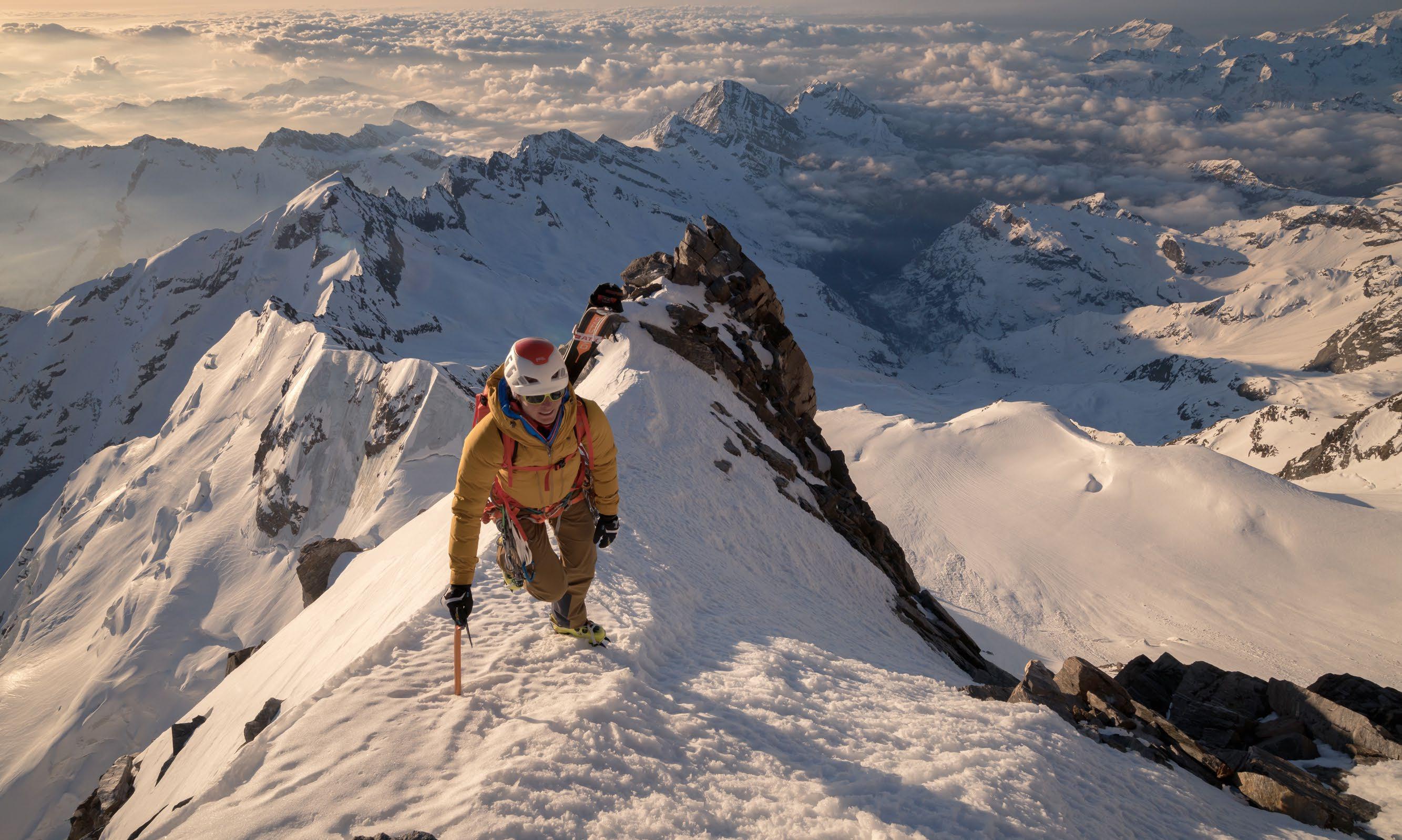
geeignet. Statt durch Rinnen mit losem Fels stiegen wir in knirschendem Schnee hinauf. Nachdem wir die linke Seite des ersten Anstiegs passiert hatten, kletterten wir über steilen Schnee zu einer Kante. Der Fels zeigte deutliche Kratzspuren von Steigeisen, und obwohl das Klettern einfach war, wurden wir durch unsere Ski am Rucksack behindert, die über unseren Köpfen am Fels hängen blieben. Danach folgten wir dem Grat ein kurzes Stück bis zur nächsten steilen Wand. Die Passage sah schwierig aus, also sicherte ich Valentine, während sie den Felskamin hinaufkletterte. Unter uns fiel der Berg gut 2.000 Meter ab. Als wir eine sichere Schneerampe erreichten, packte ich das Seil wieder ein, doch der Hang wurde weiter oben steiler und die Schneeauflage dünner, bis sie kaum noch das harte, blaue Eis darunter bedeckte. Wir stoppten in einer unbequemen Felsnische, seilten erneut an
the climbing was simple, we were handicapped by our skis that protruded above our heads, catching on the rock. Regaining the crest, we followed this for a short distance to the next steep yellow wall. It looked awkward, so I belayed Valentine as she contorted her way up the chimney. Below our feet, the mountain fell away over 2,000 meters. Arriving at an easy ramp of snow, we took the rope off, but the slope steepened higher up, and the snow thinned until it barely covered a layer of hard blue ice beneath. Stopping in an uncomfortable niche, we put the rope back on to make a difficult step across a gully of bare black ice. When we gained the final exposed crest, the rocks were warm to the touch, but just 50 meters above us, we could see spindrift streaming off the snowy plateau and harassing the Margherita hut. Putting on our jackets, we braced ourselves for the

und überquerten eine heikle Eisrinne. Am abschließenden exponierten Kamm fühlten sich die Felsen warm an, aber nur 50 Meter über uns sahen wir, wie Schneefahnen vom Gletscherplateau herabwehten und die Margheritahütte umhüllten. Wir zogen unsere Jacken an und bereiteten uns auf den kalten Wind vor. Es war ein Feiertag, der Tag der Befreiung Italiens, und als wir auf das Plateau herauskamen, sahen wir unterhalb der Signalkuppe gut zweihundert Skitourengeher, die die weiten Hänge bevölkerten – alle auf dem Weg zur Hütte, die, bis auf den maroden Winterraum, in dem wir kurz Rast machten, geschlossen war. Als die anderen eintrafen, flüchteten wir. Erst dann fiel mir wieder ein, dass mein Ski stark beschädigt war. Ich fuhr, so gut es ging, nur einen Ski belastend, mit Valentine über den Gletscher ab und nach zwei Stunden hatten wir dreitausend Meter hinter uns gelassen. Wir schnallten nur
maelstrom above. When we emerged onto the plateau, the scene beyond was hard to reconcile with where we had just been. It was a national holiday in Italy, and over two hundred ski tourers dotted the wide slopes below the Signalkuppe, all heading for the Margherita hut. The hut was closed except for the battered winter room, where we stopped for a quick break. As people began to arrive in droves, we fled. Only then did I remember that one of my skis was so severely damaged that it might snap in half, so I skied one-footed as much as possible as we weaved our way down the glaciers. As the snow began to soften, we cut back east into the Sesia valley, and by the time we reached Alpe Bors, the snow was thoroughly rotten under the intense morning sun. We descended 3,000 meters in just two hours and finally took our skis off five minutes from the car.
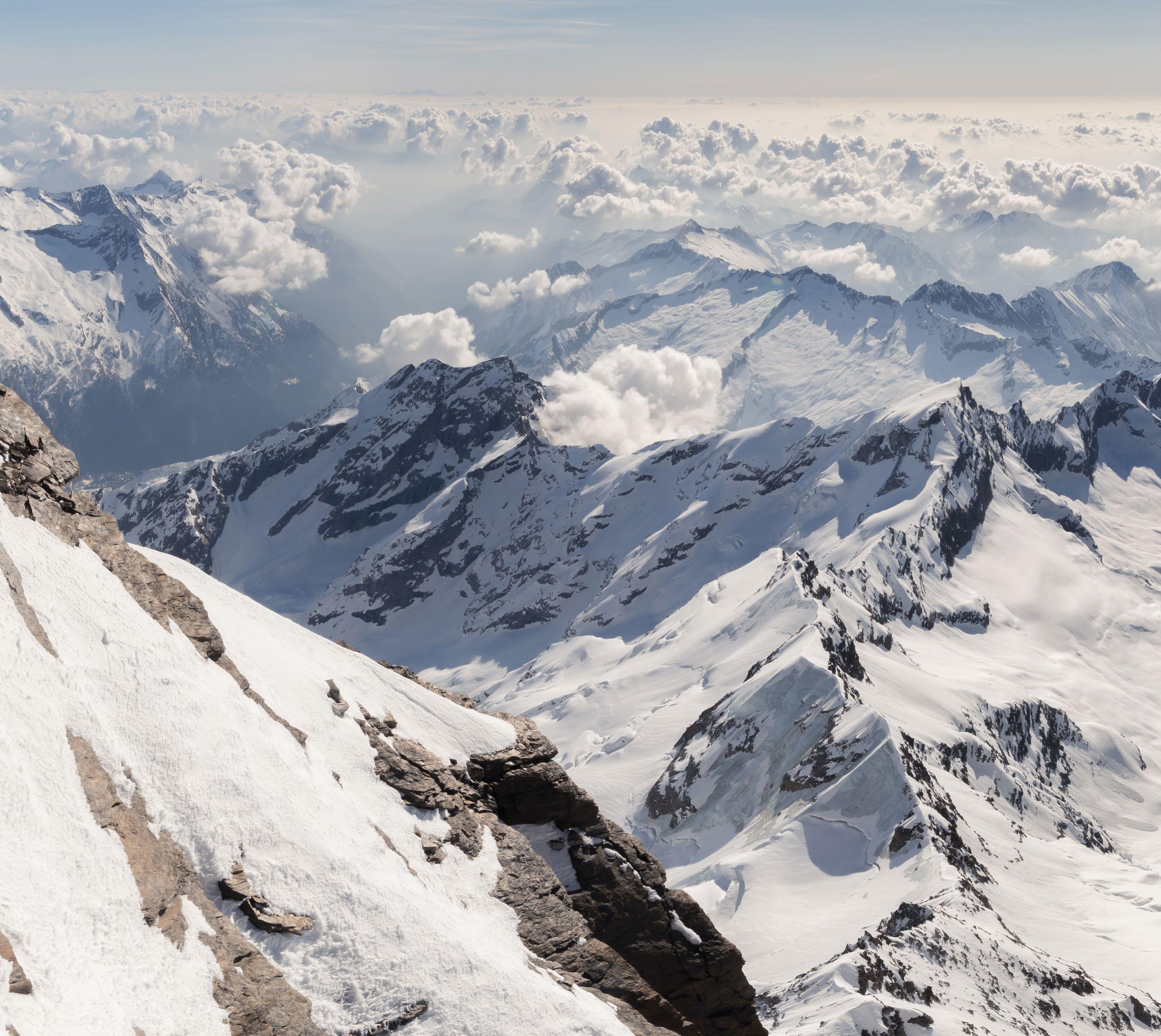
fünf Minuten vom Auto entfernt ab. Dank der Emotionen auf dieser Tour und meiner Fitness hatte ich mich trotz des Schlafmangels in den zehn Stunden, die wir zum Auf- und Abstieg gebraucht hatten, nicht ein einziges Mal müde gefühlt. Jetzt aber blickte ich zurück und freute mich auf Zuhause und ein wenig Erholung.
Der Artikel ist ein Auszug aus Bens Buch: “Alpenglow. Die spektakulärsten Anstiege auf die 4000er der Alpen”..
Despite my lack of rest, I hadn’t once felt tired in the ten hours it had taken to climb the route and descend. Powerful emotions had kept my senses alive, and my mind stimulated. Having climbed over ten thousand meters in four days, carrying a mass of camera equipment, I was surprised and grateful for the resilience of my body.
This article is an excerpt from Ben’s 2019 book “Alpenglow – The Finest Climbs on the 4000m Peaks of the Alps”.











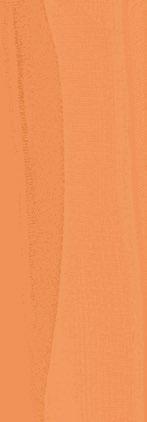


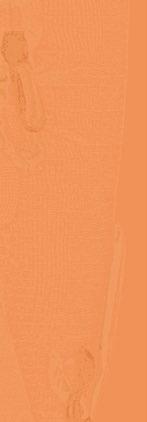

















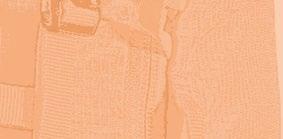





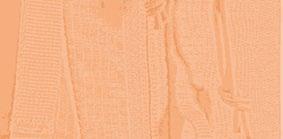

















Dani Arnold ist in der Kletterszene bekannt und wird dank SoloSpeed-Rekorden an Eiger- und Matterhorn-Nordwand auch in der Öffentlichkeit wahrgenommen. Die Liste seiner Leistungen ist lang – Solo-Rekordzeit am Walkerpfeiler über die Cassin-Route im MontBlanc-Massiv, schwere Erstbegehungen, schwierigste Trad-MixedKlassiker und mehr. Während einer zweitägigen Skitour in seinem „Wohnzimmer“ vom Göschenen über die Albert-Heim-Hütte nach Realp durfte ich ihn besser kennenlernen. Die Verhältnisse waren gut und die Umgebung wunderschön. Mir bleibt jedoch weniger die steile Rinne durch die Granitfelsen, die wir gefahren sind, in Erinnerung, sondern ein Mensch, der jede Minute in den Bergen mit Herzlichkeit und Freude verbringt und – obwohl gelernter Snowboarder – das Skifahren zu schätzen weiß.
Dani Arnold is well-known in the climbing scene and, thanks to solo speed records on the Eiger and Matterhorn north faces, he is also known in the public eye. The list of his achievements is long –solo record time on the Walker Pillar via the Cassin Route in the Mont Blanc massif, difficult first ascents, most difficult trad mixed classics and more. During a two-day ski tour in his „backyard” from Göschenen via the Albert Heim hut to Realp, I had the pleasure to get to know him better. Conditions were good and the scenery was stunning. However, what remains in my memory is not so much the steep gully cutting through the granite rocks that we skied, but a person who enjoys every minute in the mountains with cordiality and joy and – albeit being a professional snowboarder – loves skiing.

Dani, du bist für deine schnellen Solo Begehungen in den schwierigsten alpinen Wänden weltweit bekannt. Was ist dein ganz persönliches „Warum“ für diese schnellen und spektakulären Solos? Nun ja – ich denke das stärkste „Warum“ ist einfach der Spass. Es war nie ein Ziel von mir, durch schwere Solo Begehungen bekannt zu werden. Es hat sich einfach ergeben, ist Schritt für Schritt passiert. Man kann nicht von heute auf morgen entscheiden, eine 1.000 Meter hohe Wand ohne Seil zu klettern. Sowas braucht jahrelange Vorbereitung, Planung und natürlich auch viel Training. Wenn dann der richtige Moment gekommen ist und alles stimmig ist, das ist dann schon was ganz besonderes für mich. Dieses Gefühl in einem derart kompromisslosen Stil durch schwere Wände zu klettern, ist nur schwer zu beschreiben. Viele können nicht nachvollziehen, dass man derart extreme Risiken eingeht, was schätzt du daran, dich solchen extremen Risiken auszusetzen?
Ich schätze das Risiko bei einem Free Solo nicht höher ein als bei vielen normalen Bergtouren. Klar gehe ich mehr an die Grenze, das ist mir sehr wohl bewusst. Der Aufwand und die Vorbereitungen für solche Begehungen sind jedoch auch immens höher als bei einer normalen Bergtour. Besonders die mentale Auseinandersetzung vor solchen Begehungen, das Warten auf die richtigen Verhältnisse und die richtige Konstellation – bis alle Faktoren zusammenkommen - ist langwierig und auch ein Geduldspiel. Wenn ich mich dann entschließe einzusteigen, habe ich alle Aufgaben erledigt und nichts dem
Dani, you are known around the world for your fast solo ascents on the most difficult climbs. What is your personal reason for doing these spectacular tours?


First and foremost, it’s the fun. It was never a goal of mine to become famous for difficult solo ascents. It just happened, gradually.You can’t decide overnight to climb a 1,000-meter wall without a rope. Something like that takes years of planning and lots of training. When the moment arrives and everything is right, it’s something very special. It’s hard to describe the feeling of climbing difficult walls in such an uncompromising style.
Many people can’t comprehend that you expose yourself to such risks. Why do you do it?
I don’t consider the risk on a free solo to be bigger than on many normal hikes. Of course, I push myself much closer to the limits, I am aware of that. However, the effort and preparations are a lot higher than for a normal tour. Especially the mental struggle; waiting for the right conditions and the right constellation of all factors requires patience. When I finally decide to set out, I have done all my homework and left nothing to chance. When you do a „leisure tour,“ you sometimes don’t even prepare anything. You just take off. I’d be more worried that these kind of situation turned out to be risky.
Zufall überlassen. Bei „normalen Touren“ geht man schon mal einfach los. Da kann man auch überrascht werden und das kann einen in brenzlige Situationen bringen. Davor habe ich viel mehr Respekt. Hat sich Deine Einstellung zum Thema „Risiken eingehen“ über die Jahre verändert? Sehr deutlich. Ich würde heute viele Projekte, die ich in der Vergangenheit realisiert habe, nicht mehr so durchführen. Ich habe einfach auch einige Male Glück gehabt. Ich denke, dass fast jeder Mensch solche Zeiten Euphorie durchlebt. Man fühlt sich fast unsterblich, schwebt auf einer Welle der Euphorie. Das ist zwar toll gewesen, aber mit der Zeit lernte ich, dass das halt nicht stimmt. Im Grenzbereich kann auch einiges schiefgehen. Ich empfinde es aber als eine Chance, wenn man den Mut hat, etwas zu versuchen. Es muss ja nicht immer gerade ein extremes Free Solo sein, aber mit ein wenig Mut kann man auch die Erfahrung machen, wie sich der eigene Horizont erweitert. Obwohl gelernter Boardercrosser bist Du gerne mit Skiern unterwegs, warum kein Splitboard? Als ich mit dem professionellen Snowboarden 2006 aufgehört habe, waren die Splitboards einfach noch nicht so toll. Das hat mich abgehalten. Als ich dann für die Bergführerprüfung auch anständig Skifahren musste, war es selbstverständlich, dass ich mich viel auf Skiern bewegt habe. Das mit dem Splitboard hole ich sicher noch irgendwann nach. Du glaubst nicht, wieviele Male ich mir ein Snowboard zum Runterfahren gewünscht habe.
Has your attitude toward “taking risks” changed over the years? //
Very much so. I wouldn’t repeat a lot of the projects I’ve done in the past. Sometimes I was just lucky. I think almost everyone goes through such times of euphoria. You almost feel immortal, in the flow. It has felt great, but over time, I’ve learned that a lot of things can go wrong when you’re „walking on the edge,“ literally. But it’s also an opportunity when you try something new. Not necessarily an extreme free solo, but you can always expand your own, personal horizon.
Although you are a trained boardercrosser, you like to go out on skis. Why not a splitboard?

When I stopped snowboarding professionally in 2006, splitboards just weren’t there yet. And for the mountain guide exam, I had to be able to ski properly. I’ll eventually get around to the splitboard. You wouldn’t believe how many times I wished I had a snowboard for the descent...
How important is ski touring for you in terms of your overall alpine skills and projects?
There are countless tours - near or far - on which I ski. But this is mostly to get to the base of a wall or icefall. From a physical point of view, I think ski touring is great. But it is difficult to be the best in all disciplines. That’s
Welchen Stellenwert haben für Dich Skitouren im Hinblick auf dein gesamtes alpinistisches Können und deine Projekte? Es gibt unzählige Touren, bei denen ich mit Ski unterwegs bin, daheim oder auch auf Expeditionen. Dies aber meist, um an den Fuß der Wand oder des Eisfalls zu kommen. Unter konditionellen Aspekten finde ich Skitouren super. Es ist aber schwierig, in allen alpinen Disziplinen top zu sein. Daher fokussiere ich im Extrembereich auf die Disziplinen, die ich einigermaßen im Griff habe. Wenn du für dich Skitourenziele aussuchst, überwiegt eher die Herausforderung im Auf- oder im Abstieg? Mir ist der konditionelle Aspekt fast am wichtigsten. Es ist für mich sehr faszinierend, in einer wunderschönen Landschaft meine Aufstiegsspur zu legen. Das ist schon was ganz besonderes für mich, mit das Schönste im Bergsport. Und ja, das Runterfahren ist schon auch in Ordnung.
why I’m concentrating on the extreme ones, which I’ve mastered quite well, I think.
When you choose your touring objectives, do the challenges of the ascent or the descent predominate?

Personally, the physical aspect is a bit more important. I am fascinated with tracking uphill through a beautiful landscape. That is very special, one of the most beautiful experiences in mountain sports. But the downhill is of course also something to look forward to!
Do you often go ski touring alone?
Yes, quite often and I enjoy being by myself for training. Those are very
Bist Du auch bei Skitouren öfter Solo unterwegs? Ja ich bin recht viel und gerne zum Training allein auf Skitouren unterwegs. Das sind sehr intensive Momente. Besonders körperlich, weil ich mich gerne konditionell fordere. Wenn ich mit anderen Leuten auf Tour gehe, geht es mehr darum, gemeinsam in den Bergen zu sein, schöne Augenblicke zu erleben und die einmaligen winterlichen Eindrücke zu teilen. Entfernen sich aus deiner Sicht die Bereiche „Extrem Winter Alpinismus“ und „Extrem Skialpinismus“ auseinander oder wachsen diese Bereiche eher zusammen? In der Breite wachsen diese zwei Bereiche zusammen, denn für viele Unternehmungen im Winter muss man in beiden Disziplinen ein gutes Niveau haben. Im Top Bereich ist es aber sehr schwierig, in beiden Bereichen ganz vorne zu sein. Um zu den Besten der Welt zu gehören, muss man sich
intense moments. Especially physically, I like to challenge myself. When I go on tour with other people, it’s more about being in the mountains together, experiencing great moments and sharing the unique winter scenery.
From your point of view, are the areas of “extreme winter alpinism” and “extreme ski alpinism” drifting apart or are they growing together?
Broadly speaking, they are growing together, because for many endeavors in winter you need to be a good level in both disciplines. At the top level, however, it is very difficult to be at the top in both disciplines. To be among the best in the world, you have to focus a little bit on one or the other and follow that path.

schon ein bisschen auf das Eine oder das Andere fokussieren und diesen Weg verfolgen.
Welche ski-alpinistischen Leistungen haben Dich in letzten Jahren beeindruckt?
Gerade Jeremie Heitz hat mich schon beeindruckt. Unglaublich mit welcher Geschwindigkeit der Bursche extrem steile Linien befährt. Mit ganz großer Bewunderung habe ich auch die Besteigung und anschließende erste Abfahrt von Andrzej Bagiels mitverfolgt. Das ist schon ein sehr, sehr cooles Projekt, bei dem ganz viel Aspekte und Disziplinen vom Bergsport zusammen laufen. Dort oben die Ski anzuziehen ist schon sehr frech.
Which ski mountaineering achievements have impressed you in recent years?

Jérémie Heitz, in particular, has impressed me. The speed the lad skis extremely steep lines with is unbelievable. I also watched Andrzej Bagiel’s ascent at K2 and subsequent first descent with great admiration.
This is a very, very cool project, where many aspects and disciplines of mountain sports come together. To step into your ski binding up there is truly a bit bold.







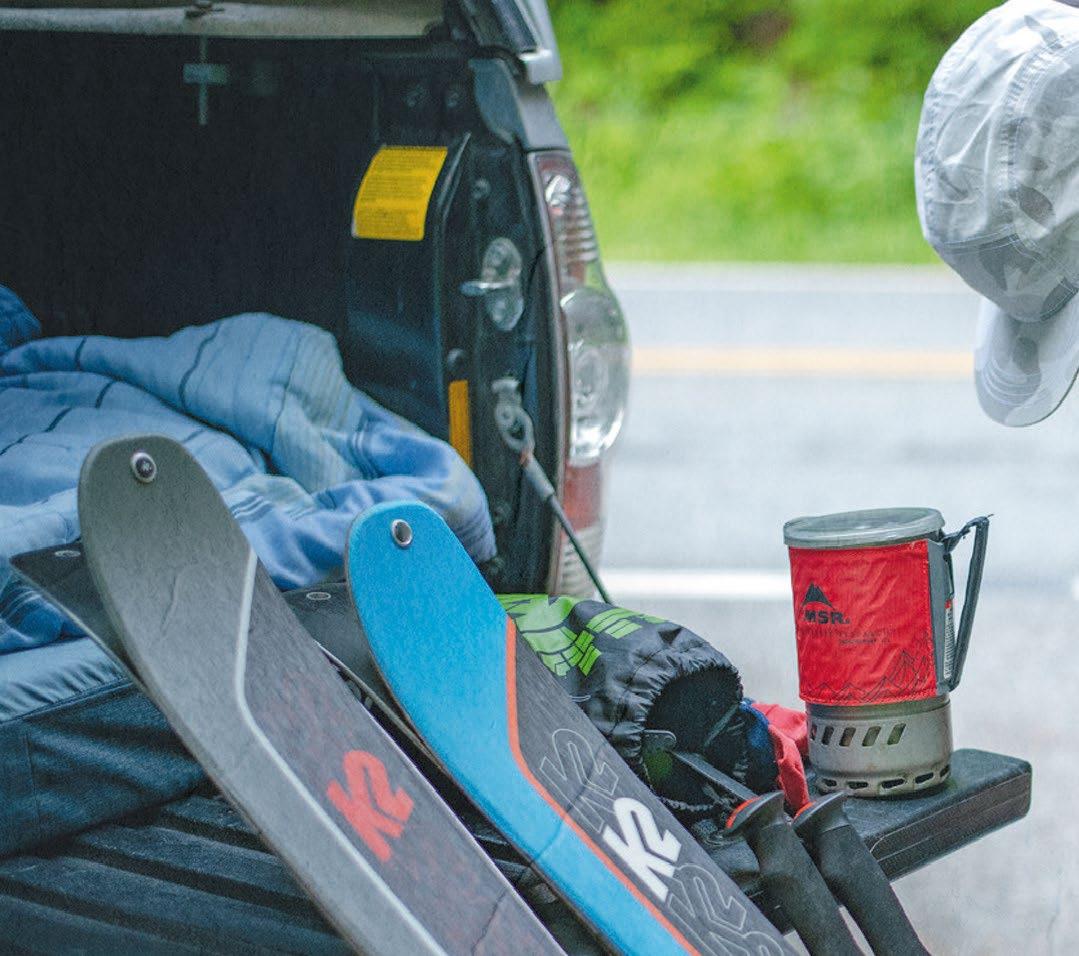








Am 9. Januar 2020 sprachen die französischen Nachrichten über einen neuen Virus namens Covid-19. Zu dem Zeitpunkt war es nur ein kleines Gesundheitsproblem in China, aber am 17. März kam der erste Lockdown. Skigebiete wurden geschlossen und Skifahren durfte man nur innerhalb von 2 Kilometer Luftlinie vom eigenen Zuhause. Wir wurden aufgefordert, diese Anordnung nicht zu verletzen, um das Risiko von Unfällen und damit eine Überfüllung der Krankenhäuser zu vermeiden. Am 12. Dezember verkündete die Regierung, dass die französischen Skigebiete geschlossen bleiben würden. Und es wurde eine Ausgangssperre für 17 Uhr festgelegt. Die Moral der französischen Skifahrer war auf dem Tiefpunkt. Keine Skilifte, keine Aperitifs, keine Restaurants. Aus der Not heraus blieb allen nur noch das Skitourengehen.
On January 9, 2020, the French news talked about a new virus called Covid-19. At that moment it was nothing more than a minor health problem in a city in China, but on March 17, France was hit with its first lockdown. Ski resorts closed and skiers couldn’t go beyond 2 kilometers as the crow flies from their homes. All ski lovers were asked not to infringe this order to avoid the risk of having accidents linked to mountain activities and thus overcrowding hospitals.
On December 12, the government announced that no French ski resort would open its domain and that a curfew was fixed for 5pm. French skiers’ morale was at its lowest, no ski lifts, no aperitifs, no restaurants, so out of necessity ski touring became the obvious solution.
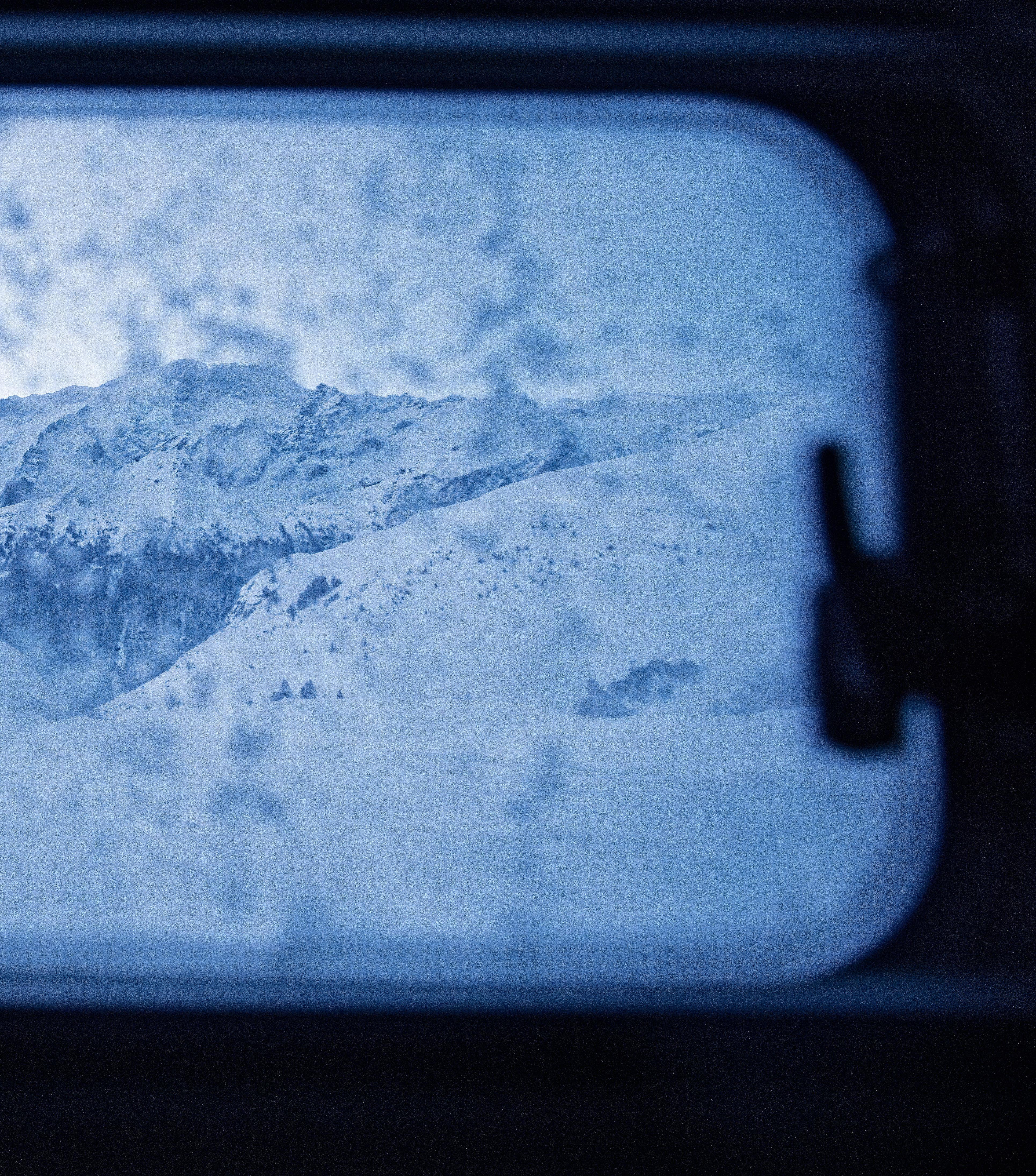
Selbst Skifahrer, die normalerweise einen 120er-Flex-Skischuh gewohnt waren, verfielen langsam, aber sicher dem Skitourengehen. Ausdauersportler tauschten ihre ultraleichten Stretch-Stirnbänder gegen dicke Strickmützen, und Freeride-Enthusiasten wählten Skier mit nicht weniger als 106 mm unter der Bindung und verzichteten auf ihre ultraleichten Bretter, um maximalen Spaß zu haben. Das Klientel am Berg änderte sich schlagartig. Einige Skigebiete markierten Wege für den Aufstieg und Hänge für die Abfahrt, um ein Mindestmaß an Sicherheit zu gewährleisten. Aber das war selten. Der Rest der Skigebiete war einfach verwaist, die Natur hatte die Oberhand gewonnen, die Pisten waren leer. Skigebietskarten gehörten der Vergangenheit an. Jetzt waren es ein Haufen Smartphone-Apps, inklusive GPS-Navigation und Wetter- und Lawinenvorhersagen. Skifahrer mussten neu lernen, die Berge zu lesen, die Himmelsrichtungen und Windrichtungen zu bestimmen, und vieles mehr. Angesichts der surrealen Nachrichten, die uns im Fernsehen und im Internet verfolgten, fühlten wir uns in der Einsamkeit der Berge geschützt. Weit weg von allem und gut aufgehoben. Als ob der Schnee eine Barriere wäre, fast wie ein Covid-Impfstoff. Wir blieben in den Bergen und schlossen die Augen vor der Realität. Unsere Gespräche hielten sich in Grenzen – die neuesten Nachrichten über Covid und die nächste Skitour. Die Krise blieb für uns unsichtbar, bis auf die seltsam einsamen Skigebiete, die uns immer wieder daran erinnerten.

Even skiers who were normally used to a 120-flex ski boot would slowly but surely fall for ski touring. Endurance athletes were swapping their ultralight stretch headbands for thick knit caps, and freeriding enthusiasts chose skis with no less than 106 mm, foregoing those lightweight planks to have maximum fun. The clientele on the mountain changed abruptly. Some resorts marked out trails for the ascent and runs for the descent to ensure a minimum of safety. But that was rare. The rest of the resorts were simply abandoned, nature had taken over, the trails were untouched.

Ski area maps were a thing of the past. Now it was a bunch of smartphone apps, including GPS navigation and weather and avalanche forecasts. Skiers had to relearn how to read the mountains, estimate the cardinal and wind directions, etc.
Facing the surreal news that haunted us on TV and the internet, we, as skiers, felt protected in the solitude of the mountains. Far away from everything and well taken care of. As if the snow was a barrier, like a Covid vaccine. We stayed in the mountains and closed our eyes to reality. How lucky we were to live in remote regions. Our conversations remained rather limited – the latest news about Covid and the next ski tour. The crisis remained invisible to us, except for the strangely lonely ski resorts that kept reminding us of it. When our skiing thirst was quenched, there was a sudden sour taste. The
Als unser Skidurst gestillt war, blieb ein saurer Nachgeschmack. Das Gefühl verstärkte sich so schnell wie eine Lawine. Es mag seltsam klingen, aber inmitten des Lockdowns wollten wir mehr denn je unsere Erfahrungen teilen, uns mit anderen Skifahrern über unsere Abenteuer austauschen. Freundschaften waren das, was wir am meisten vermissten. Der berühmte Satz „No friends on powder days“ wurde schnell durch „Brauche Freund am Tourentag“ ersetzt. Also beschlossen wir, einen Roadtrip zu machen.
Erster Schritt: Die Kalender koordinieren. Jeder dachte, er hätte alle Zeit der Welt, aber das war nicht der Fall, also mussten wir uns für einen Tag entscheiden. Sollten wir auf Powder treffen, großartig, wenn nicht, auch großartig, denn bei diesem dreitägigen Roadtrip ging es nicht ums Skifahren, sondern um das gemeinsame Erlebnis.

Zweiter Schritt: Wegen Corona waren alle Hotels geschlossen. Aber wir hatten zwei Wohnmobile; und wir ziehen diesen Lebensstil jedem Hilton vor. Ein Luxus-Camper und ein Hippie-Van würden vollkommen ausreichen.
Dritter Schritt: Wohin sollte es gehen? Jeder zückte sein Smartphone, und 20 Minuten später wussten wir: Die Hautes Alpes in Frankreich bieten derzeit die besten Bedingungen. Mir war das egal, denn ich wollte einfach nur mit meinen Freunden in einem Wohnmobil sitzen.
Als wir um 17 Uhr auf einem Parkplatz ankamen und beschlossen, eine Sonnenuntergangstour zu machen (ohne die geringste Hoffnung auf einen
feeling grew stronger with the speed of an avalanche. It may sound strange, but amid the lockdown and all the restrictions, we wanted more than ever to share our experiences, to exchange adventures with other skiers. Friendships were what we missed the most. The famous phrase “No friends on powder days” was quickly replaced with “Need a friend on a touring day.” So, we decided to go on a road trip.
First step: Coordinate the calendars. Everyone thought they were completely available, but that wasn’t the case, so we had to decide on a day. If we hit powder, great, if not, also great, because this three-day road trip was not about skiing, but for the company.
Second step: Because of Covid, all hotels were closed. But we had two campervans - and prefer this lifestyle to any Hilton. A luxury camper and a hippie van should be perfectly sufficient.
Third step: Where should we go? Everyone pulled out their smartphones, and 20 minutes later we knew: the Hautes Alpes in France currently offer the best conditions. I did not really care, because I just wanted to be locked in a campervan with my friends.
Arriving at a random parking lot at 5pm and deciding to do a sunset tour –without the slightest hope of a sunset, but with the certainty of freezing to
Sonnenuntergang, aber mit der Gewissheit, zu frieren und auf superschlechtem Schnee zu fahren...), setzte Hektik ein und alle checkten ihre Ausrüstung. Es fühlte sich ein bisschen so an, als wären wir im Fahrerlager der Tour de France! Nachdem wir fast den ganzen Tag im Auto gesessen waren, wollten wir endlich gemeinsam auf Skitour gehen.
Ein Roadtrip ist eigentlich ganz einfach: Autofahren, Skifahren, essen, schlafen, wiederholen... Es war aufregend, frühmorgens loszufahren, um einen super Platz zum Skifahren zu finden und dann abends wieder weiterzufahren, um einen super Platz zum Schlafen zu finden. Auch wenn wir dabei nicht gerade den Kontinent durchquerten, gab uns dieser Roadtrip immer das Gefühl, echte Abenteurer zu sein, die etwas Außergewöhnliches tun – das Ziel am Ende egal. Ich habe in meinem Leben bereits drei Roadtrips nach Skandinavien zum
death and skiing on super bad snow... we all got into a frenzy and checked our gear. It felt a bit like being in the paddock of the Tour de France! After sitting in the car for most of the day, we all couldn’t wait to finally go on a ski tour together.
A road trip is actually quite simple: drive, ski, eat, sleep, drive, ski, eat, sleep.... Still, it was exciting to leave early in the morning to find a super spot to ski and then hit the road again in the evening to find a super spot to park and sleep. Even though we didn’t exactly cross the continent in the process, this road trip always gave us the feeling that we were adventurers doing something out of the ordinary – in the end, the destination didn’t matter.
I have taken three road trips to Scandinavia in my life for skiing and base

Skifahren und Basejumpen gemacht, und ich muss sagen, dass diese Fahrt nur 300 Kilometer von meinem Zuhause entfernt den gleichen Effekt auf mich hatte: ein Gefühl von Abenteuer, von Freiheit. Was dieses kleine Abenteuer außergewöhnlich machte, war, dass wir uns die Zeit nahmen, es gemeinsam zu erleben.

Wir waren vier Freunde auf dieser wundervollen Reise durch die Alpen: Jeremy Prevost, ein Freeride World Tour-Teilnehmer, leidenschaftlicher Skifahrer, Skitourengeher und Kletterer, immer gut gelaunt und vor allem unser Luxuskoch. Mathieu Navillod, Mr. Elegance, ehemaliger BuckelpistenWeltcupfahrer und Präsident einer Umweltorganisation. Dom Daher, mit dem ich die Welt bereist habe, ein talentierter Fotograf, der immer bereit ist, sich in jedes Abenteuer zu stürzen und der ursprünglich nicht einmal seine Kamera
jumping, and I have to say that driving only 300 kilometers away from my home had the same effect on me: a feeling of adventure, of freedom. And what made this little adventure extraordinary was that we took the time to experience it together.
zOn this wonderful trip through the Alps, we were four friends: Jeremy Prevost, a skier on the Freeride World Tour, a passionate skier, ski tourer and climber, always in a good mood and above all, our luxury chef. Mathieu Navillod, Mr. Elegance, former moguls World Cup skier and activist/president of an environmental organization. Dom Daher, with whom I have traveled the world, a talented photographer always ready to jump into any adventure – who initially didn’t even want to bring his camera on this trip, but just
mitnehmen, sondern nur das Zusammensein mit seinen Freunden genießen wollte. Am Ende war es gut, dass er sie mitgenommen hat. Und als Krönung des Ganzen: ich selbst. Der langsamste Bergsteiger, aber mit der Ausrede, eine riesige Drohne tragen zu müssen.
Rückblickend – auch wenn die Wirtschaft in diesen beiden Wintern einen Sturzflug machte und niemand weiß, wie wir zur Art Normalität zurückkehren können – hat uns Covid deutlich gemacht: Die Berge sind wunderschön. Vor allem, wenn man sie mit seinen Freunden teilt!
wanted to enjoy being with his friends. In the end, it was a good thing he did bring it. And to top it all off, myself. The slowest climber, but with the excuse of carrying a huge drone.
With all the necessary hindsight, even though the economy took a nosedive during those two winters and no one knows how we’ll return to some kind of normality, Covid confronted us with a tremendous reality: The mountains are beautiful. Especially when you share them with your friends!

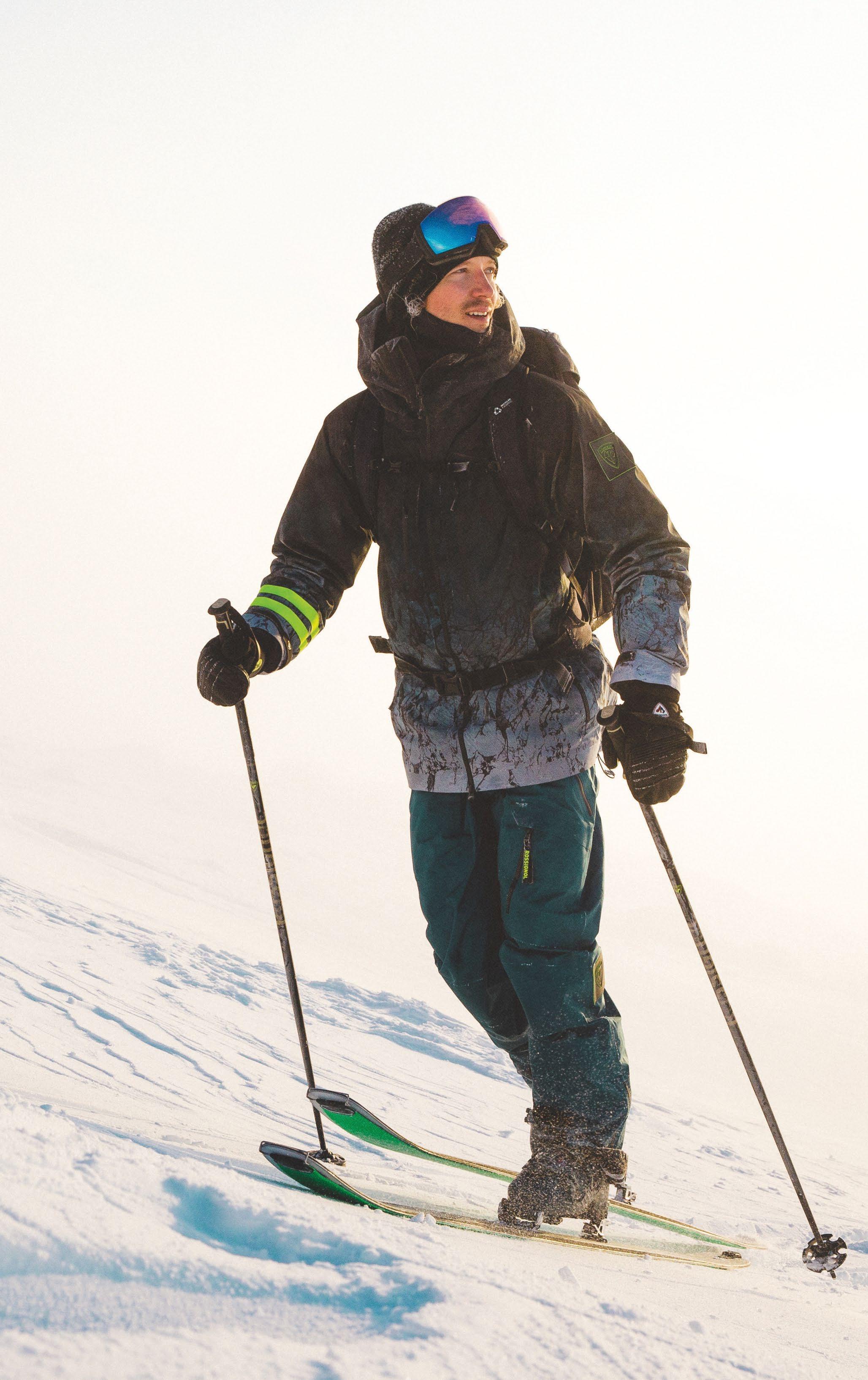







Wir schreiben den 27. September und befinden uns auf 2.400 Metern Höhe im Karwendel. Drinnen ein frischer Luftzug. Draußen ein starker Sturm. Kleine Schneekristalle rieseln mir ins Gesicht. Es ist kalt. Bitterkalt. Ich kann meinen Atem sehen und höre, wie große Schneeflocken an die gefrorene Zeltwand trommeln. Umgeben von Dunkelheit erhellt meine Stirnlampe den Raum. Neben mir liegt mein bester Freund, Fabian Johann, eingehüllt in einen dicken Schlafsack. Wir sind Zwillingsbrüder und professionelle Backcountry-Ski Fotografen aus dem Salzburger Land. Warum sind wir hier? Was treibt uns an und wo soll es hingehen?
It is September 27, and we are at 2,400 meters above sea level in the Karwendel Mountains. A fresh breeze is passing through our tent. Outside, the storm is raging. Tiny snow crystals trickle down my face. It’s cold. Bitterly cold. I can see my breath and hear large snowflakes drumming against the frozen tarp of the tent. Surrounded by complete darkness, my headlamp lights up the room only where I turn my head. Next to me rests my best friend, Fabian Johann, sheltered inside his thick sleeping bag. We are twin brothers and professional backcountry ski photographers from Salzburger Land. Why are we here? What drives us? And where are we going?

Fabian: Kannst du dich noch daran erinnern, wie wir zur Ski Fotografie gekommen sind?
Christoph: Als könnte ich das vergessen! Wir waren damals schon viel am Berg unterwegs und wollten die Abenteuer festhalten. Anfangs haben wir Bilder mit dem Smartphone gemacht. Das wurde mit der Zeit zu langweilig und vor gut sieben Jahren haben wir gemeinsam eine Profikamera gekauft. Vermutlich eine der besten Entscheidungen unseres Lebens! Ich kann mich noch sehr gut an den ersten Tag damit am Berg erinnern.
Fabian: Lang ist‘s her. Wo ging es damals nochmal hin?
Christoph: Ins Tannheimer Tal. Es hatte über die Nacht 30 Zentimeter geschneit und am Morgen war keine einzige Wolke am Himmel. Die Bedingungen hätten besser nicht sein können. Wir waren den ganzen Tag im Gelände und haben wie wild fotografiert. Du hast am Nachmittag ein beeindruckendes Bild von mir gemacht. Eine Geländekante, ein Schwung und staubender Schnee. Am Abend saßen wir völlig sprachlos am Laptop. Ich denke, dieses Erlebnis hat unser Leben geprägt und langfristig verändert. Es war nicht nur ein Bild, sondern ein Wegweiser.
Was bedeutet die Ski Fotografie für dich?
Fabian: Mir geht es darum, Emotionen und Momente für die Ewigkeit festzuhalten. Ich will Menschen für die Natur begeistern. Sie sollen aus ihrem Alltag gerissen werden und die Situation spüren. Ich spreche vom Gefühl der puren Freiheit.
Fabian: Do you remember how we got into ski photography?
Christoph: As if I could forget! We were already spending a lot of time in the mountains at that time and wanted to capture our adventures. In the beginning, we took pictures with our smartphones. Over time that became too boring, and a good seven years ago we bought a professional camera. Probably one of the best decisions of our lives! I can still remember very well the first day with that camera on the mountain.
Fabian: It’s been a long time. Do you still remember where we went?
Christoph: To the Tannheim Valley. It had snowed 30 centimeters overnight, and there wasn’t a single cloud in the sky in the morning. The conditions were perfect. We were out in the backcountry all day taking pictures. You took a magic picture of me, in the afternoon. A turn with the perfect spray. In the evening, we sat at the laptop, utterly speechless while editing the image. I think this experience shaped our lives and changed them in the long run. It was not just a picture; it showed us the way.
How do you see ski photography?

Fabian: I’m all about capturing emotions and moments for eternity. I want people to become enthusiastic about nature. I want them to be torn out of their everyday life and feel the moment. I’m talking about this feeling of pure
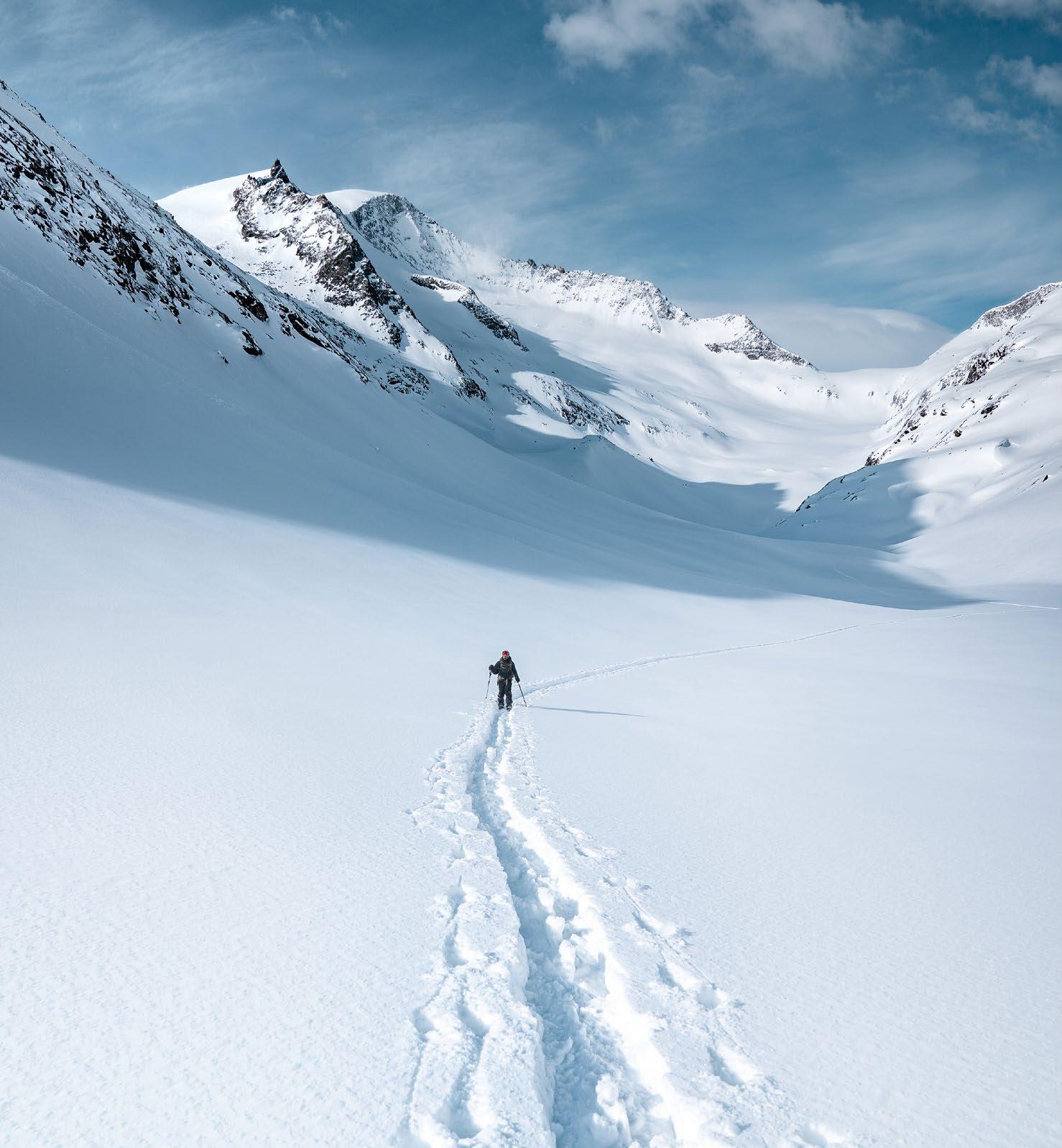
Das Gefühl, die eigene Komfortzone zu verlassen und ein Abenteuer zu wagen. Das Gefühl, wenn du die Kraft der Natur spürst. Eindrucksvoll und gewaltig, fast ehrfürchtig. Für mich als Fotograf steckt natürlich noch viel mehr hinter einem Foto. Gerade, wenn ich dafür leiden musste. Eiskalte Finger, starker Wind oder tiefer Schnee. Es ist das Erlebnis, das das Foto ausmacht. Das versuche ich visuell zu transportieren. Was denkst du darüber?
Christoph: Ich denke genauso. Immerhin sind wir gemeinsam an dieser Aufgabe gewachsen und haben voneinander gelernt. Jedes Foto war ein Lernprozess, das ist auch heute noch so und wird wohl nie aufhören. So wächst man als Fotograf. Ich finde es wahnsinnig spannend, dir beim Fotografieren und Skifahren zuzusehen. Mich begeistert der gemeinsame Prozess des Lernens und die Entwicklung unseres Stils. Es sind sicher auch die Menschen, die ein Foto für mich ausmachen. Menschen, die ich auf den Abenteuern kennenlernen darf. Athleten, die eine Leidenschaft teilen, dafür alles geben und manchmal auch zu viel riskieren. Menschen aus den verschiedensten Kulturen. Jeder völlig anders. Ernst, zielorientiert, albern, tiefsinnig, lustig oder inspirierend. Sie alle sind Künstler auf Skiern. Diese Kunst gilt es festzuhalten. Was war dein prägendstes Erlebnis am Berg? Fabian: Eine schwierige Frage. Da fällt mir einiges ein. Weißt du noch damals, am Arlberg? Es hatte für mehrere Tage heftig geschneit, knapp zwei Meter
freedom.The sense of leaving your comfort zone and going on an adventure. Feeling the power of nature. Impressive and overwhelming, almost aweinspiring. For me, as a photographer, of course, there is much more to a photo. Especially when I have to suffer for it. Frozen fingers, strong wind, or deep snow. It’s the experience that makes the photo. That’s what I try to convey visually.
How do you feel about it?
Christoph: I feel the same way. After all, we grew and learned from each other in the process. Every photo was a learning process; that’s still the case today and will never be any different. That’s how you mature as a photographer. I find it insanely exciting to watch you take photos and ski. I get excited about the process of learning together and developing our style. It’s undoubtedly also about the people. People I get to meet on our adventures. Athletes who share a passion, who give everything for it, and sometimes risk too much. People from different cultures. Each one completely different – serious, focused, silly, profound, funny or inspiring. They are all artists on skis. This is the kind of art that I think needs to be captured.
What was your most formative experience on the mountain?
Fabian: A difficult question. A few things come to mind. Do you remember, back at the Arlberg? It had snowed heavily for several days, almost two

Neuschnee, und es war durchgehend kalt. Ich denke, das war einer meiner besten Tiefschneetage. Du hast ein Bild gemacht, das auch heute noch zu meinen Favoriten zählt. Auf dem Foto tauche ich bis zum Kopf in den Schnee ein. Besser hätte ein Bild den Tag nicht beschreiben können. Gibt es Orte, an denen du unbedingt noch fotografieren willst?
Christoph: Ich habe schon viel gesehen. Chamonix, Whistler, Innsbruck, Revelstoke,Verbier, die Dolomiten. Ein Wunschort geht mir allerdings nicht aus dem Kopf: Haines, Alaska. Entlegene Gipfel, malerische Landschaften und diese “Spines”. Dramatischer kann ein Kulisse kaum sein. Nach unserem Alaska-Trip 2018 war ich infiziert. Mich inspiriert die raue Natur. Wilde Flüsse, endlose Gletscher und beeindruckende Berge. Ein grenzenloser Spielplatz für Ski Fotografen – und natürlich würde ich auch selbst gerne eine Abfahrt wagen.
meters of fresh snow, and it was freezing cold. I think that was one of my best powder days. You took a picture that is still one of my favorites. In the photo, I’m submerged up to my head in the snow. Bottomless pow! Nothing could have described this day better than this picture.

Are there any places you still want to visit and photograph?
Christoph: I am very thankful that I have seen many epic locations already – Chamonix, Whistler, Innsbruck, Revelstoke, Verbier, the Dolomites. But there is one place I can’t get out of my head: Haines, Alaska. Remote peaks, picturesque landscapes, spines.There’s hardly a more dramatic backdrop.After our 2018 trip to Alaska, I was hooked. I’m inspired by rugged nature. Wild rivers, endless glaciers and awe-inspiring mountains. It’s a limitless playground for ski photographers – and of course, I’d love to ski some lines myself.
Was macht denn ein gutes Foto für dich aus?
Fabian: Dazu gehören viele Faktoren. Ich denke, eine gute Location ist die Grundlage. Hierfür muss ich im Voraus planen. Wie wird das Wetter? Wie ist die Lawinensituation? In welcher Exposition liegt der gute Schnee? Wo sind Gefahrenstellen? Wann stehen Licht und Schatten richtig? Wo soll der Athlet fahren? Vor Ort muss ich dann ständig im Kontakt mit dem Athleten sein, auf die Komposition achten, auf Wetteränderungen reagieren, meine eigene Position bestimmen und die richtigen Kameraeinstellungen wählen. Es ist komplex, zeitintensiv und oft auch stressig. Wenn es gelingt, entsteht ein sehr gutes Foto. Weitaus spannender finde ich es aber, wenn etwas Unerwartetes passiert. Wenn Nebel aufzieht und eine besondere Lichtstimmung entsteht. Der Moment, wenn man eine neue Linie entdeckt.
So what makes a good photo for you?
Fabian: There are many factors involved. I think a good location is most important. That requires some planning in advance. What will the weather be like? What is the avalanche situation? Where do we find the good pockets? Where are the dangerous spots? When are lighting and shadow at their best? Which line should the skier pick? Then, on location, I have to constantly communicate with the athlete, pay attention to the composition, react to weather changes, determine my own position and choose the correct camera settings. It’s complex, time-consuming and often stressful. When it all works out, the result will be a very good photo. But I find it far more exciting when something unexpected happens. When fog rolls in and a special atmosphere is created. The moment when you discover a new line.

Wenn der Fahrer nach seiner Abfahrt auf dich zufährt und vor Freude schreit. Dann entsteht ein unglaubliches Foto!
Wie stellst du dir denn die Zukunft vor?
Christoph: Täglich dreißig Zentimeter Neuschnee, Sonnenschein und unverspurte Hänge! Man darf ja träumen, oder? Aber ich möchte auf jeden Fall weiterhin so viel Zeit wie möglich in den Bergen verbringen und Kunst erschaffen. Mir ist wichtig, dass ich meine wertvolle Zeit mit einem Beruf verbringe, der mich erfüllt. Am wichtigsten ist mir jedoch, dass wir weiterhin gemeinsam unterwegs sind, Erfahrungen sammeln, uns gegenseitig motivieren und inspirieren, Ideen umsetzen oder uns einfach nur in einem Zelt am Berg unterhalten. Du und ich!
When the skier approaches you after his run and screams with joy. That’s when you take an amazing photo!

Do you have a specific wish for what the future should hold for you?
Christoph: Thirty centimeters of fresh every day, bluebird and untracked couloirs! Nice, but maybe not realistic. But I definitely want to continue spending as much time as possible in the mountains and creating art. It’s important to me that I spend my time doing a job that fulfills me. Most important to me, though, is that we continue to travel together, gathering experiences, motivating and inspiring each other, turning ideas into reality, or just talking to each other in a tent on the mountain. Just you and me!


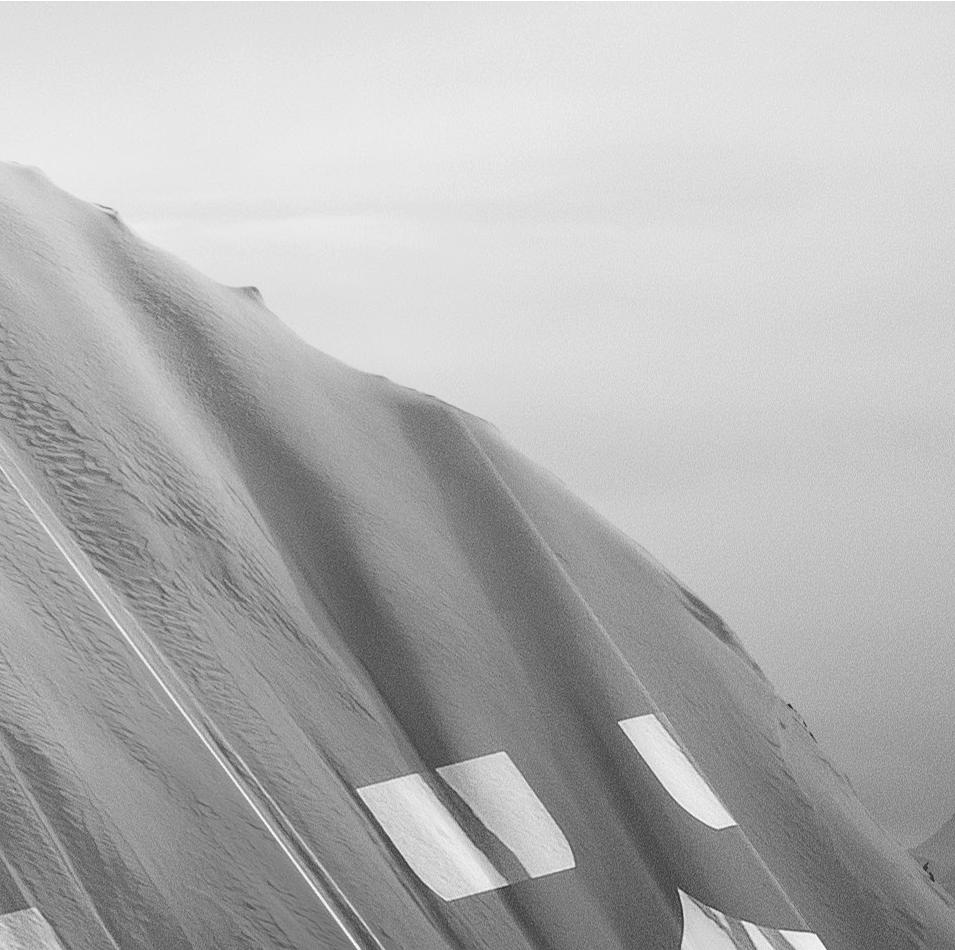
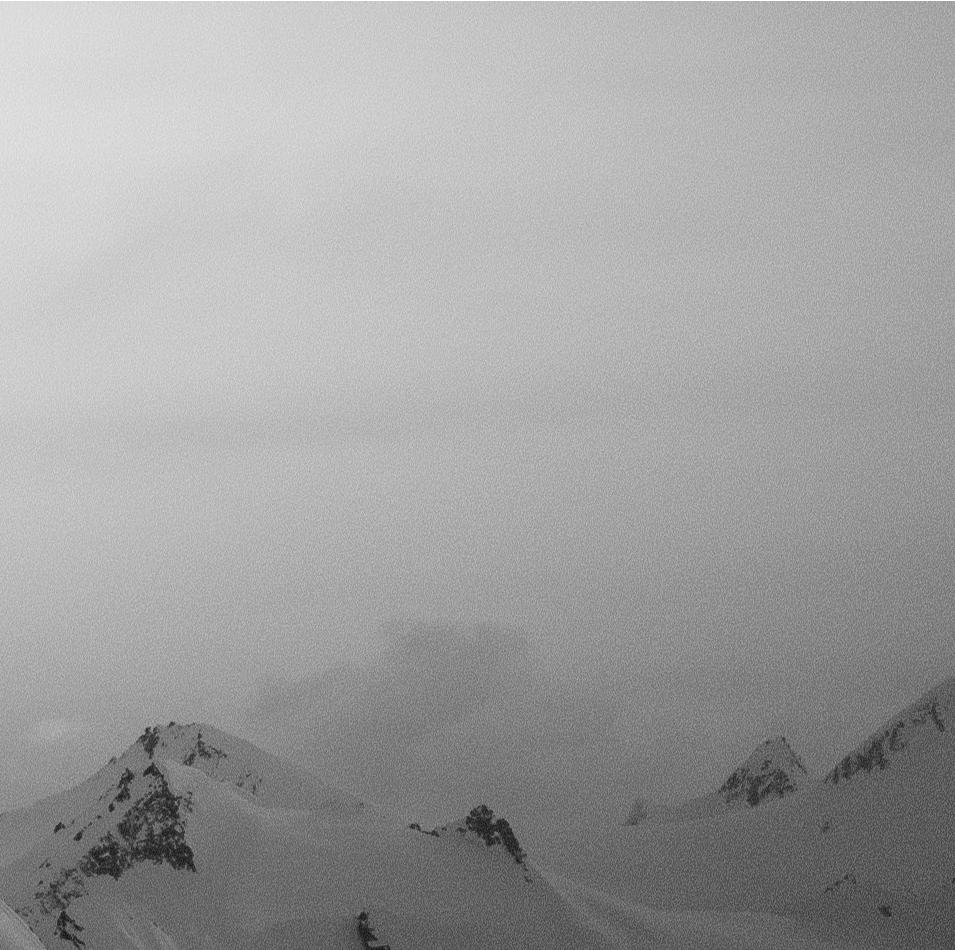

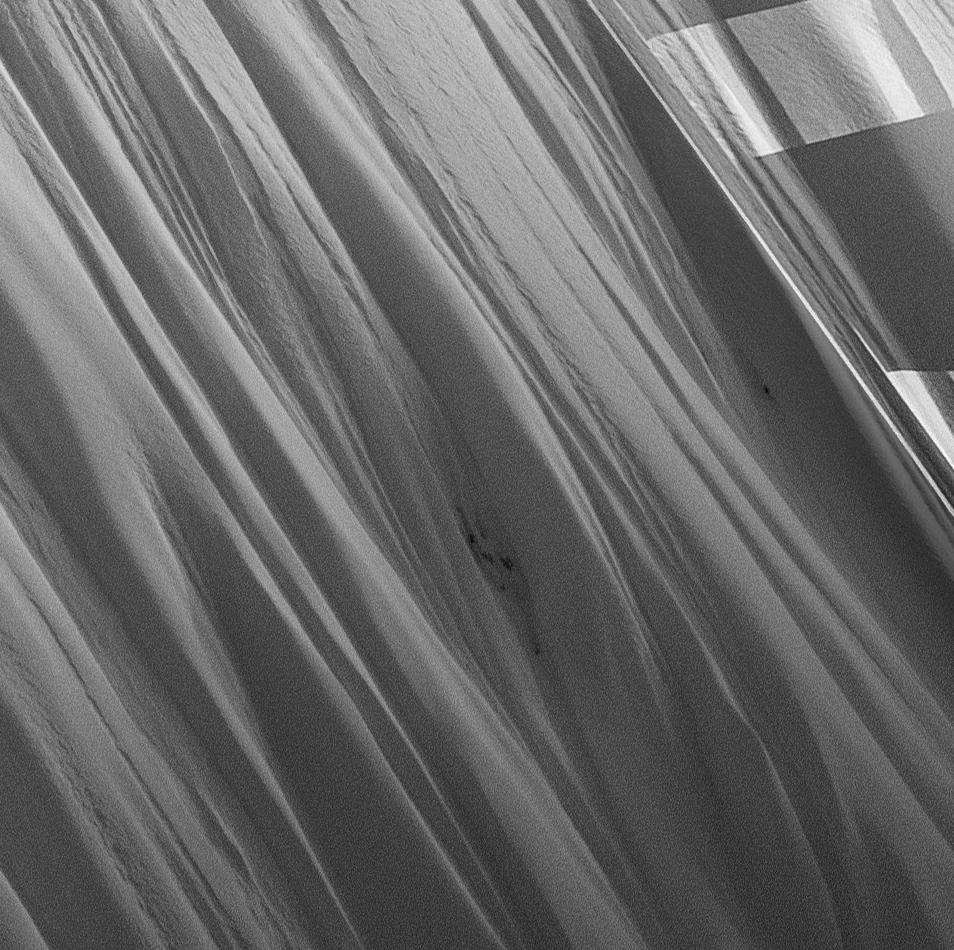
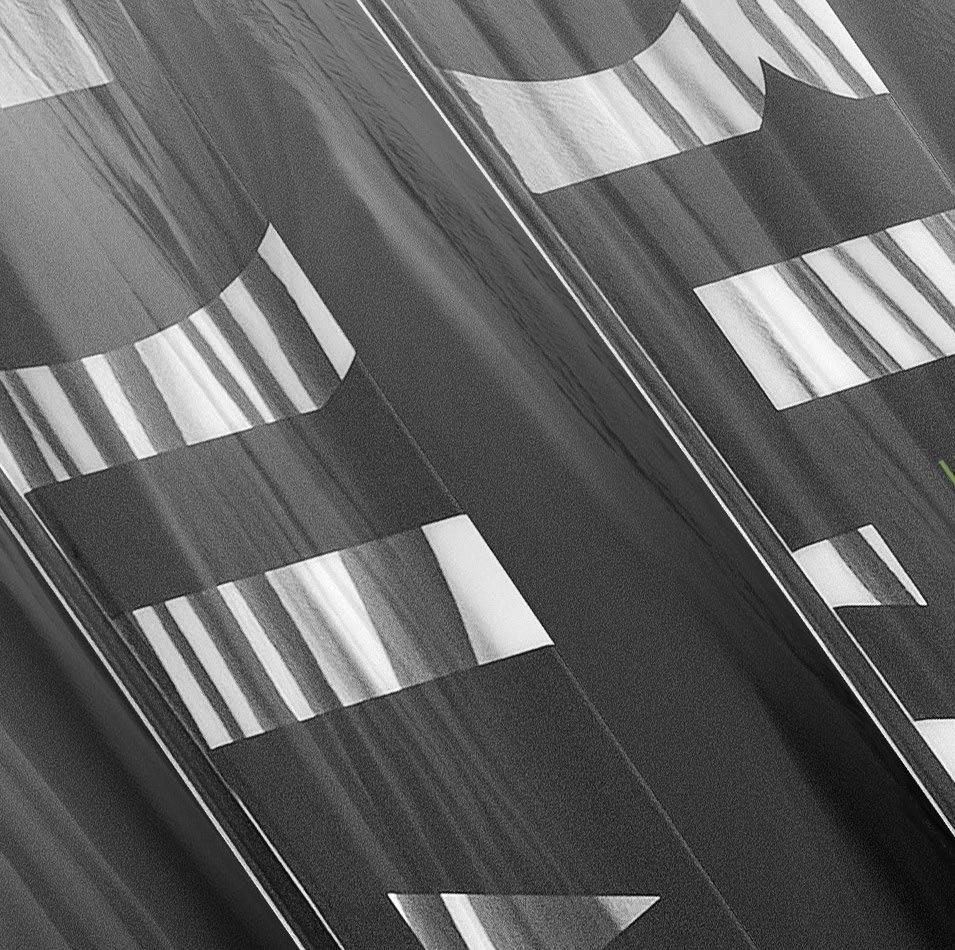


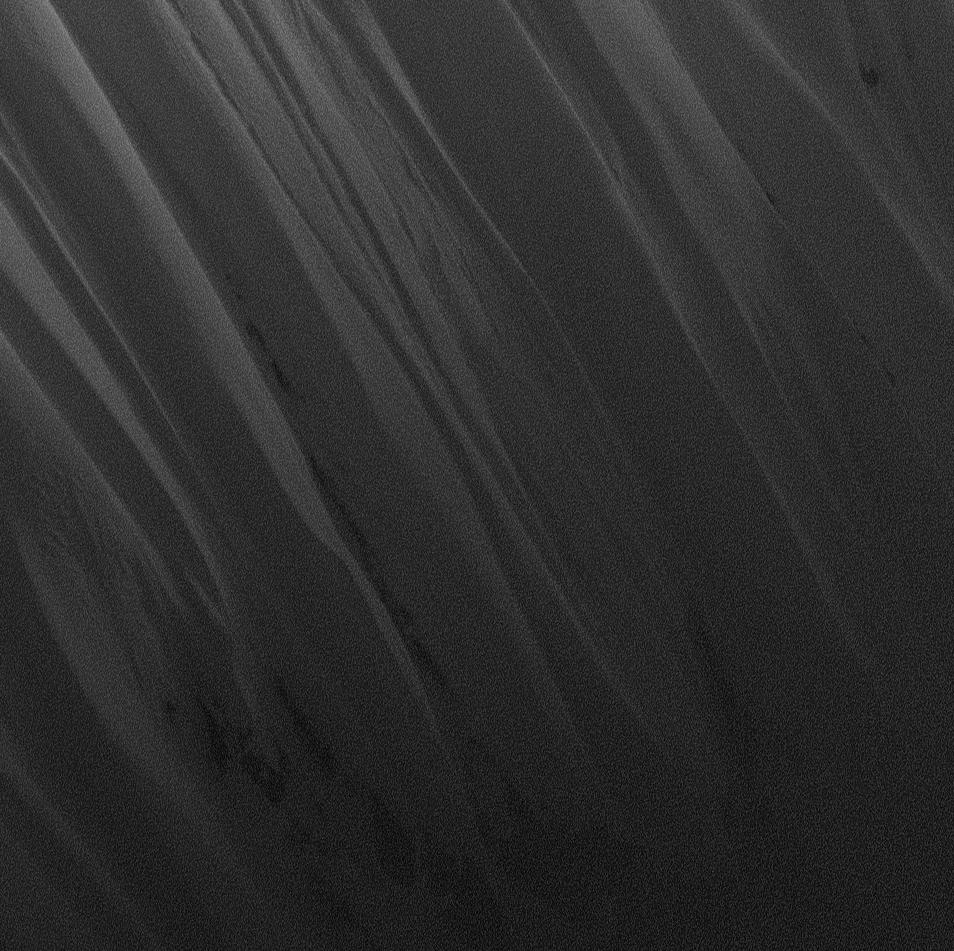
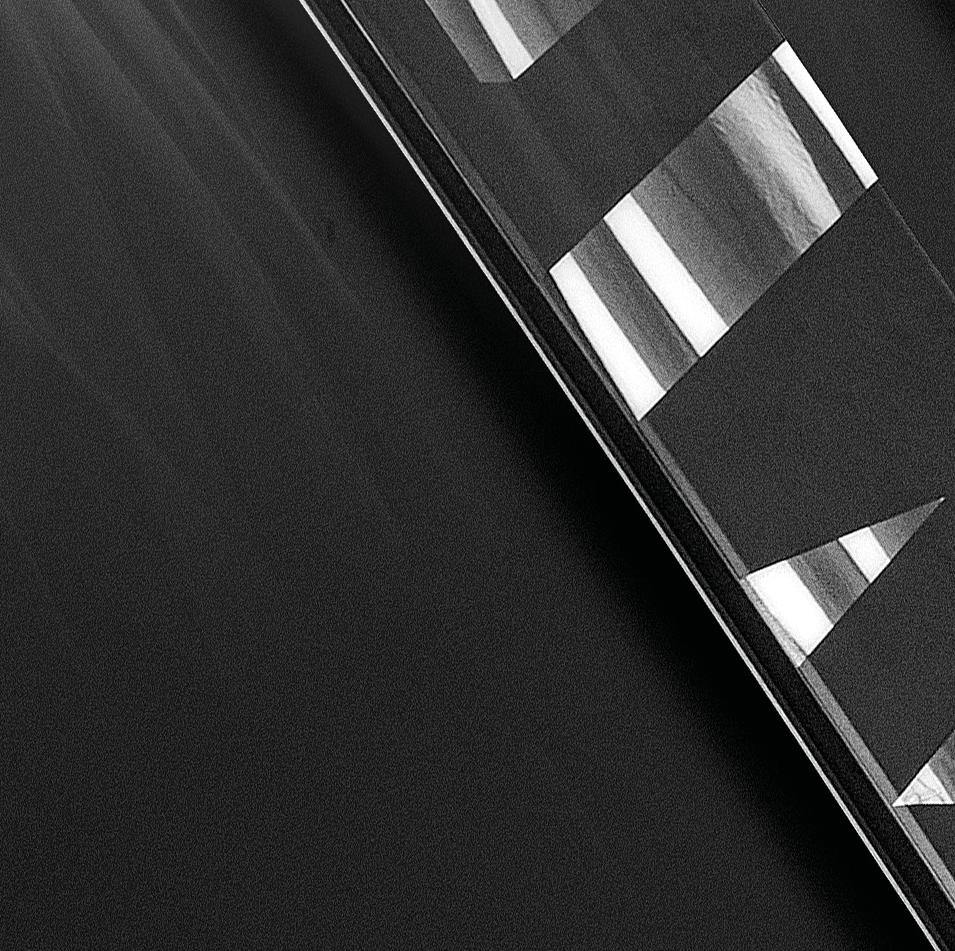
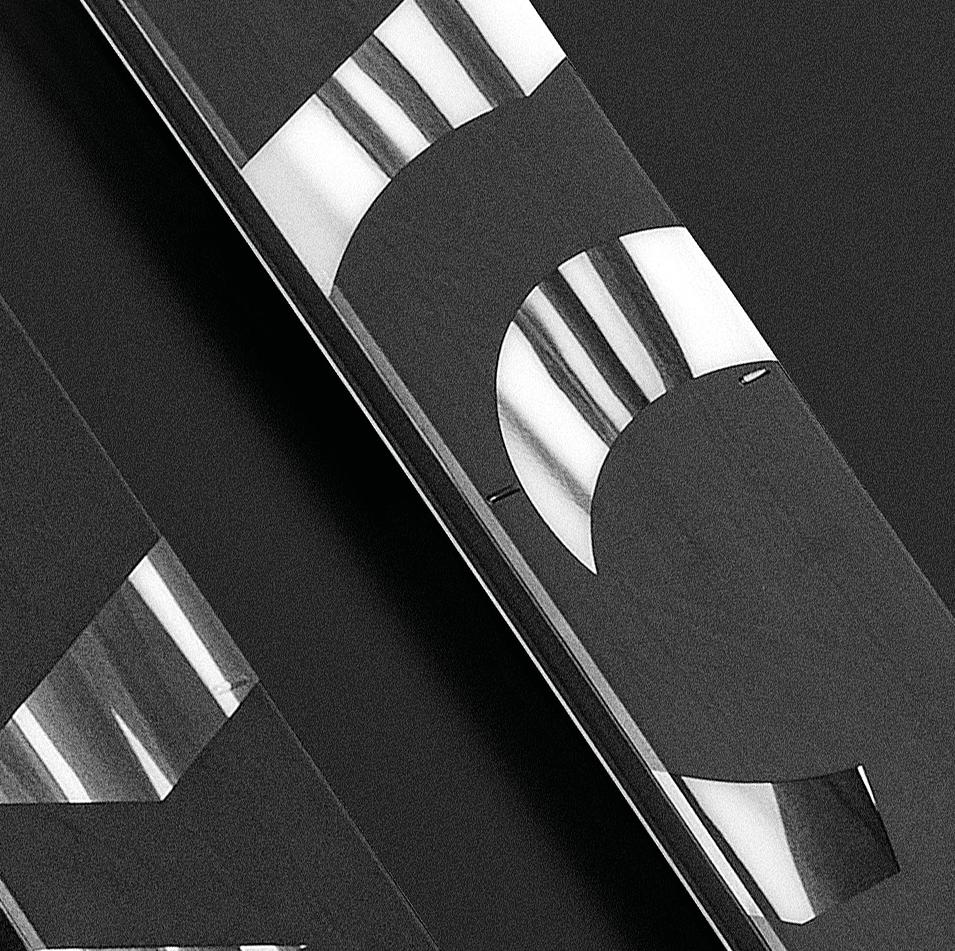


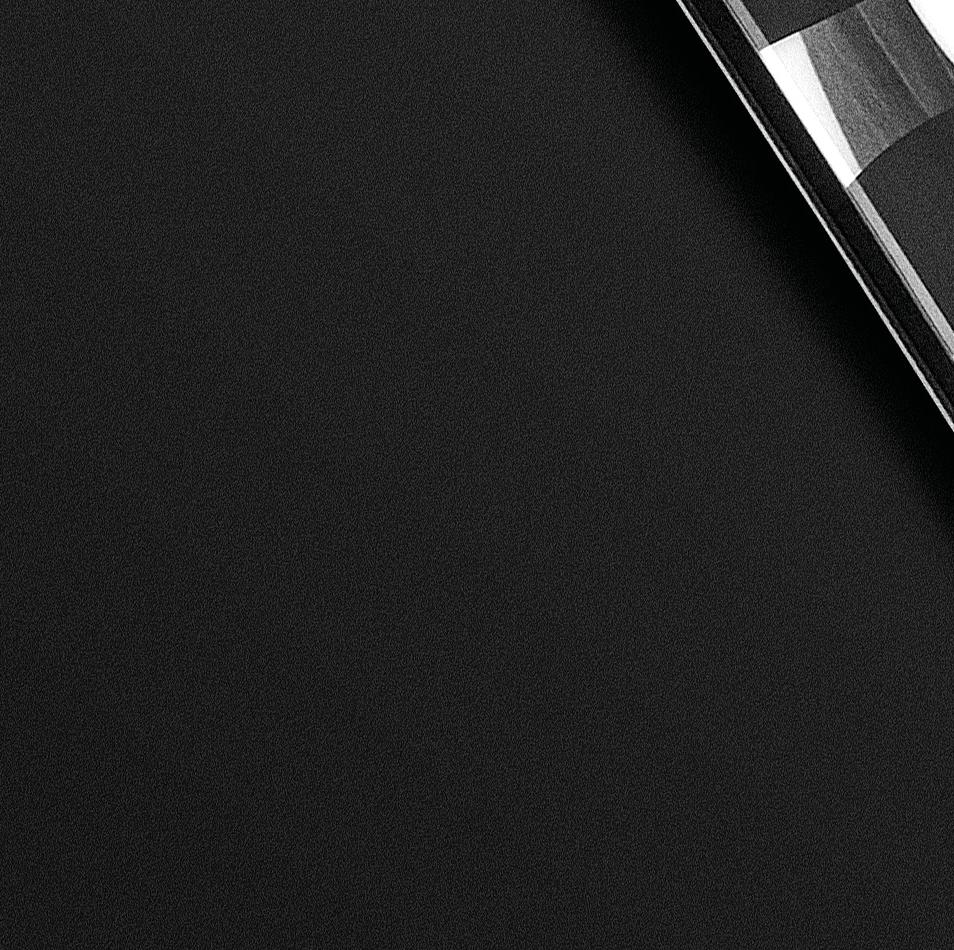
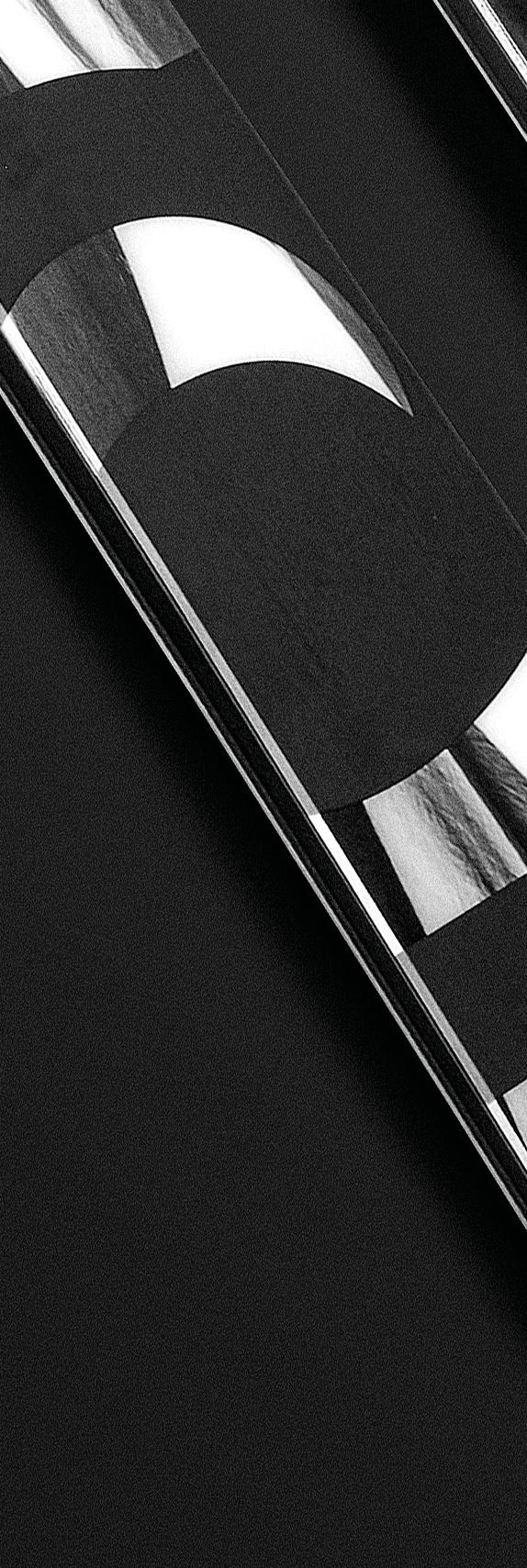



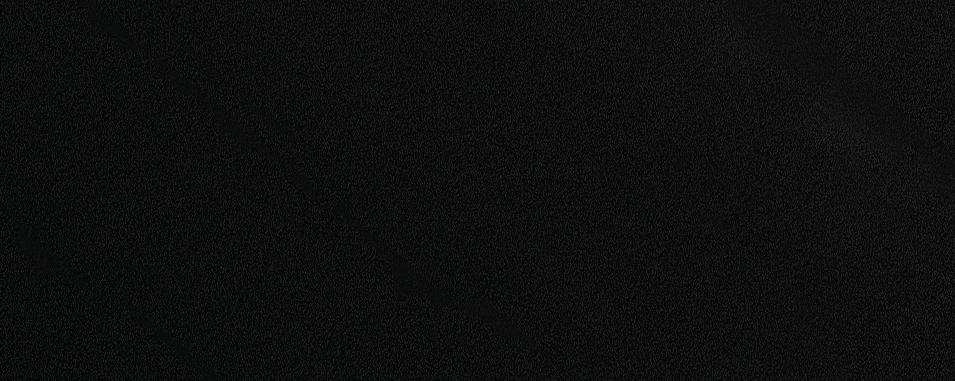



„Kein Problem, mein Bus hat Allrad!“ Diese euphorischen Worte von Johannes sind längst verklungen. Meter für Meter versuchen wir, die frisch eingeschneite Zufahrtsstraße zum Parkplatz hochzukommen. Von Allrad ist nichts zu merken. Liegt vielleicht daran, dass der Bus auch gar keinen hat. Also ab auf die Felle. Wir sind irgendwo zwischen Innsbruck und Garmisch, quasi in der Mitte zwischen Jois und unserem Zuhause. Wir wollen ein paar Nächte in einem Winterraum bleiben. Also haben wir ordentliche Rucksäcke geschultert, gefüllt mit Essen und Kameras. Alles was nicht mehr reingepasst hat, ist außen angebunden: Hier baumelt ein Sack Zwiebeln am Rucksack, dort steckt ein Baguette in der Skihalterung.
“No problem, my van has four-wheel drive!” Johannes’ euphoric words have long since faded away. Meter by meter, we try to make it up the freshly snowed-in access road to the parking lot. But there is no sign of four-wheel drive. Maybe that’s because the van doesn’t have any. So off we go on our skis and skins. We are somewhere between Innsbruck and Garmisch, more or less in the middle between Joi’s and our home. We want to spend a few nights in a winter room. We shoulder huge backpacks, filled with food and cameras. Everything that didn’t fit in the packs is tied to the outside: There’s a bag of onions dangling from one backpack, a baguette sticking from the bottle holder of another.

Noch haben wir Zweifel, was die kommenden Tage angeht. Hinter uns liegen warme Wochen und regnerische Tage. So war aufgrund der mageren Schneebedingungen die Wahl der Hütte das A und O – und gar nicht so einfach: Entweder sah die Gegend vielversprechend aus, aber kein Winterraum vorhanden, oder die Hütte war perfekt, nur die Schneeverhältnisse grausig. Warum die Ansprüche? Unser Ziel ist es, die Art des Skifahrens zu zeigen, wie man es aus den klassischen Ami-Skistreifen kennt: steile Spines, tiefe Treeruns, dicke Pillows, alles in einer gigantischen Landschaft. Nur mit dem entscheidenden Unterschied, dass alles bei uns daheim in den Bergen direkt ums Eck liegt und auf Heli und sonstiges Trara verzichtet wird. Eben so simpel wie möglich.
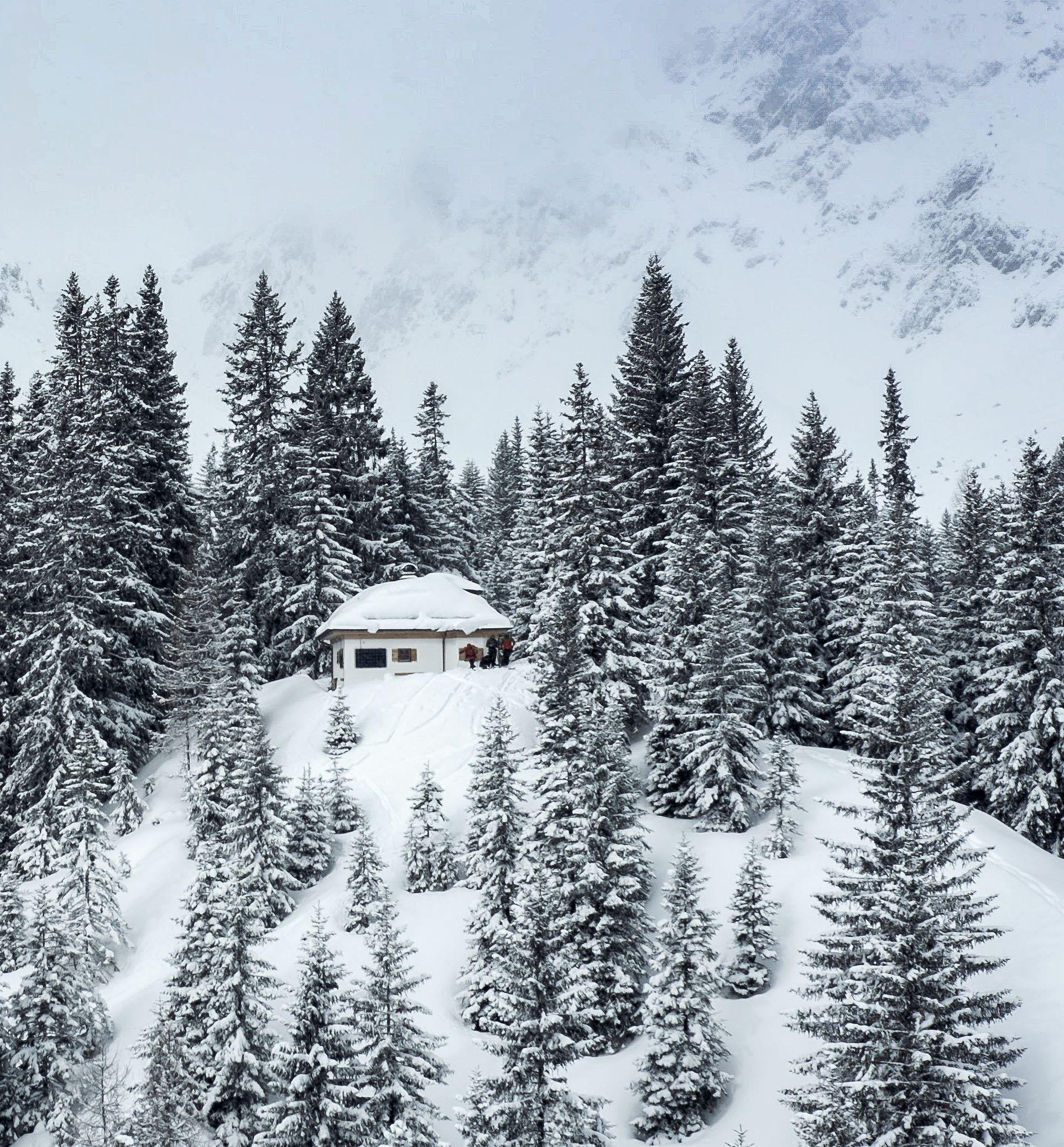
Oben angekommen sind wir überrascht: Statt einen kleinen Winterraum betreten wir eine Hütte mit Küche, Badezimmer und einem geräumigen Bettenlager. Hier lässt es sich aushalten. Einheizen, Wasser holen, kochen, genießen! Morgen wollen wir früh raus mit der Option, einen ersten Run im Sonnenaufgang zu erwischen. Fürs Foto wäre das bestimmt richtig gut, aber Andi, unser Fotograf, ist noch nicht da.
Als wir dann in der Früh um 4 Uhr Kaffee machen, fällt uns die Kinnlade runter: Andi steht in der Tür, möchte kein Müsli, dafür aber einen doppelten Espresso. Er sei gestern Abend nach einem Foto-Job in der Schweiz noch gleich in unsere Richtung gehetzt und ist durch die Nacht erstmal an der Hütte vorbei,
We still have doubts about the following days. We had some warm weeks and rainy days. So, because of the meager snow conditions, the choice of the hut was the be-all and end-all – and not easy: either the area looked promising, but there was no winter room available, or the hut was perfect, only the snow conditions were horrible. Why the requirements? Our goal is to show the kind of skiing you know from the classic American ski flicks: steep spines, deep tree runs, thick pillows, and all of it in the middle of a gigantic landscape. With the difference that everything is right around our corner – here in the Alps, with no helicopters or any other unnecessary stuff. Just as simple as possible.

Once we reach the place, we are surprised: Instead of a small winter room, we enter a hut with a kitchen, a bathroom and a spacious dorm. Not a bad spot to hang out. Start a fire, get water, cook, enjoy! Tomorrow, we want to set out early, with the option to catch the first run in the sunrise. That would also be great for some action shots, but Andi, our photographer, is not here yet.
When we make coffee at 4 am, our jaws drop: Andi is standing in the doorway, doesn’t want any cereal but a double espresso instead. After yesterday’s photo job in Switzerland, he immediately got in the car and drove in our direction, climbed the mountain in the dark and first went past
denn unsere Spuren waren wieder zugeschneit. Irgendwann so um 1 Uhr hat er sie dann doch gefunden, also vor drei Stunden. Im Schein der Stirnlampen dackeln wir das Tal hinauf. Als es anfängt zu dämmern, bricht Hektik aus. Wer fährt welche Linie? Wo steht die Kamera? Wer darf als erstes fahren? So hat auch das Rennen gegen die Sonne begonnen. In steilen Spitzkehren geht es dem Gipfel entgegen. „Wo war nochmal mein Drop-in?“ Jetzt aber schnell. Felle abziehen, Skischuhe zuknallen und … bam! Die Sonne geht auf, alle sind bereit. Unter uns eröffnet sich das reinste Paradies: Frischer Traumschnee bei Sonnenschein und ausgesetzte Spines. Als wir drei der Reihe nach bei den Filmern eintrudeln, könnten die Glücksgefühle nicht größer sein. Alle sind happy. Doch da meldet sich Andi übers Funkgerät: Er wollte die ganze Szenerie von oben aus fotografieren, doch wir haben es total verpasst, ihm ein Zeichen zu geben. Naja, dann halt noch mal hoch, es ist noch früh genug. Nach dem zweiten Run ziehen Wolken auf und es geht zufrieden zurück zur Hütte. Irgendwie sind wir froh, so können wir ruhigen Gewissens ein zweites – für Andi erstes – entspanntes Frühstück genießen. Als Joi die Uno-Karten auspackt, fängt es an zu schneien. Genau so haben wir uns das vorgestellt. Nachmittags schwärmen einige wieder aus. Jochen hat einen Kicker-Spot gefunden, Joi eine Pillow-Line zwischen den Bäumen entdeckt.
Am nächsten Morgen finden wir unsere Skier unter gut 30 Zentimetern
the hut, as our tracks were already hidden by fresh snow. Sometime around 1 am, he eventually found the place. That was three hours ago.
In the glow of our headlamps, we climb the valley. As dusk begins to fall, we all get hectic. Who is skiing which line? Where is the camera? Who gets to go first? And so the race against the sun begins. In steep kick turns, we rush towards the summit. “Do you remember where I wanted to drop in?“ Hurry now! Skins off, boots tightened and .... boom! The sun rises, everyone is ready to go. Below us, we get a view of true paradise: fresh powder, sunshine, and exposed spikes.
When the three of us arrive at the cameramen’s position one after the other, bliss couldn’t be greater. Everyone is happy. But then Andi calls us on the radio: He wanted to photograph the whole scene from above, but we totally forgot to give him a sign. Well, let’s hike back up; it’s still early enough to do another. After the second run, clouds are moving in and we head to the hut, fully satisfied. With a clear conscience, we can enjoy a second relaxed breakfast. As Joi brings out the Uno playing cards, it starts to snow. That’s exactly how we imagined it. In the afternoon, some of us head back out again. Jochen found a perfect spot for a kicker; Joi discovered a pillow line in the trees.
The next morning, we find our skis under a good 30 centimeters of fresh

Neuschnee. Sehr gut! So geht es direkt aus der Schlafposition in die Skiposition – wortwörtlich! Direkt vor der Hütte verbringen wir einen perfekten Tag mit vielen kurzen, aber spaßigen Runs. Der Tag vergeht so schnell, dass wir tatsächlich fast den Kicker vergessen, den Jochen abends geschaufelt hatte. „Jetzt aber schnell, gleich wird es dunkel!“ Ohne Speed Check rauscht Jochen los. Von oben sieht es aus, als wäre er im Bachbett gelandet. So schwer waren Speed und Richtung einzuschätzen. „Schneller!“ ruft er hinauf. Max geht noch ein paar Meter hoch, schiebt ordentlich an und landet seinen 7er knapp neben Johannes, der mit der Kamera in der Hand erschrocken mit offenem Mund hinterhergafft. Noch zwei Hits für jeden, dann ist das Licht bereits wieder schlecht. Ohne Speed Check, mit kurzer Landung und komplett blinder Anfahrt sind wir happy, alles gelandet zu haben, und freuen uns darauf, die
snow. Great! We go directly from sleeping position to skiing position –literally! Right in front of the hut, we spend a perfect day with many short but fun runs. The day goes by so fast that we almost forget about the kicker that Jochen shaped in the evening. “Hurry up now; it’s about to get dark!” Without a speed check, Jochen drops straight in. From above, it looks like he’s going to land in a creek bed. That’s how hard it is to estimate speed and direction. “Go faster!” he shouts back up to us. Max hikes up some additional meters, pushes hard and lands his 7 just beside Johannes, who gasps at him, camera in hand, startled and open-mouthed. Two more hits for everyone, then the light is turning bad. Without a speed check, with a short landing and a completely blind approach, we are happy to have landed everything and look forward to seeing the pictures. Unfortunately, there
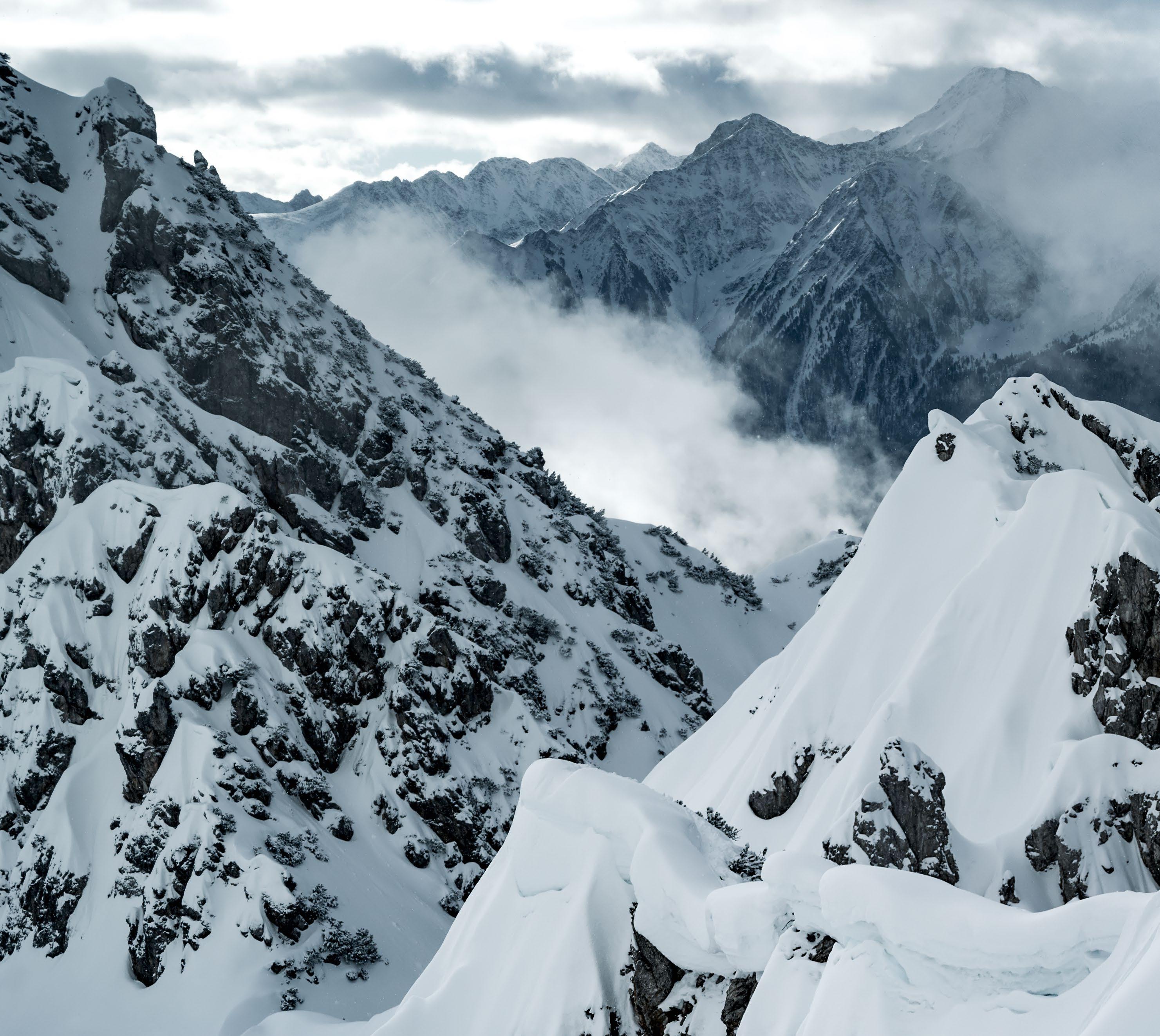
Bilder zu sehen. Leider gab es keine gute Perspektive und später wird es die Aktion nicht in den Film schaffen. So ist das eben manchmal!
Neuer Tag, neues Glück. Wir starten wieder im Schein der Stirnlampe in Richtung Spines. Von der Sonne ist nichts zu sehen, denn es schneit noch ordentlich. Laut Wetterbericht soll es ab neun Uhr allerdings schön werden. Die wahrscheinlich einzige Wolke in der Gegend, so kommt es uns zumindest vor, hängt unbewegt über uns. „Los geht’s, mach dich bereit, in 30 Sekunden kommt ein Wolkenloch!“ Schuhe noch offen, den Mund voll mit Müsliriegel, keine Handschuhe an, voll im Stress. „Ah, nein! Doch nicht!“ Und so geht es dahin. Joi und Max haben genug von der Warterei und verziehen sich in das Rinnensystem nebenan. Doch irgendwann kommt das angekündigte

was no good perspective, and none of it will make it into the movie later on. Not the first time, and probably not the last.
Another early morning, another fortune. We start hiking again, towards the spines and in the light of our headlamps. No sign of the sun; it’s still dumping. According to the weather forecast, however, it should be nice from 9 o’clock. We envision what is probably the only cloud in the entire area sitting in the sky, motionless above us. “Let’s go, get ready; there’s a hole in that cloud in 30 seconds!” Boots still open, mouths full of granola, no gloves, totally stressed. “Ah, no way!!” Chill, there’s no hole. The cloud is stuck, motionless. And so it goes. Joi and Max are tired of waiting and venture into the couloirs around the corner. Eventually, the “hole in the cloud” does
Wolkenfenster doch noch. Kurz darauf stellt Jochen seinen Trick direkt vor die Kamera. Joi und Max kommen auch zum Fahren, so hat sich der „Schlechtwettertag“ doch noch rentiert.
Wehmütig packen wir nach einem langen Wochenende unsere Sachen und dürfen ein letztes Mal auf die Skier und zurück ins Tal wedeln.Wie sich rausstellen wird, war es nicht nur für uns die zeitlich letzte Chance. Covid-19 steht vor der Tür. Und so wird die Botschaft, die wir über den Film transportieren wollten, für die nächste Zeit zur Selbstverständlichkeit: „A few steps from home”.

come. Jochen sticks his trick right in front of the camera. Joi and Max also return to take advantage of light and contrast. At the end of it, the day turns out great.
Reluctantly, we pack our bags after the extended weekend and ski back down to the valley one last time. As it turns out, this would not be just our last opportunity to ski for a while. Covid-19 is just around the corner.
Accordingly, the message we intended to convey with the film becomes a matter of course for the upcoming months and all of us: “A few steps from home.”
Der FORNIX MIPS, der unerreichte und einzigartige All-MountainHelm. Er hat Skifahrer und Snowboarder auf der ganzen Welt geschützt und begeistert. Mit perfekt aufeinander abgestimmten Features, Design und Technologie wurde er nun weiterentwickelt, um eine neue Generation von Wintersportlern zu beeindrucken.
FORNIX MIPS – Ein echter Influencer, seiner Zeit voraus.

Eine neue und fortlaufende Serie von Gemälden, die sich mit Gletschern befasst.
Momente im Leben eines Gletschers, Momente, die jetzt bereits vergangen sind. Ein Moment in der Zeit einer sich ständig verändernden Landschaft. Eine Erin nerung an die Erde.
Diese Serie ist Teil des Connection Project der in Aus tralien geborenen Künstlerin Jessie Pitt und basiert auf dem Grundsatz, dass es wichtig ist, sich daran zu erinnern, dass wir ein Teil der Erde sind; wir sind nicht davon losgelöst. Jede Aktion hat eine Reaktion zur Fol ge; wir sind Teil dieses Prozesses. Und wir sollten diese Tatsache nicht ignorieren.
Um zu verstehen, wie schnell die Gletscher schrump fen, empfehlen wir diesen Auszug aus einem Artikel der Österreichischen Akademie der Wissenschaften (OeAW) aus dem Jahr 2019: „Im Jahr 2006 betrug das Gesamtvolumen der Glet scher in Österreich knapp 15,9 km³. Das würde aus reichen, um ganz Österreich mit 16 cm Wasser zu bedecken. Im Jahr 2016 hatten Österreichs Gletscher aber bereits ein Fünftel ihrer Eismasse verloren“, er klärt OeAW-Bergforscher Kay Helfricht. „Der neue Ansatz bestätigt damit den durchschnittlichen Verlust an Gletschereis von rund einem Meter Eisdicke pro Jahr.“
www.oeaw.ac.at/en/detail/news/austrias-glacial-iceshrank-by-a-fifth-in-ten-years
Glacier 1 198 x 138 cm

A new and ongoing series of paintings focused on glaciers.

Moments in a glacier’s life, moments that are now already past. A moment in Time of an ever-changing landscape. An Earth memory.
This series is a part of Australian-born artist Jessie Pitt’s Connection Project and is based on the prin ciple that it is essential to remember that we are a part of Earth; we are not separate. Every action has a reaction; we are a part of this process. We shouldn’t ignore this fact.
To help understand the rate that the glaciers are re treating, we suggest this excerpt from an article pub lished by the Austrian Academy of Sciences (OeAW) in 2019:
„In 2006, the total volume of glaciers in Austria was just under 15.9 km³. This would be enough to cover the whole of Austria with 16 centimeters of water. But by 2016, Austria’s glaciers had already lost a fifth of their ice mass“, explains OeAW mountain researcher Kay Helfricht. „The new approach thus confirms the average loss of glacial ice of around one meter of ice thickness per year.“
www.oeaw.ac.at/en/detail/news/austrias-glacial-iceshrank-by-a-fifth-in-ten-years
Daron Rahlves kennt das Wort Ruhestand nicht wirklich. Sicher, er zog sich 2006 nach einer langen, erfolgreichen Karriere vom Rennsport zurück, aber er hat nie wirklich aufgehört. Stattdessen probierte er so viele verschiedene Arten des Skifahrens wie möglich aus. Er nahm an den X Games teil, gründete die Rahlves Banzai Tour, drehte in Alaska und anderswo Skifilme und begann mit dem Backcountry-Skifahren.
Jetzt ist er sogar als freiwilliger Such- und Rettungshelfer für Notfälle in der Wildnis rund um seine Heimatstadt Truckee, Kalifornien, tätig. „Was mich so lange in diesem Sport gehalten hat, ist die Leidenschaft, mit der ich neue Dinge auf meinen Skiern lerne“, sagt er. „Es gibt so viele Arten des Skifahrens. Und es gibt noch so viel für mich zu lernen.“
Retirement isn’t really a word Daron Rahlves understands. Sure, he retired from racing in 2006 after a long and decorated career on the U.S. Ski Team, but he didn’t exactly call it quits. Instead, he set out to learn and excel in as many different ski styles as he could. He competed in ski cross at the X Games, launched the Rahlves Banzai tour, filmed in Alaska and elsewhere with ski movie companies like TGR, Warren Miller or Matchstick Productions, and got into backcountry skiing. He now even serves as a volunteer search and rescue responder for wilderness emergencies around his hometown of Truckee, California. “What’s kept me in the sport for so long is the passion I have for learning new things on skis,” he says. “In skiing, the disciplines are many. There’s still so much for me to learn.”


Es ist Februar in Tahoe, und ein gewaltiger Sturm hat gerade über Nacht 50 Zentimeter Schnee in der Sierra Nevada hinterlassen. Gegen 16 Uhr kommt Daron Rahlves von einem Powder-Tag nach Hause, als er die Nachricht erhält, dass ein Snowboarder im Skigebiet von Sugar Bowl, einem Ort, den er besser kennt als jeder andere, vermisst wird. Als Freiwilliger bei Tahoe Nordic Search and Rescue ist es seine Aufgabe, die Suche nach Vermissten im Hinterland zu koordinieren und durchzuführen. In dieser Nacht, inmitten des stärker werdenden Schneesturms, brechen er und andere Freiwillige in der Dunkelheit auf und bahnen sich ihren Weg durch den knöcheltiefen Schnee. „Ich dachte mir: ‚Lasst mich spuren, lasst mich vorgehen‘“, erinnert sich Rahlves. „Ich wusste, dass die Zeit drängt und jemand unsere Hilfe braucht.“ Um Mitternacht finden sie den vermissten Boarder – verängstigt und frierend, aber am Leben. Für Rahlves ist die Rettungsarbeit nur ein weiterer Schritt in seiner lebenslangen Entwicklung als Skifahrer; eine Möglichkeit, der Community, die er liebt, etwas zurückzugeben, aber auch, sich selbst zu beschäftigen und herauszufordern.
Rahlves begann schon als Kind mit Skirennen in Tahoe. Aber er war nie jemand, der einen Powder-Tag ausließ. „Ich konzentrierte mich zwar auf den Rennsport, aber bei jeder Gelegenheit ging ich zum Freeriden“, erzählt er. Als Teenager ging er in eine Skiakademie in Vermont. Mit 19 wurde er Mitglied des US-Skiteams und gehörte damit zur Elite vielversprechender junger Rennfahrer, die auf dem
It’s February in Tahoe, and a massive storm just walloped the Sierra Nevada range, dropping 50 centimeters overnight. Around 4 p.m., Daron Rahlves is getting home from a powder day at Homewood ski area when he gets a notification on his phone that a snowboarder has gone missing off the backside of Sugar Bowl ski area, his home resort and a place he knows better than anyone. As a volunteer with Tahoe Nordic Search and Rescue, it’s Rahlves’ job to help coordinate and participate in a search for people who go missing or get injured in the backcountry. So that night, amidst a mounting blizzard, he and other volunteers, including a snowcat with additional crew members, set off into the darkness, breaking trail in thigh-deep snow. “I was like, ‘Let me break trail, let me go, let me be the workhorse,’” Rahlves recalls. “I knew time was of the essence, and someone needed our help.” By midnight, the missing rider was located – scared and cold but very much alive. For Rahlves, helping others in the backcountry is just another step in his lifelong progression on skis. It’s a way to give back to the community he loves, but it’s also a way to keep himself engaged and challenged.
Rahlves got his start as a kid, growing up ski racing in Tahoe. But he was never one to miss a powder day. “I was definitely focused on ski racing, but any chance I had, I would go out freeskiing,” he says.
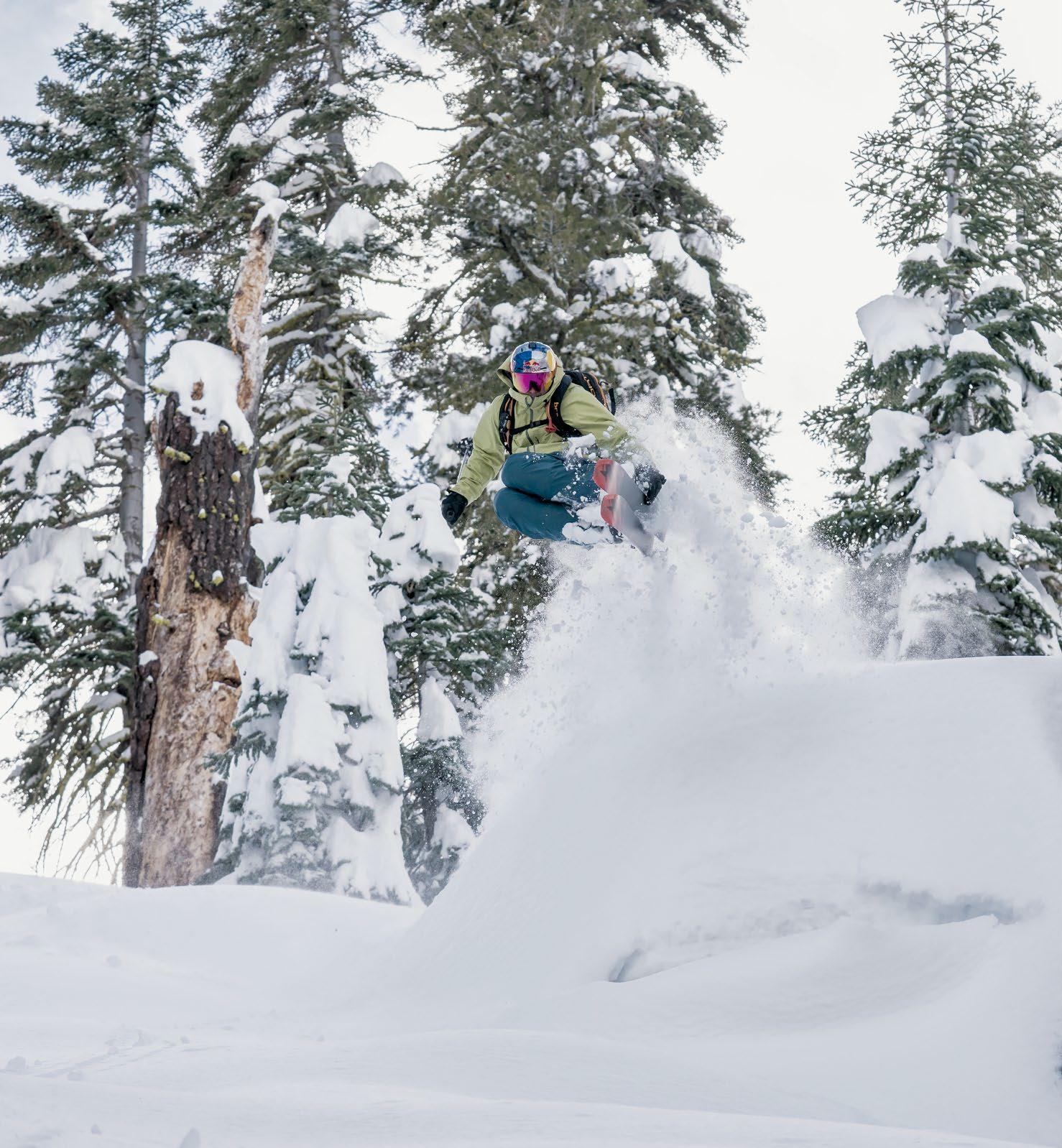
By his teenage years, he enrolled in a ski academy in Vermont. By 19, he joined

Weg zu olympischem Ruhm waren. „Im Skirennsport dreht sich alles um die Zeit“, sagt er. „Man versucht, so schnell wie möglich zu sein; zu sehen, wer am schnellsten unten ist. Das war immer mein Ziel.“ Seine Schnelligkeit verhalf ihm zu vielen Erfolgen. Er bleibt einer der erfolgreichsten amerikanischen Rennläufer aller Zeiten. Rahlves stand in 28 Weltcuprennen in Abfahrt, Super-G und Riesenslalom auf dem Podium – darunter 12 Weltcupsiege – und holte eine Goldmedaille im Super-G bei der WM 2001 sowie zwei Medaillen bei der WM 2005. Er nahm an vier Olympischen Winterspielen teil. 2003 gewann er die Streif, die oft als das gefährlichste Rennen im Skirennsport bezeichnet wird, und war damit der erste Amerikaner, der das Rennen seit 1959 gewann.
Als er beschloss, zurückzutreten, war er auf dem Höhepunkt seiner Karriere. „Es ist immer schwer aufzuhören. Ich habe mich nicht vom Rennsport zurückgezogen, weil ich ausgebrannt oder zu langsam war. Ich hatte eine starke Saison hinter mir“, sagt er. „Für viele war das verrückt. Aber ich wollte etwas anderes ausprobieren. Und eine Familie gründen, nicht mehr so viel unterwegs sein.“ So zog er sich 2006 vom Rennsport zurück, konnte sich aber nicht lange vom Wettkampf fernhalten. Er kehrte in das US-Team zurück, um im Skicross anzutreten, und gewann schließlich 2008 Gold bei den X Games. „Die Leute sagten, ich würde meinen Ruf ruinieren und den Hintern versohlt bekommen. Aber ich sagte: ‚Das ist mir egal. Es sieht nach Spaß aus. Ich will es
the U.S. Ski Team, joining an elite rank of promising young racers bound for Olympic glory. “In ski racing, it’s all about the clock,” he says. “You’re trying to work with the mountain to go as fast as possible and see who can be the fastest one down. That was always my goal.” Speed carried him through many successes on the team. He remains one of the most accomplished American downhill racers of all time. Rahlves stood on 28 World Cup podiums in downhill, super-G and giant slalom, including 12 World Cup wins, and earned a super-G gold medal at the 2001 World Championships, plus two medals at the 2005 World Championships. He raced in four Olympic Winter Games. In 2003, he won the infamous Hahnenkamm Downhill, often called the most dangerous race in ski racing, becoming the first American to win that event since 1959.
He was at the peak of his career when he decided to step away. “It’s always tough to go. I wasn’t stepping away from ski racing burned out or skiing slow. I came off a strong season,” he says. “People said I was crazy for quitting then. But I wanted to try something different. One of those things was to start a family, and I didn’t want to be on the road so much with a family at home.” So, he retired from ski racing in 2006, but Rahlves couldn’t stay away from competition for long. He returned to the U.S. team to compete in ski cross, eventually winning X Games gold in in 2008. “People told me I was going to ruin my reputation and get my butt whipped on the ski cross track.

ausprobieren‘“, so Rahlves. „In diesem ersten Jahr stürzte ich in jedem Finale, aber ich liebte es.“ Im folgenden Jahr begann er, erste Rennen zu gewinnen.
Schon bald reiste er nach Alaska und Kanada, um mit Matchstick, Teton Gravity Research, Rage Films, Warren Miller oder Sweetgrass zu filmen. Für seinen Beitrag in MSP’s „In Deep“ von 2010 gewann er die „Best Line“ bei den Powder Awards. „Ich habe viel von der Filmarbeit gelernt, aber ich kam an einen Punkt, an dem das Risiko zu groß wurde“, so Rahlves. Zu diesem Zeitpunkt hatten er und seine Frau bereits Zwillinge – Sohn Dreyson und Tochter Miley wurden 2007 geboren. „Als meine Kinder klein waren, fragte ich mich: Was mache ich da eigentlich? Warum gehe ich dieses ganze Risiko ein?“ Ab dieser Zeit verbrachte er so viel Zeit wie möglich zu Hause in Truckee

I said, ‘I don’t care. It looks fun. I want to try it,’” Rahlves says. “I crashed in every final that first year, but I loved it.” By the following year, he started to win some races.
Soon, he began traveling to Alaska and Canada to film with major ski companies like Matchstick Productions, Teton Gravity Research, Rage Films, Warren Miller and Sweetgrass Productions, winning Best Line at the Powder Awards for his segment in MSP’s 2010 “In Deep.” “I learned a lot from working with those film crews, but I got to the point where it was too much risk,” Rahlves says. By that time, he and his wife had twins – their son, Dreyson, and daughter, Miley, were born in 2007. “When my kids were little, I was like, what am I doing? Why am I taking all this risk?” He spent as much time at home in Truckee as he could, and it was there that he launched
und rief dort seine eigene Veranstaltung ins Leben, das Rahlves Banzai, das alle Skidisziplinen vereint, die er liebt: Abfahrt trifft Big Mountain trifft Skicross. Er begann auch, das Backcountry vor seiner Haustür zu erkunden, erforschte neue Gebiete und entwickelte sich weiter. „Heute versuche ich, einen Ausgleich zu schaffen und mir meine Schwünge zu verdienen,“ sagt er. „Ich fahre weniger Pisten; ich fahre an Orten, die wirklich einzigartig sind; an denen nicht viele Leute sind.“ Er betrachtet das Gelände immer noch wie ein Rennfahrer und Freerider. „Ich habe immer noch viel Spaß daran, kreativ im Gelände zu sein. Ich denke immer: Wie kann ich den Berg so gut wie möglich nutzen und eine einzigartige Linie finden?“
Auch seine Kinder, inzwischen 13 Jahre alt, zieht es ins Backcountry. Im letzten Winter machten sie gemeinsam mit ihrem Husky Zoe eine Skitour zum
his own event, the Rahlves Banzai, which combined all the ski disciplines he loved most. Picture ski race meets big-mountain contest meets ski cross. He also started exploring the backcountry right out his door, discovering new areas and evolving his skiing style into a whole new discipline. “These days, I like to balance it out and earn my days on the mountain,” he says. “I go for fewer runs, but higher quality runs and to places that are really unique; places where not many people are around.” He still looks at the terrain like the ski racer and big-mountain film star he once was. “I still have a lot of fun trying to find something creative to do with the terrain,” Rahlves says. “I think, how can I utilize the mountain as much as possible with good flow and find a unique and creative way down?”
His kids, now age 13, are getting into the backcountry, too. Last winter, he
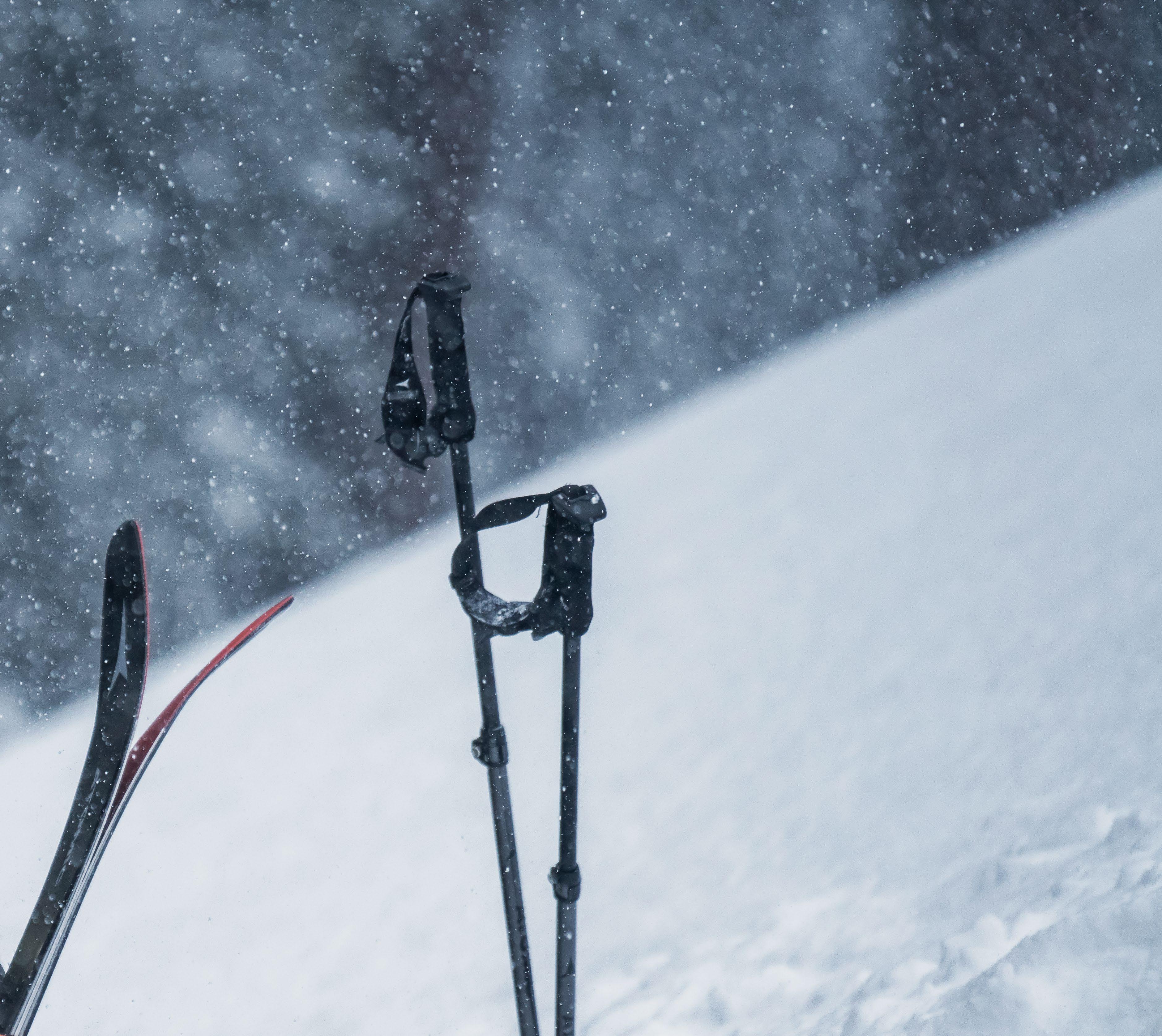
Donner Pass. „Man sieht ständig Leute, die immer das Gleiche machen, aber es gibt so viel zu erleben. Das ist es, was mich bei der Stange hält“, sagt Rahlves. „Ich liebe es, das an meine Kinder und andere Leute weiterzugeben. Ich möchte, dass sie das Skifahren lieben, weil es so vielseitig ist. Das ist auch, warum ich nach all den Jahren immer noch so viel Spaß daran habe. Ich liebe es, das Skifahren aus all diesen verschiedenen Blickwinkeln zu betrachten.“
and his kids and their dog, a husky named Zoe, skinned up Donner Pass for a few turns. “You see people doing the same stuff all the time, but there’s so much to do out there. That’s what keeps me involved,” Rahlves says. “I love passing that on to my kids and other people I’m skiing with. I want them to love skiing for all the variety and aspects it has. This goes back to why I still have so much fun skiing after all these years. I love to explore and look at it from all these different angles.”

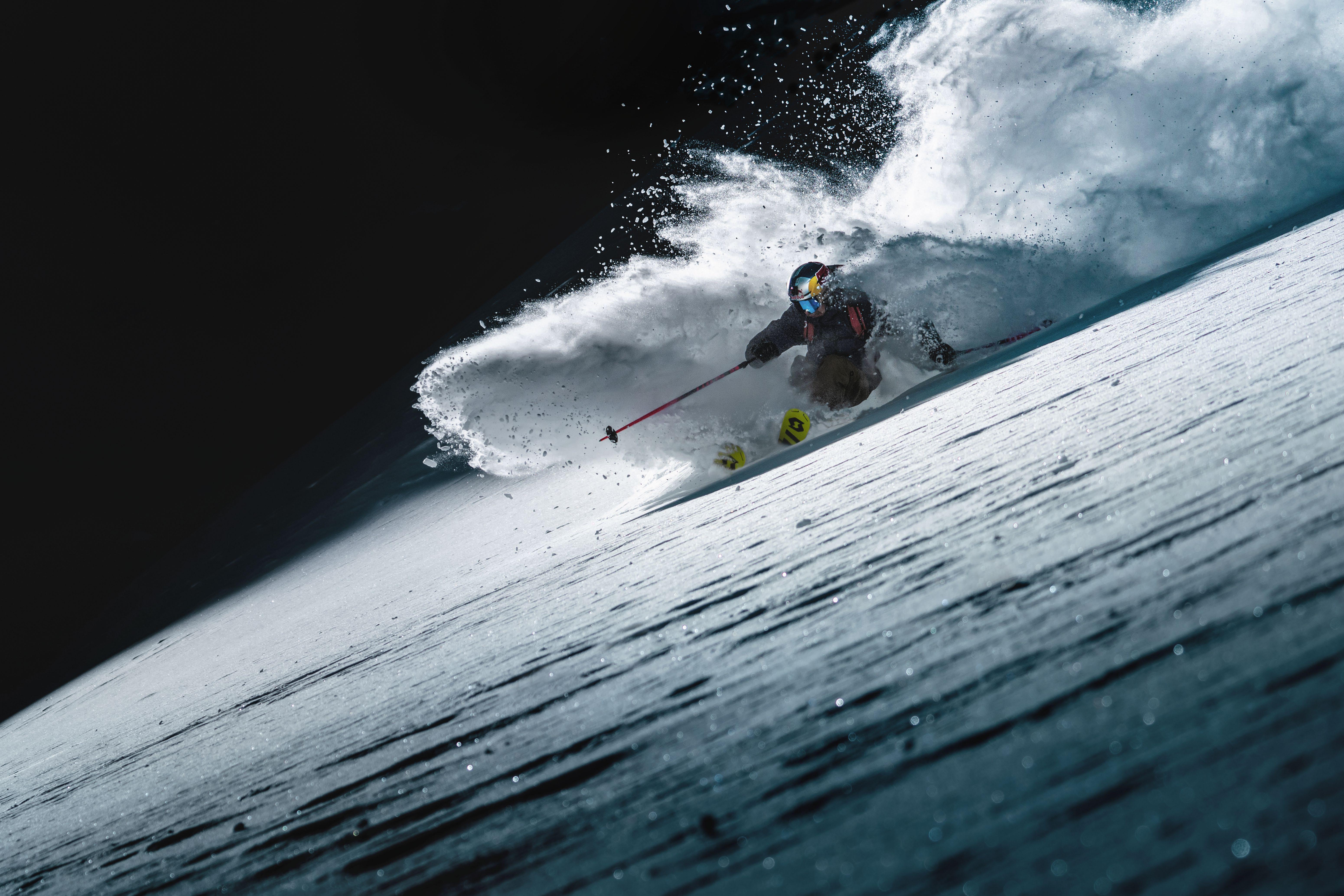


Steil ist geil. Nur die Harten kommen in den Garten. Ohne Fleiß kein Preis. Muss das immer so sein? Kann man sich nicht auch einfach über sanfte Hänge, gemütliche Hütten und entspannte Tagestouren freuen, ohne dass sich immer gleich der Ehrgeiz meldet? Oh doch, man kann, oder – in unserem Fall – Frau kann. Der Winter 2020/2021 hatte nicht nur gut begonnen, sondern zeigte sich auch Mitte März noch einmal von seiner allerbesten Seite: viel Neuschnee und noch immer eine ausreichende Unterlage bis ins Tal. Kurzfristig, und aufgrund des aktuellen Wetterberichts, entschieden wir uns für ein Wochenende in der Surselva. Ein entspanntes Wochenende. Stress gibt es in den Zeiten von Corona schon genug. Entspanntes Skitourengehen, coole Abfahrten, aber auch guter Kaffee, gutes Essen und guter Wein.
“Go big or go home. No friends on powder days. No pain, no gain.” Does it always have to be like this? Can’t we just be happy with gentle slopes, cozy huts and relaxed day hikes without trying to push ourselves to the limit? Oh yes, we surely can.
The winter of 2020/2021 had not only begun on a good note but also showed its very best side once again in mid-March: lots of fresh snow and a good base down to the valley. At short notice and due to the current weather forecast we decided to spend a weekend in Surselva. A relaxed weekend. These Covid times are already stressful enough. Easy ski touring, fantastic runs, but also good coffee, good food and good wine.

Die Surselva ist eine Region in Graubünden. Der ein oder andere kennt vielleicht eher die nahegelegenen Freeride-Destinationen Disentis oder den Oberalppass. Vor einigen Jahren war ich schon einmal hier, um im Sommer mit einem der zwei hauptberuflichen „Strahler“ der Schweiz und meinem damals elfjährigen Sohn auf Schatzsuche zu gehen. Die Gegend ist bekannt für die vielen Bergkristalle, die sich über Jahrtausende formiert haben. Strahlen – so heißt das Bergkristallsuchen – hat hier lange Tradition, und nach wie vor liegen viele Schätze verborgen unter Gletschern. Dieses Mal ist erst März und wir sind gerade in Sedrun angekommen. Bereits das vierte Jahr in Folge hat sich unsere rein weibliche Truppe zum Skitourengehen verabredet. Kaum sind alle da, schon geht es los: „Sooo schön, hier zu sein!“ „Ich bin jetzt schon glücklich“ „Passt meine neue Brille zum Helm?“ Eigentlich ist alles wie immer: Bettina, die Gynäkologin, gibt die besten Geschichten der letzten Monate preis; Kathrin und Sirma, schildern den Wahnsinn ihres anspruchsvollen Berufs plus Homeschooling mit drei kleinen Kindern. Wir nehmen uns nicht allzu ernst, es wird viel gelacht. Das war schon immer so bei unserem jährlichen Trip. Ein Unterschied zu den vergangenen Jahren wird aber offensichtlich: Alle wollen entspannen. Der innere Schweinehund spielt dieses Jahr, nach den entbehrungsreichen Monaten des Corona-Winters, keine allzu große Rolle. Deswegen einigen wir uns darauf, erst den späteren Zug zu nehmen und ratschen und trinken noch bis weit nach Mitternacht.

The Surselva is a region in Graubünden. Maybe you are more familiar with the nearby freeride destinations of Disentis or the Oberalp Pass. I’ve been there before, a few years ago, to go treasure hunting in the summer with one of Switzerland’s two full-time “spotters” and my then eleven-year-old son. The area is known for the many rock crystals that have formed over thousands of years. Spotting – as rock crystal searching is called – has a long tradition here, and still, many treasures lie hidden under the glacial ice. This time it’s March, not summer, and we have just arrived in Sedrun. For the fourth year in a row, our female group has met to go ski touring. Once everyone has arrived, the excitement – and chatter – starts: “Sooo good to be here!” “I’m happy already” “Do the new goggles match my helmet?” Everything is actually as always: Bettina, the gynecologist, shares her best stories with us; Kathrin and Sirma, describes the madness of her demanding job – plus homeschooling her three small children. We are not too serious about ourselves; there’s a lot of laughing going on. It’s always been like that on this annual trip of ours. Yet, one thing is very different: we all came here to relax. This year, after the depriving months of the first Covid winter, ambition is not a topic. So we agree to take the later train and chat and drink until well after midnight. Looking out of the window the following day, we immediately realize that everything is precisely how we imagined it. Snow dust is glittering in the air,

Für alle ist am nächsten Morgen beim Blick aus dem Fenster sofort klar: Genau so haben wir uns das vorgestellt. Alles glitzert, die Welt der Surselva strahlt –auch unter der Schneedecke - und wir sind mittendrin. Nach dem Frühstück – mit dem besten Bergkäse den wir je gegessen haben, – packen wir die Rucksäcke. Die Nacht werden wir am Berg auf der Maighelshütte verbringen. Mit dem Zug geht es zum Oberalppass. Wir steigen nicht alleine aus: Mit uns macht sich eine größere Schneeschuhtourengruppe fertig. Schon eine etwas schräge Bewegungsform: Die Armen müssen sogar bergab gehen anstatt zu fahren. Kurz vor der Hütte ziehen wir Richtung Piz Badus. Mäßig steile Hänge, keine Spuren und wegen der kühlen Temperaturen alles noch so richtig schön weich.Was will man mehr? Gegenüber sehen wir die Schneeschuhgruppe. Sie stapfen den Weg vom Piz Cavradi herunter, der offensichtlich ihr heutiges Ziel war. Sollten wir Mitleid haben? Egal – spätestens bei unseren ersten Schwüngen sind wir in einer anderen Welt. Wir sehen einander beim Fahren zu und freuen uns. Skifahren ist doch einfach der Wahnsinn! Später am Nachmittag und am Abend freuen wir uns auf der gemütlichen Hütte über den Tag. Über das Skifahren. Über die zurückgewonnene Freiheit und auch darüber, sich einmal nichts beweisen zu müssen oder zu wollen. Es gibt keine selbst verordneten Herausforderungen. Ist uns deswegen langweilig? Keinesfalls.
Der nächste Tag startet mit Schneegestöber. Wir frühstücken trotzdem
the world of the Surselva shines, even under the blanket of snow, and we are part of it. After breakfast – with the best mountain cheese we have ever tasted – we pack our backpacks. We will spend the night in the mountains at the Maighels hut.
We take the train to the Oberalp Pass.We are not the only ones to get off: a larger snowshoe tour group is also getting ready. As if it weren’t enough that I find snowshoeing a rather strange form of exercise: these poor people won’t even ski but walk down the mountain!
Just before reaching the hut, we change direction towards Piz Badus. The slopes are moderately steep; there are no tracks at all. It’s cold, and the snow is still nice and soft. What more could you wish for? Across the valley we see the group of snowshoers. They are trudging downhill from Piz Cavradi. Should we feel sorry for them? Who cares – as soon as we take our first turns, we are not thinking about anything else anymore. We only watch each other skiing and enjoy ourselves. Skiing is simply the best!
Later on, we enjoy the afternoon and evening at the cozy hut. We are happy about our day skiing, the regained freedom, and not having – or wanting –to prove anything. There are no self-imposed challenges. Does that make us feel bored? Absolutely not.
The following day starts with a snowstorm. Nevertheless, we have a reasonably motivated breakfast and eat the world’s second-best mountain

halbwegs motiviert und essen den zweitbesten Bergkäse der Welt. Unser heutiges Ziel: der Piz Borel. Ein idealeres Gelände für ratschende Ladies gibt es kaum. Zunächst geht es im flachen Talboden entlang, erst ganz zum Ende der Tour wird es steiler und aus vier Spuren nebeneinander wird schließlich eine. Inzwischen lugt die Sonne immer wieder zwischen den Wolken hervor. Beeindruckend, wie Licht die Szenerie verändern kann!
Zur Abfahrt meint Julie, sie sei noch nie in so guten Bedingungen unterwegs gewesen. Und das ganz ohne vorherige Quälerei – und vor allem fast ganz allein. Wieder bestätigt sich, dass Skifahren zu den besten Beschäftigungen der Welt zählen muss! Zurück in Sedrun hat unser liebenswertes Gastgeberehepaar heute ein Käsefondue vorbereitet. Der Käse schmeckt hier einfach in allen Aggregatzuständen! Was hat Harald Juhnke einmal geantwortet, als er nach
cheese. Today’s objective: Piz Borel. There is hardly a better kind of terrain for a group of ratcheting ladies. At first, the route follows the flat valley floor. Only at the very end of the tour does it get steeper, and our four parallel tracks eventually become one. In the meantime, the sun starts to peek out from between the clouds. It’s awe-inspiring how the light can change the scenery!
On the way down, Julie says she has never experienced such good conditions. Gain without any pain – and, above all, with almost nobody else around. Skiing is simply one of the best activities in the world.
Back in Sedrun, our lovely hosts have prepared a cheese fondue for us. Cheese is simply good in this part of the world, no matter its shape, soft or hard, hot or cold! When asked about his definition of happiness, a well-

seiner Definition von Glück gefragt wurde? „Leicht einen sitzen und keine Termine mehr“. Genau. So ähnlich geht es uns gerade auch. Und das, obwohl sich keine von uns konditionell oder technisch verausgabt hat. Für den letzten Tag haben wir uns den Piz Maler vorgenommen. Ein idealer Skitourenberg: zuerst recht schnell Höhenmeter machen, dann mit einer wundervollen Aussicht in alle Richtungen an einem Bergkamm entlang. Die Harscheisen können wir gut brauchen, der Bergrücken ist teilweise rutschig und abgeblasen. Trotzdem kosten wir jede Minute aus. Es schwingt aber auch schon etwas Wehmut mit, denn unser Ausflug neigt sich dem Ende entgegen. Drei Tage sind einfach zu kurz. Lange suhlen wir uns aber nicht in diesem Gefühl. Hinter uns kämpfen sich zwei Skitourengruppen mit lokalen Bergführern hinauf. Da wird ganz schön aufs Gas gedrückt. Samt
known German actor once said, “Slightly drunk and no more appointments. “How right he had been. That’s exactly how we feel right now. And entirely without anyone of us having exhausted herself conditionally or technically. For the final day, we set our sights on Piz Maler. An ideal ski touring mountain: first, we gain altitude rather quickly, then we are rewarded by a beautiful 360-degree view along a ridge. We are glad we brought ski crampons because the ridge is partly icy and windblown. However, we are perfectly in the flow and enjoy every minute. But there is also some melancholy because our trip is already coming to an end. Three days are simply too short. But we don’t wallow in this feeling for long. Directly behind us, two ski touring groups led by local mountain guides fight their way up the mountain. And they’re obviously in a hurry, even clearing
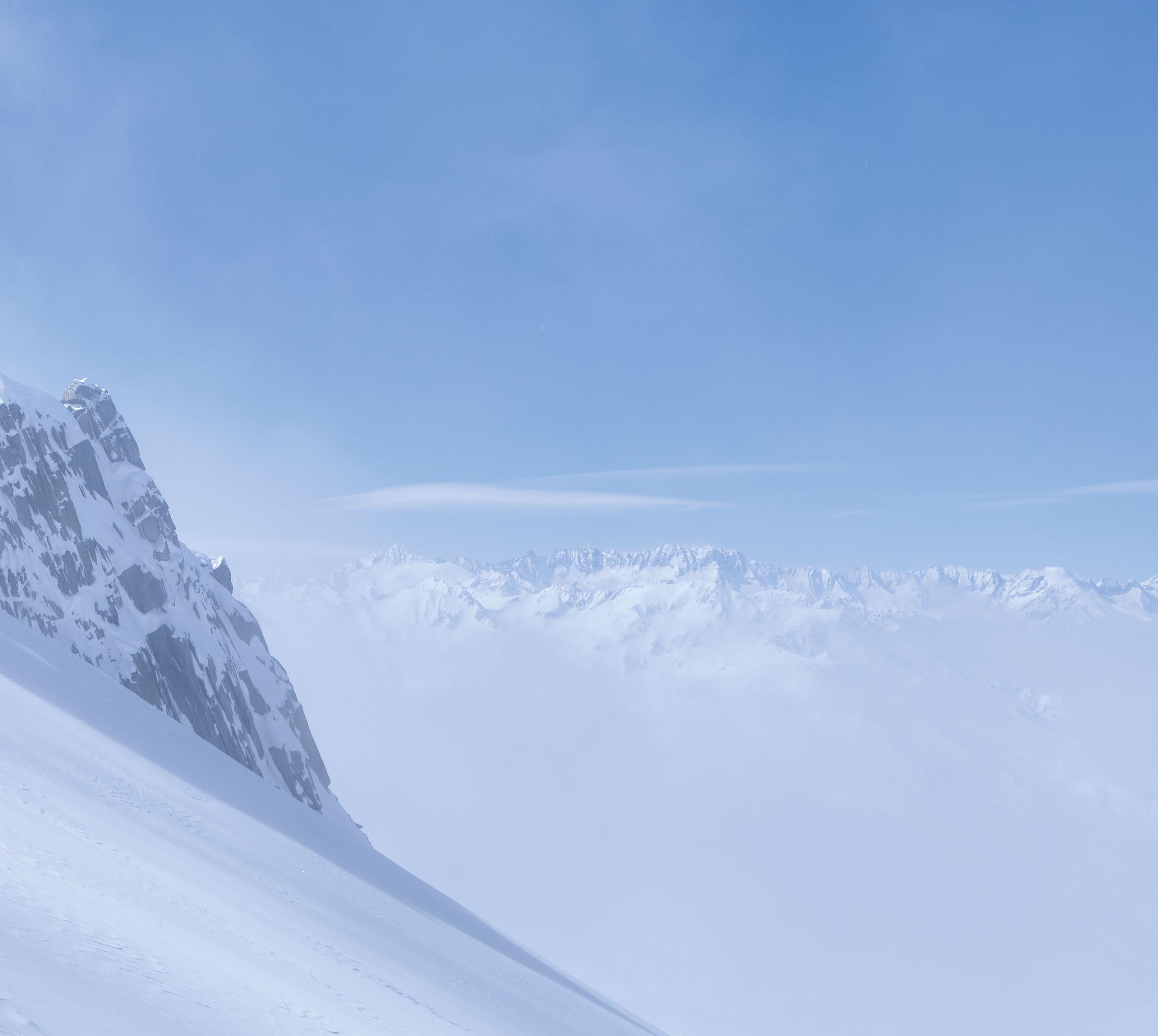
freigepickelter Spitzkehren-Plateaus. Wir wundern uns über ihre verbissen wirkenden Gesichter. Sehen wir auch manchmal so aus? Egal. Heute ist es auf alle Fälle ganz anders. Ganz auf den Piz Mala gehen wir an diesem Tag nicht mehr. Es zieht nämlich rasch zu und die letzte Abfahrt des Wochenendes wollen wir nicht im Nebel herumstochern. Lieber wollen wir sie mit den restlichen Sonnenstrahlen noch einmal genießen!
out kick turn plateaus to make faster progress. We marvel at their style, their dogged faces. Do we sometimes look like that? Never mind.
Today, it’s entirely different. We even forgot the summit of Piz Malt because the weather is changing rapidly, and we don’t want to poke around in the fog. We prefer to enjoy this last run with the remaining rays of sunshine!

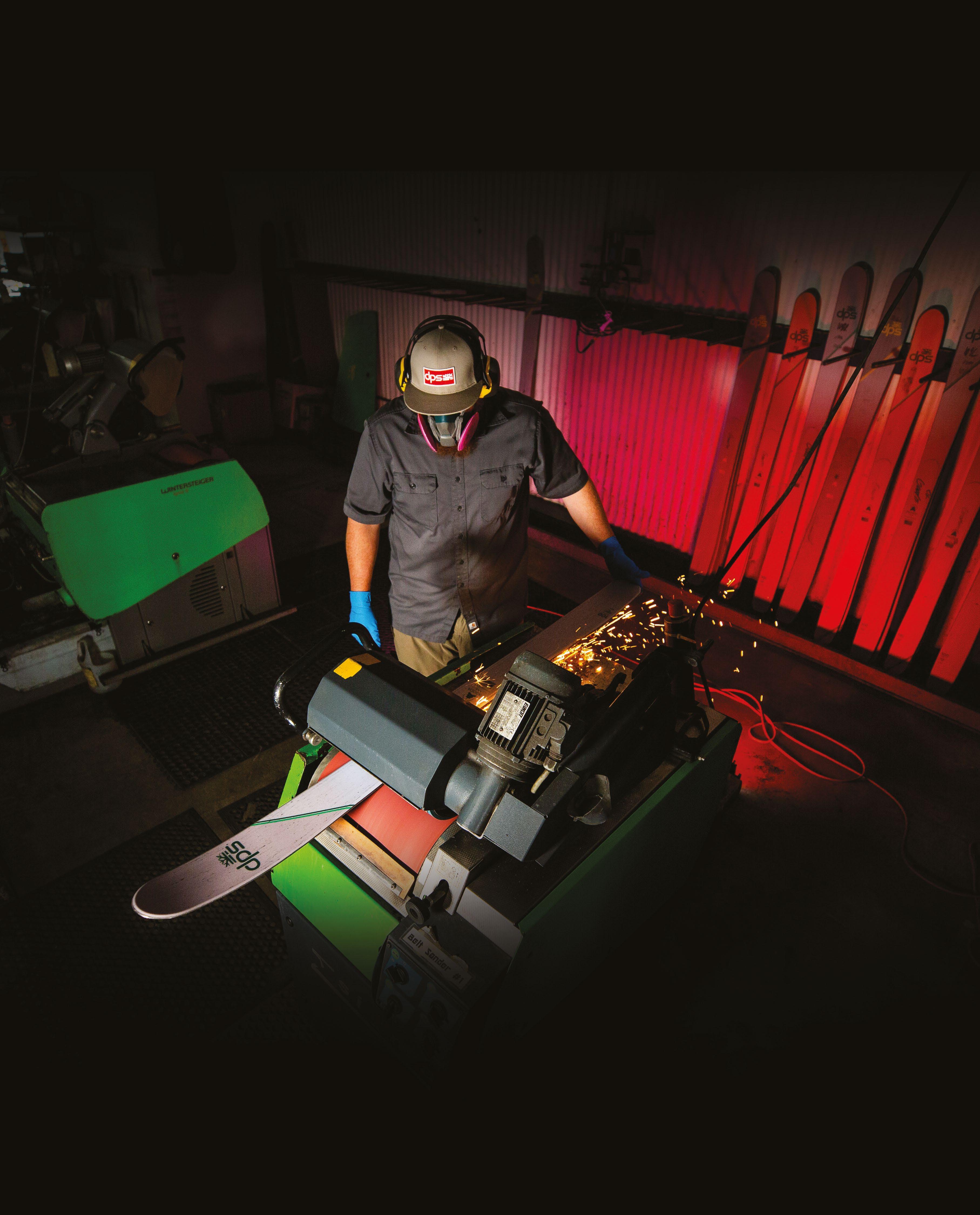
The Will to Innovate.
We design and manufacture the world’s most advanced skis for those who live and breathe the sport.
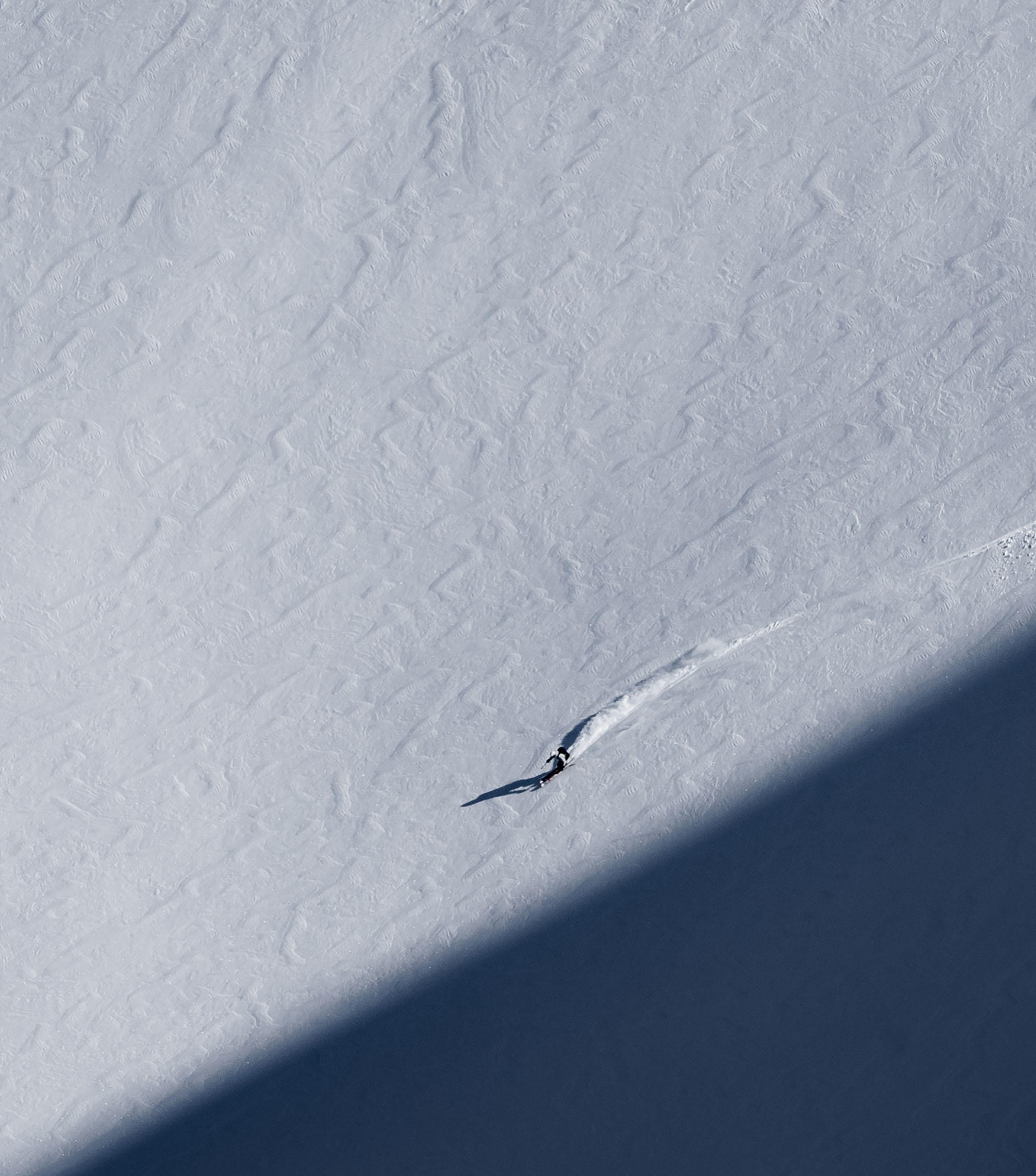
Unsere Heimatberge zu erkunden, ist gleichzeitig eine Reise in unser Inneres und in die Zukunft. Die Reisebeschränkungen des letzten Winters ermutigten uns, unsere Umgebung zu erforschen und die Natur neu kennenzulernen. Zwischen Vergangenheit und Zukunft, Tradition und Fortschritt – was uns als Menschen ausmacht, ist die Neigung, immer nach Fortschritt zu streben, auf unseren Werten basierend eine bessere Zukunft zu schaffen. Wir wollen ein weites, kaum bewohntes Gebiet in den Apenninen erkunden, den Nationalpark Monti Sibillini. Weite Strecken fahren wir mit unseren Elektromotorrädern, die Gipfel besteigen wir mit unseren Skiern. Eine Erfahrung tiefster Verbundenheit mit der Natur, die noch intensiver wird, wenn man sich langsam und emissionsfrei fortbewegt.
Exploring our home mountains is at the same time a journey within ourselves and into the future. Last winter’s travel limitations encouraged us to explore the local area and allowed us to build a new relationship with nature. Between the past and the future, between traditions and progress – what distinguishes us as humans is our inclination to always look further, to strive for evolution based on our values and our will to create a better future. We explore a vast and barely inhabited area in the Apennines, the Monti Sibillini National Park, from south to north. We cover longer distances on our electric motorcycles and then reach the peaks on our skis. An experience of deep connection with nature that becomes even more intense when moving slowly with zero emissions.

Unser Ausflug ins Hinterland beginnt am Monte Vettore, dem südlichsten und mit 2.476 Metern höchsten Gipfel der Sibillini-Gruppe. Die erste Nacht im Zelt auf der Forca di Presta ist trotz des Breitengrades ziemlich kalt. Dennoch genießen wir den Sternenhimmel und den Blick auf die Milchstraße, die hier gut zu sehen ist, da sich die Lichtverschmutzung in Grenzen hält, weil leider nur eine Handvoll Dörfer das Erdbeben von 2016 überlebt hat. Bei Sonnenaufgang beginnen wir den Aufstieg zum Rifugio Zilioli, dem einzigen Biwak über 2.000 Meter in der Region. Die ergiebigen Schneefälle der letzten Tage haben das Gebiet praktisch unzugänglich gemacht, sodass wir die Berge ganz für uns allein haben. Der Aufstieg ist steil, aber kurz: 700 Höhenmeter in 1,5 Stunden, um das Rifugio zu erreichen, das komplett in Eis gehüllt ist. Wir steigen von der Westseite weiter in Richtung Cima Redentore, auf der Suche nach der besten und sichersten Abfahrt. Aufgrund zahlreicher Lawinen ist das Tal des PilatoSees im Winter ziemlich gefährlich. Von der Cima di Prato Pulito gehen wir über den steilen Grat zur Cima Lago. Die Ausblicke über die Ebene von Castelluccio und über die Monti della Laga und den Gran Sasso d’Italia, mit 2.912 Metern der höchste Gipfel Mittelitaliens, sind atemberaubend. Wir lieben dieses riesige Gebiet, das zwischen zwei Nationalparks – Monti della Laga und Sibillini – und den drei mittelitalienischen Regionen Marken, Abruzzen und Latium liegt. Und dann liegt er vor uns – ein breiter, unberührter Hang. 500 Höhenmeter, keine Spuren. Wir fahren durch

Our local exploration begins at Monte Vettore, the southernmost and with 2,746 meters also highest peak of the Sibillini range. The first night in our tent on the Forca di Presta is quite cold. Despite the latitude, the temperatures are low. Nevertheless, we enjoy a wonderful starry sky and a view of the Milky Way, which is easily visible here as light pollution is limited because only a handful of villages survived the 2016 earthquake. At sunrise, we begin our ascent to Rifugio Zilioli, the only bivouac above 2,000 meters in the area. The abundant snowfalls of the past few days have made the area virtually inaccessible, so we have the mountains all to ourselves. The climb to the summit is steep but short: 700 meters of altitude in 1.5 hours to reach the Rifugio Zilioli, which looks beautiful covered with ice, like a sculpture. We climb from the west face towards Cima Redentore, looking for the best and safest face to ski down. With frequent avalanches, the valley of Lake Pilato is quite dangerous in winter.
We reach the Cima di Prato Pulito, and from there the Cima Lago, walking on a steep ridge offering breathtaking views across the plain of Castelluccio, and on the south side over the Monti della Laga range and the Gran Sasso d’Italia, with 2,912 meters the highest summit in central Italy. We love this vast area situated between two national parks – Monti della Laga and Sibillini – and three regions of central Italy, the Marche, Abruzzo and Lazio. And then there it is, a wide untouched face, 500 meters of altitude with no tracks.

das Licht- und Schattenspiel der Cima di Prato Pulito und des Redentore und ziehen, fast schon sanft über den Schnee streichelnd, unsere Linien ins Valle Santa und die Ebene von Castelluccio. Derart perfekte Schneeverhältnisse haben wir hier nicht oft, aber dieser Winter ist magisch. Nach zwei Tagen geben die Behörden die Straße wieder frei und wir fahren mit unseren E-Motorrädern zwischen ungewöhnlich hohen Schneewänden nach Norden in Richtung Monte Argentella. Umweltfreundlich bis zum Start einer Tour zu fahren und dann auf Fellen weiterzugehen, verkörpert für uns am besten das Konzept des umweltbewussten Skitourismus.
Der Aufstieg von Pian Perduto, kurz hinter dem Dorf Castelluccio, zieht sich: nach einem flachen Stück durch die Ebene steigt die Spur steil an. Die Aussicht auf der Südseite des Monte Vettore ist wunderschön: von hier sieht der Gipfel wie ein großer Vulkan aus. Wir sehen Castelluccio, oder was davon übrig ist. Das Dorf thront über der Ebene, als wäre es der Wächter der Umgebung. Der Gipfel des Monte Argentella sieht aus wie ein Balkon auf 2.200 Metern. Von dort können wir das Tal des Monte Vettore und den Pilato-See auf der Südseite sehen, die Adria im Osten, Palazzo Borghese, Monte Porche, Pizzo Berro, Monte Bove im Norden sowie den Monte Sibilla, den Namensgeber dieser Bergkette.
Die Legende besagt, dass auf seinem Gipfel eine Feenhöhle ist. Die Zauberin
The descent is fantastic. We ski amidst the lights and shadows created by the peaks of Cima di Prato Pulito and Redentore, drawing our lines gently caressing the snow, down to Valle Santa and the plain of Castelluccio. We don’t often have such great snow conditions here, but this winter is magical here in the Sibillini.
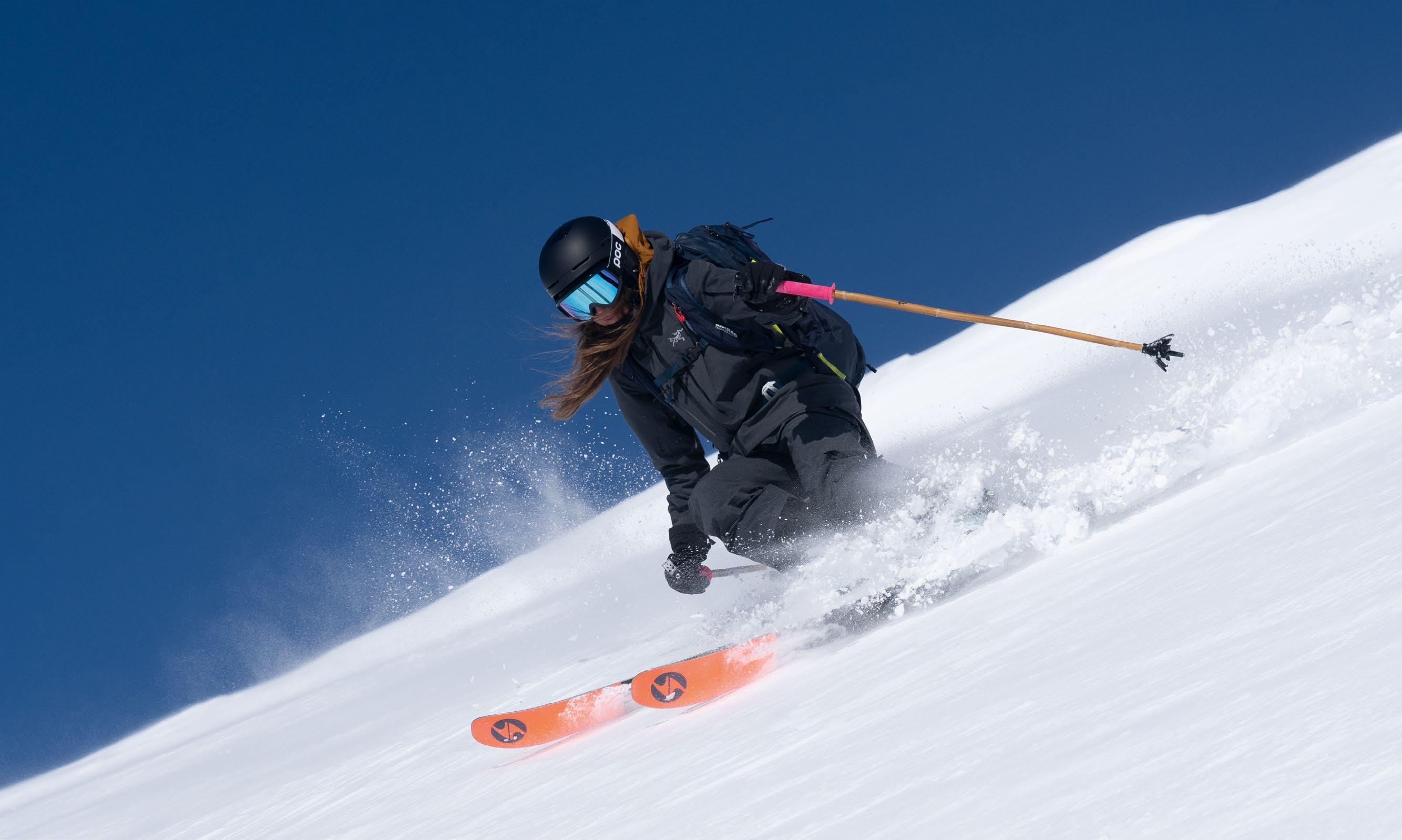
After two days, the local authorities reopen the road and we ride our e-motorcycles between unusually high snow walls to the north following the mountain range to climb Monte Argentella. Riding the electric motorbikes to a trailhead and skinning up to the summit best embodies our concept of skiing by fair means. The ascent from Pian Perduto, just past the village of Castelluccio, is quite long: after a flat part crossing the plain, the trail climbs steeply. The view on the south side of Monte Vettore is beautiful: from this side, the summit looks like a big volcano. We see the village of Castelluccio, or what’s left of it. It towers over the plain as if it were the sentinel of the area. We are now in the center of the mountain range; the summit of Monte Argentella looks like a balcony at 2,200 meters, from there we can admire the valley of Monte Vettore and Lake Pilato on the south side, the Adriatic Sea in the east, Palazzo Borghese, Monte Porche, Pizzo Berro, Monte Bove in the north and then Monte Sibilla, the peak eponymous of the entire mountain range.
Legend has it that on the top of Mount Sibilla, there is the Fairy Cave. The
Sibilla ist von Feen umgeben, die nachts ins Tal hinabsteigen, um die jungen Hirten zu treffen. Laut Legende werden die Menschen nach der Begegnung mit den Feen unsterblich und sind gezwungen, in der verwunschenen Höhle zu leben und nur nachts hinauszugehen.
Wir fahren hinunter zum San Lorenzo Couloir. Der Schnee ist fantastisch. Als wir in der Ebene ankommen, werden wir Zeuge eines fantastischen Sonnenuntergangs. Die Berge färben sich rosa, wir hören keine Geräusche, nur das der Skier auf dem Schnee und schließlich das der Elektromotoren, nachdem wir wieder bei den Bikes angekommen sind. Um diese schönen Orte und unsere Winter zu schützen und zukünftigen Generationen zu ermöglichen, die Berge zu erleben, wünschen wir uns, dass bald noch mehr

sorceress Sibilla is surrounded by fairies who descend into the valley at night to meet the young shepherds. The legend says that once they meet the fairies, people become immortal and are forced to live in the enchanted cave, going out only at night.
We ski down to the San Lorenzo couloir. The snow is fantastic and the landscape beautiful with numerous snowdrifts and the interplay of light and shadow on the west face of Monte Vettore. As we reach the Plain, we witness a fantastic sunset and admire the mountains turning pink. We hear no sounds, only that of the skis on the snow, and then that of the electric engines after we arrive back at our motorbikes. A sustainable mobility is what we wish for to protect these beautiful places and our winters and
Menschen auf nachhaltige Mobilität setzen. Es geht weiter Richtung Norden nach Forca di Gualdo, wo wir eine weitere Nacht unter dem Sternenhimmel verbringen.
Am nächsten Tag fahren wir hinunter nach Castel S. Angelo sul Nera und dann hinauf nach Ussita, einem schönen mittelalterlichen Dorf, das durch das Erdbeben stark beschädigt wurde. Der Monte Bove mit seinen Südund Nordgipfeln ist vielleicht der faszinierendste Berg auf der Nordseite der Sibillini-Kette. Der Aufstieg ist direkt und nicht zu lang. Nach Erreichen des Monte Bicco steigen wir über den Südgrat, bis wir den Monte Bove Süd (2.169 Meter) erreichen. Von hier sehen wir die gesamte Sibillini-Kette mit all ihren Zweitausendern und Gletschertälern: das schöne Amphitheater des Pilato-
give future generations the opportunity to explore the mountains and experience this same special connection with nature. We head north towards Forca di Gualdo, where we spend another beautiful night under the stars.The next day we go down to Castel S. Angelo sul Nera and then up towards Ussita, a beautiful medieval village badly damaged by the earthquake. Monte Bove, with the two summits south and north, is perhaps the most fascinating peak on the north side of the Sibillini range. The ascent is direct and the elevation not too high. Once we reach Monte Bicco, we walk along the south ridge until we reach Monte Bove South, at 2,169 meters. From here, we admire the entire Sibillini range with all its peaks above 2,000 meters and glacial valleys: the beautiful amphitheater of the Pilato Lake valley, and Val di Bove and Val di Panico, where, because of

See-Tals sowie das Val di Bove und das Val di Panico, wo wegen der häufigen spontanen Lawinenabgänge Skitouren oft erst im Frühjahr möglich sind. Ufo-artige Wolken über den Gipfeln machen die Szenerie zu etwas ganz Besonderem. Wir fahren auf der Westseite ab und versuchen, uns von der „Camosciara“ fernzuhalten. Hier leben die Gämsen, die wahren Einheimischen der Gegend. Nach einem kurzen Aufstieg zum Monte Bicco kehren wir nach Ussita zurück. Es ist das Ende unserer Heimaterkundung. Die Zeit in den Bergen hat uns vollkommen erfüllt. Die Natur hat uns ein unbeschreibliches Erlebnis geschenkt.
the frequent spontaneous avalanches in winter, ski touring is mostly only possible in spring.
Lenticular clouds like spaceships above the highest peaks make this scenery really special. We ski down on the west face, trying to stay away from the “camosciara”, where the chamois live, the real inhabitants of this place. After a short ascent to Monte Bicco we return to Ussita, the final destination of our local journey, with the feeling of being fulfilled by the time spent in the mountains, connecting with nature while making an effort to do something for the environment.
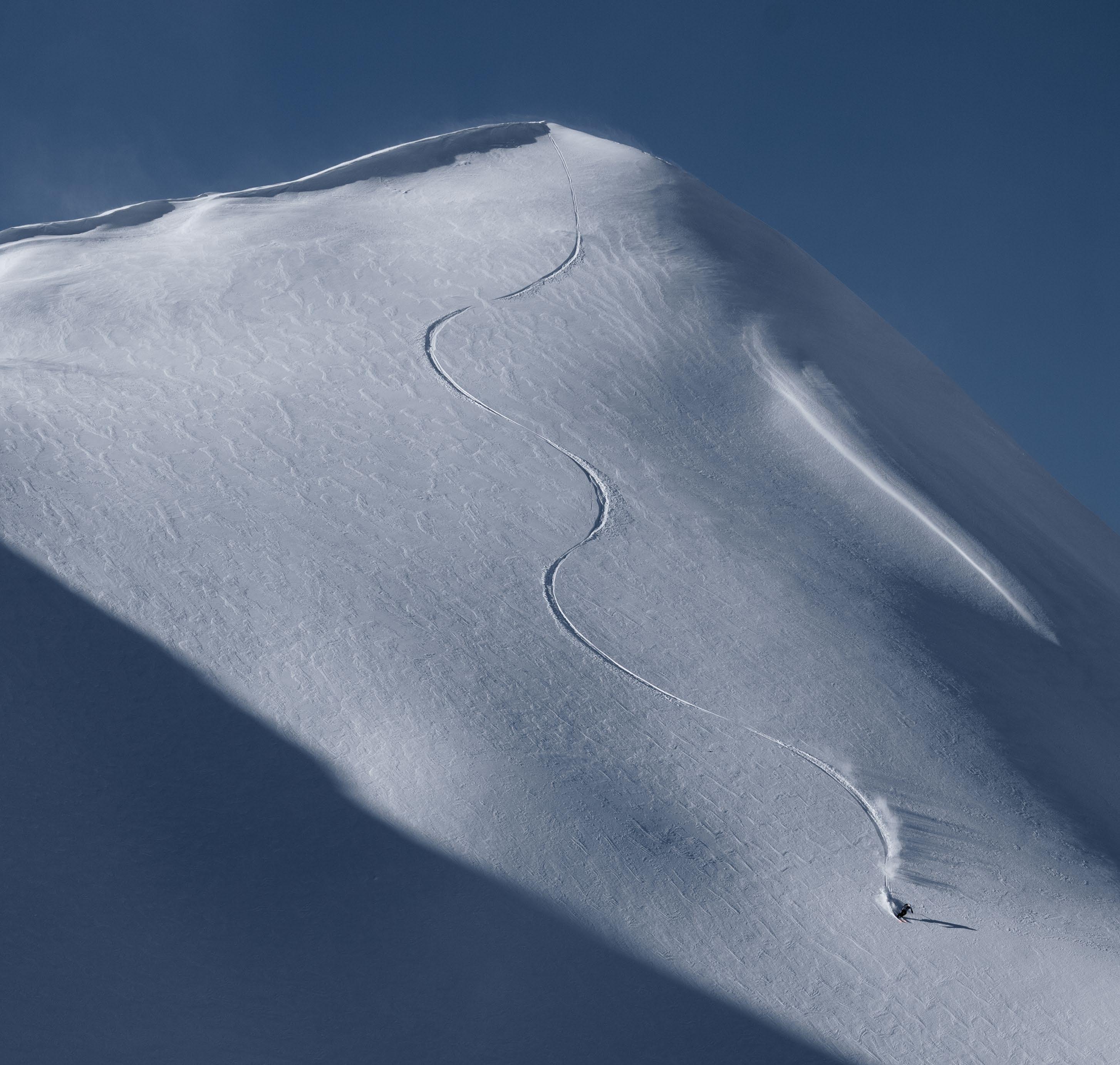
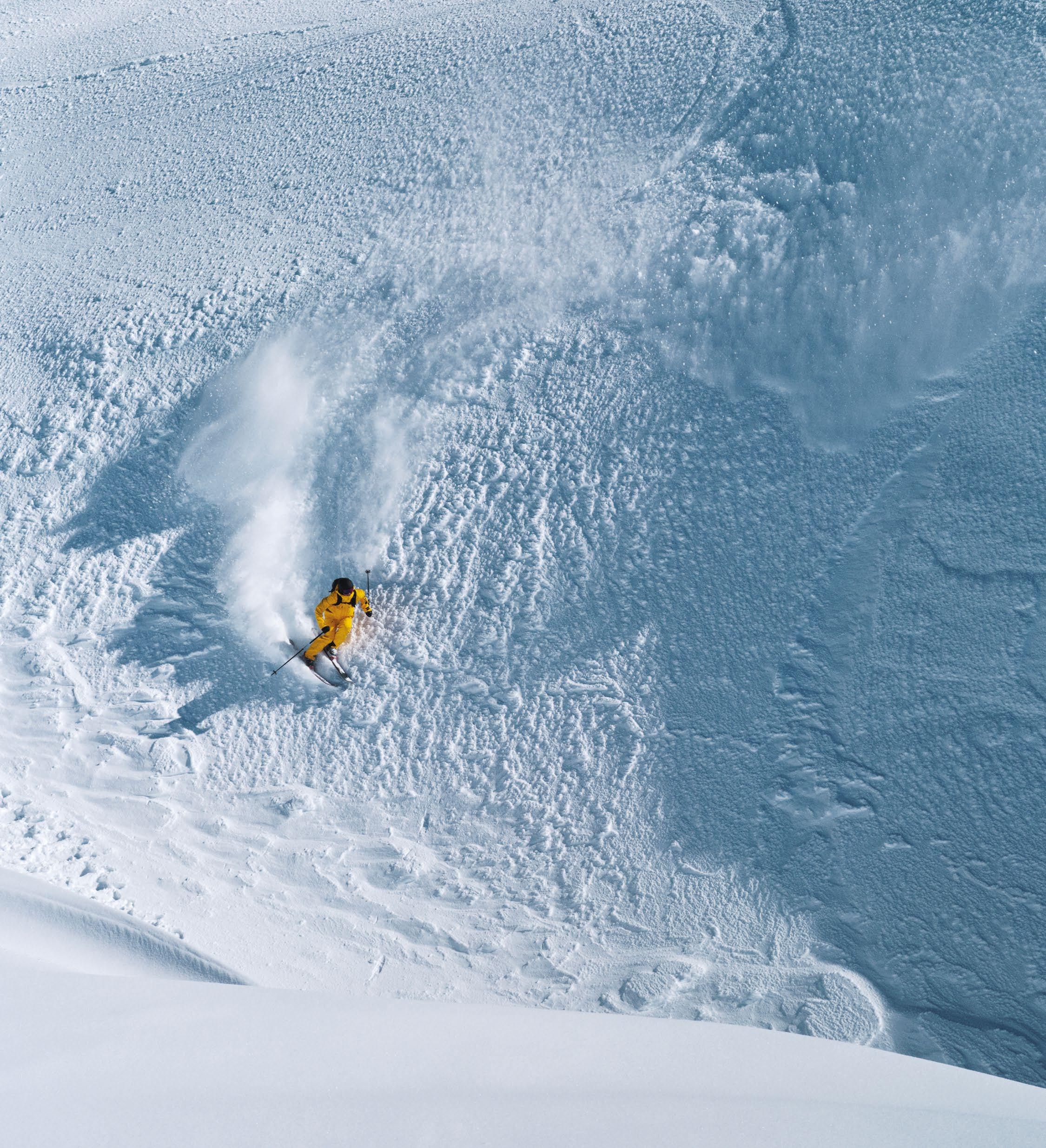






„Drop-in in 10 Sekunden!“ Ich lege das Funkgerät in den Rucksack, nehme die Kamera mit Tele in die Hand und checke noch einmal die Belichtung. Durch den Sucher sehe ich, wie Jochen seinen Skischuh schließt, dann fährt er los. In weiten Turns zieht er durch den Neuschnee neben einem kleinen Gletscherbruch, der leichte Wind trägt seinen Spray davon und das morgendliche Licht trifft ihn sanft von der Seite. Der war richtig gut! Es ist das erste Mal, dass Jochen und ich gemeinsam unterwegs sind und das, obwohl unser erstes Treffen schon Jahre zurückliegt. Seitdem hat es nie geklappt, dass der alte Hase der Freerideszene und ich als junger Fotograf losziehen. Am Ende des Corona-Winters ist es endlich so weit. Spontan und bei guten Bedingungen ist die Zeit reif für ein Kennenlernen im Pitztal.
“Drop-in in 10 seconds!” I put the radio in my backpack, pick up the camera and double-check the exposure. Through the viewfinder I see Jochen closing his boots, then he drops in. He is doing wide turns, drawing his line into the fresh snow next to a small glacier crevasse; the wind carries his spray away and the morning light touches him softly from the side. That was good! It’s the first time Jochen and I have been shooting together. Since we first met years ago it never happened that this freeride “veteran” and myself, the young-gun photographer, ventured into the mountains together. But when the “first Covid winter” came to an end, it finally happened. We finally went on a trip together – spontaneously and with good snow conditions to Austria’s Pitztal.

Freitagnachmittag, 30. April 2021: Ich sitze im Büro und schaue durch das Bildmaterial des ersten Mountainbike-Shootings der Saison. Die Sonne scheint durchs Fenster und es ist warm. Der Frühling ist in vollem Gange und ich genieße die Abwechslung zu den vergangenen Monaten im Schnee. Der Winter war großartig, die Bedingungen in den Tiroler Bergen zum Teil hervorragend. Ich habe so viele Tage im Schnee verbracht wie noch nie, und doch bin ich auch froh, dass diese in vielerlei Hinsicht außergewöhnliche Saison ein Ende nimmt. Denn nie zuvor habe ich so nah und intensiv die Schattenseiten unseres Sports kennengelernt und meine innere Stimme sagt mir, dass es vorerst genug ist.
Trotzdem checke ich aus Gewohnheit den Wetterbericht und bin überrascht: Am Wochenende 15 bis 20 Zentimeter Neuschnee und in der Höhe entsprechend kalt. Sofort schießt mir eine Idee in den Kopf, die ich schon länger mit mir umhertrage. Mir fällt auch spontan jemand ein, mit dem ich das gerne umsetzen würde. Da ist es wieder, das Feuer, die Begeisterung und der Drang, in den Schnee zu gehen und zu fotografieren. Ich melde mich bei Jochen Reiser, Freerider, Skiführer, Inhaber der snowacademy und Urgestein der deutschen Freerideszene. Wir haben uns vor ein paar Jahren in den Anfängen meiner Fotografenkarriere auf einer Messe getroffen. Seitdem hatten wir immer mal wieder Kontakt und uns Jahr für Jahr fest vorgenommen, gemeinsam ein Fotoprojekt umzusetzen. Ideen und Motivation
Friday afternoon, April 30, 2021: I’m sitting in my office looking through the images of the first mountain bike shoot of the season. The sun is shining through the window and it’s warm. Spring is in full swing, and I enjoy the change after spending the past few months in the snow. Winter was great, the conditions in the Tyrolean mountains were outstanding. I had spent more days in the snow than ever before. Yet I’m glad that the season, which has been extraordinary in many respects, has come to an end. Because never before have I experienced the dark side of our sport so intensely and up close, and my inner voice tells me that it’s enough for now.
Nonetheless, I check the weather forecast out of habit and it surprises me: 15 to 20 centimeters of fresh snow on the weekend and correspondingly cold at altitude. Immediately, I remember an idea, which I had been carrying around with me for a while. And I spontaneously think of the perfect person to take along. There it is again, this fire, the enthusiasm and the urge to go out in the snow and take more pictures.
I get in touch with Jochen Reiser – freerider, ski guide, owner of the “snowacademy” and a veteran of the German freeride scene. We met at a trade show a few years ago in the early days of my photography career. Since then, we have been in contact again and again, and year after year we


hatten wir genug, doch zeitlich hatte es nie geklappt oder die Bedingungen waren ungünstig. Doch dieses Mal scheint alles zu passen. Jochen hat Zeit, das Wetter sieht vielversprechend aus und am Telefon merke ich sofort, dass wir auf einer Wellenlänge sind und ähnliche Vorstellungen und Ideen mitbringen. Perfekt!
Im Schatten ist es richtig kalt, als wir am Taschachferner unsere Felle aufziehen, Plan A haben wir einstimmig über den Haufen geworfen und uns dagegen entschieden, ein kleines nordostseitiges Face zu shooten. Uns zieht es in den Gletscherbruch unterhalb der Wildspitze, der geschützt durch die umliegenden Felszacken erst relativ spät Sonne abbekommt. Mir springt sofort ein Hang ins Auge, der rechterhand durch einen kleinen Gletscherbruch begrenzt wird und den die Sonne ganz leicht streift. „Das ist unsere Chance! Besser wird das Licht heute nicht mehr“, rufe ich Jochen, der einige Meter vorausgeht, zu. Er ist ebenfalls überzeugt, dass sich der Schnee dort gut gehalten haben muss. Wir diskutieren kurz über die Gletscherspaltensituation und sind uns einig, dass das Risiko in diesem Bereich überschaubar ist.
Ich drücke Jochen noch ein Funkgerät in die Hand, dann läuft er los. Jetzt kommt es auf jede Minute an. Unerbittlich steigt die Sonne über den Berg, und schon bald werden die Schatten verschwinden und der Hang lichtgeflutet
have firmly resolved to realize a joint photo project. We had enough ideas and lots of motivation, but it had never worked out – either one of us didn’t have time, or the conditions weren’t right. But this time, everything seems to be working out: Jochen is not busy, the weather looks promising, and on the phone I immediately notice that the chemistry between us is right and that we have similar ideas.
It’s freezing cold.We have just reached the Taschachferner glacier at the back of the Pitztal valley in Tyrol and attach the skins to our skis. We already had to cancel plan A: shooting in a small northeast-facing face. Instead, we head to the icefall below Wildspitze, which is well protected by the surrounding peaks and only gets sun relatively late in the day. One couloir immediately catches my eye; it is bordered on the right by a small icefall and the sun only slightly brushes it. “This is our chance! The light won’t get any better today,” I call out to Jochen, who is walking a few meters ahead of me. He is also confident that the snow will still be good up there. We briefly discuss the crevasses and agree that the risk is reasonable.
I hand Jochen my second radio; then he starts hiking. From now on, every minute counts. The sun rises relentlessly over the mountain, soon the shadows will disappear and the slope would be flooded with light. But
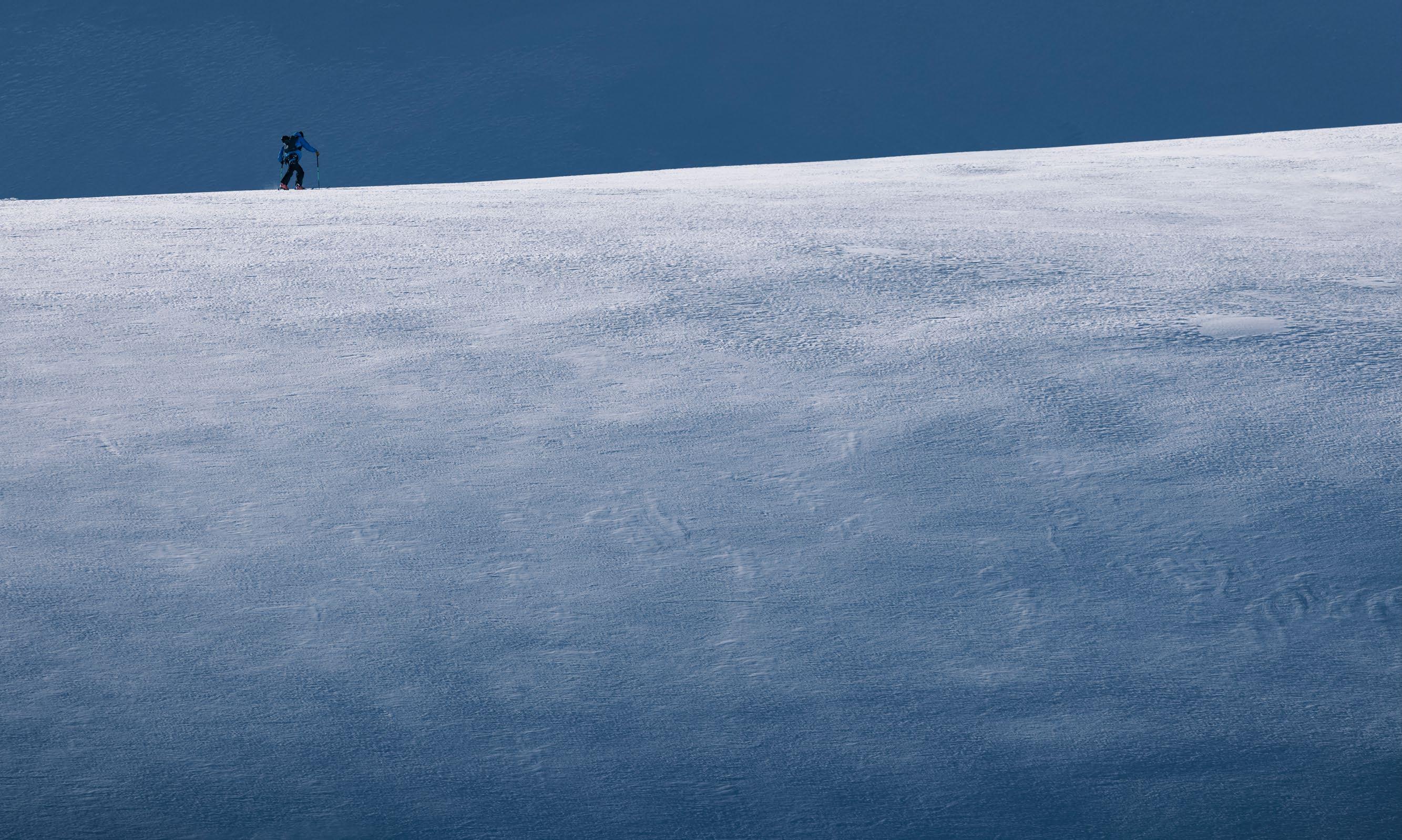
sein. Doch Jochen ist schnell und überwindet die Steilstufe in weitem Bogen in Windeseile, während ich meine Kamera herrichte und mir einen geeigneten Standpunkt suche, der für eine große Totale funktioniert.
Jetzt bloß keinen Fehler machen. Belichtung, Bildausschnitt, fokussieren, durchatmen und hoffen, dass der Schnee passt. Wir haben den Shot im Vorfeld von unten besprochen und man merkt Jochen die Erfahrung im Fotofahrer-Business an. Er weiß genau, wo er seine Schwünge setzen muss.

In wenigen weiten Turns zieht er seine Linie durch den Neuschnee neben dem Gletschereis, der Wind verweht seinen Spray, und als ich den Auslöser drücke, bin ich zutiefst zufrieden und aufgeregt zugleich. Nach nicht einmal 30 Sekunden ist das Spektakel vorbei, und auch Jochen hat ein breites Grinsen im Gesicht, als er bei mir abschwingt. High Five! Während wir gemeinsam weiter
Jochen makes fast progress and circles around a steep cliff while I prepare my camera and look for a suitable vantage point for a long-range tele shot.
I cannot make any mistakes now. Exposure, crop, focus; take a breath; hope that the snow is good. We discussed this shot before from below, and I can see Jochen’s experience in this business. He knows exactly where to place his turns. With a few long, wide turns, he now draws his line into the fresh snow next to the glacier ice, the wind blowing away his spray.
As I press the shutter, I’m deeply satisfied and excited at the same time. After less than 30 seconds the moment is over. Jochen has a big smile on his face as he joins me at my position. High five! It couldn’t be going any better.
aufsteigen in Richtung Petersenspitze, finden wir schnell das nächste Motiv. Der Jahreszeit entsprechend machen sich zwar die Schatten um diese Uhrzeit rar, aber der Kontrast zwischen Gletschereis und unberührten Powderhängen bietet trotzdem spannende Möglichkeiten. Wieder erkläre ich Jochen, was für ein Bild ich im Kopf habe, und bin begeistert, mit welcher Motivation er die Sache angeht. Er kennt das Gebiet wie seine Hosentasche und kann so unglaublich wertvolle Vorschläge bieten, was funktionieren könnte. Zur Abwechslung muss nicht ich heute für das nächste Bild die Füße in die Hand nehmen, sondern der Athlet, und so warte ich geduldig in der Vormittagssonne, bis Jochens Kopf gut 15 Minuten später an der Kuppe über mir auftaucht. Da das Gelände stark rollt und er keine Referenzen zur Orientierung hat, lotse ich ihn über den Funk zur richtigen Ausgangsposition.
As we continue to climb up towards Petersenspitze, we quickly find the next photo spot. Given the time of year, shadows are scarce at this hour, but the contrast between the glacier ice and the untouched powder still offers exciting opportunities. Again I explain to Jochen what kind of picture I have painted in my head, and I am thrilled by the energy and passion he brings to the situation. He knows the area like the back of his hand and gives valuable advice on what might work and what might not. For a change, I don’t have to do the hiking for the following picture. This time it’s the athlete’s job, and I wait patiently in the mid-morning sun until Jochen’s head reappears a good 15 minutes later at the crest above me. Since the terrain is extremely bumpy and rolling and he has no clues for orientation, I guide him by radio to the correct drop-in position. Despite the somewhat unstable
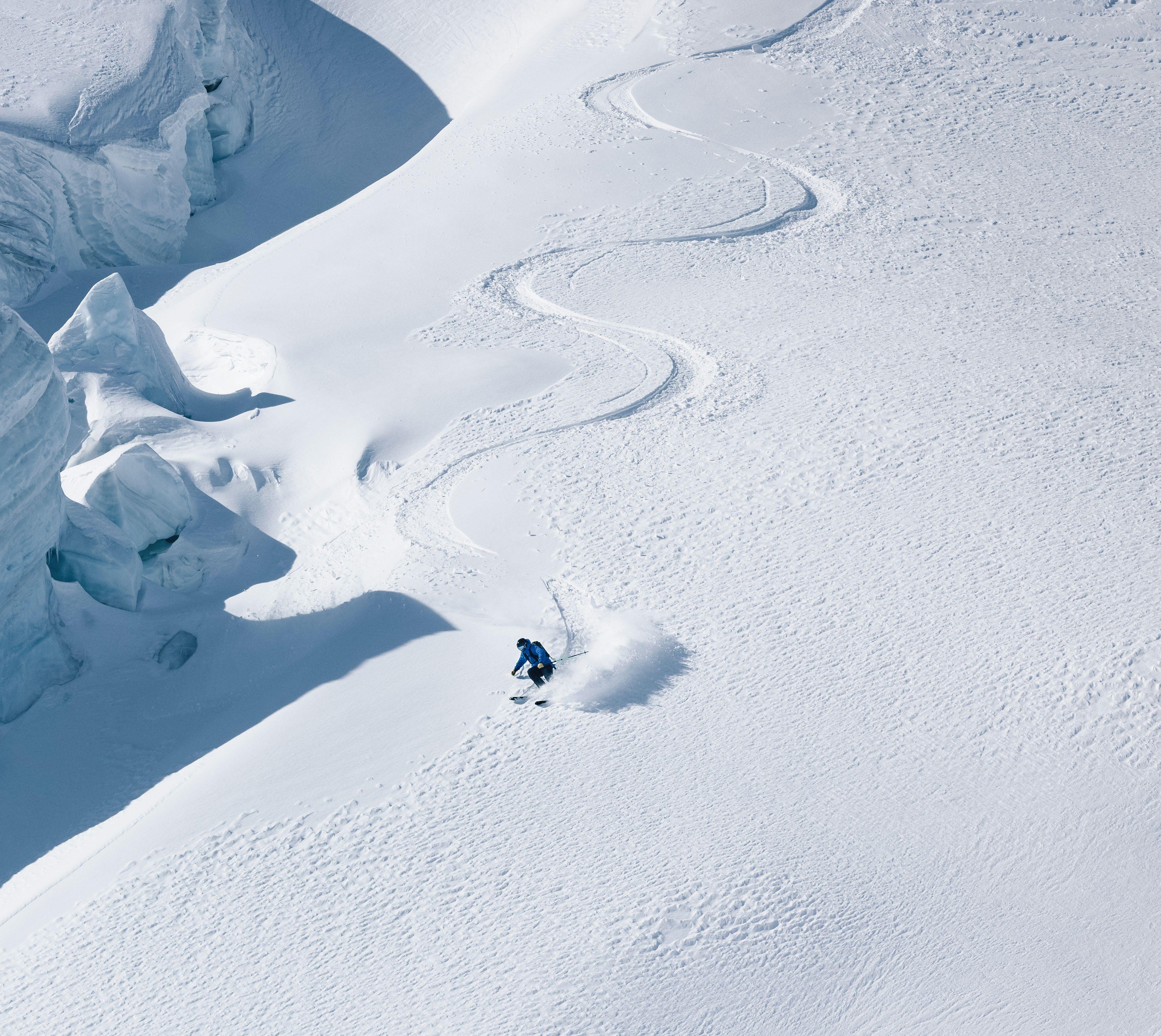
Jochen den Rechtsschwung und wir haben das nächste Bild im Kasten. Völlig im Flow arbeiten wir uns so von Spot zu Spot und Shot zu Shot weiter, bis uns schließlich die angekündigten hohen Wolkenfelder erreichen und der Kontrast verloren geht. Zeit, die lange Abfahrt über den Taschachferner zum Auto anzutreten. Wir haben Glück und müssen nur einmal kurz die Skier abschnallen, ansonsten läuft es perfekt. Was für ein Tag!
right-hand turn and the shot is a wrap. Now we are entirely in the flow and work our way from spot to spot and shot to shot until the forecasted overcast finally reaches us and the contrast is completely gone. Time to start the long descent down the Taschachferner glacier to our car. We are lucky and only have to remove our skis once for a brief distance, otherwise everything is perfect. What a day!
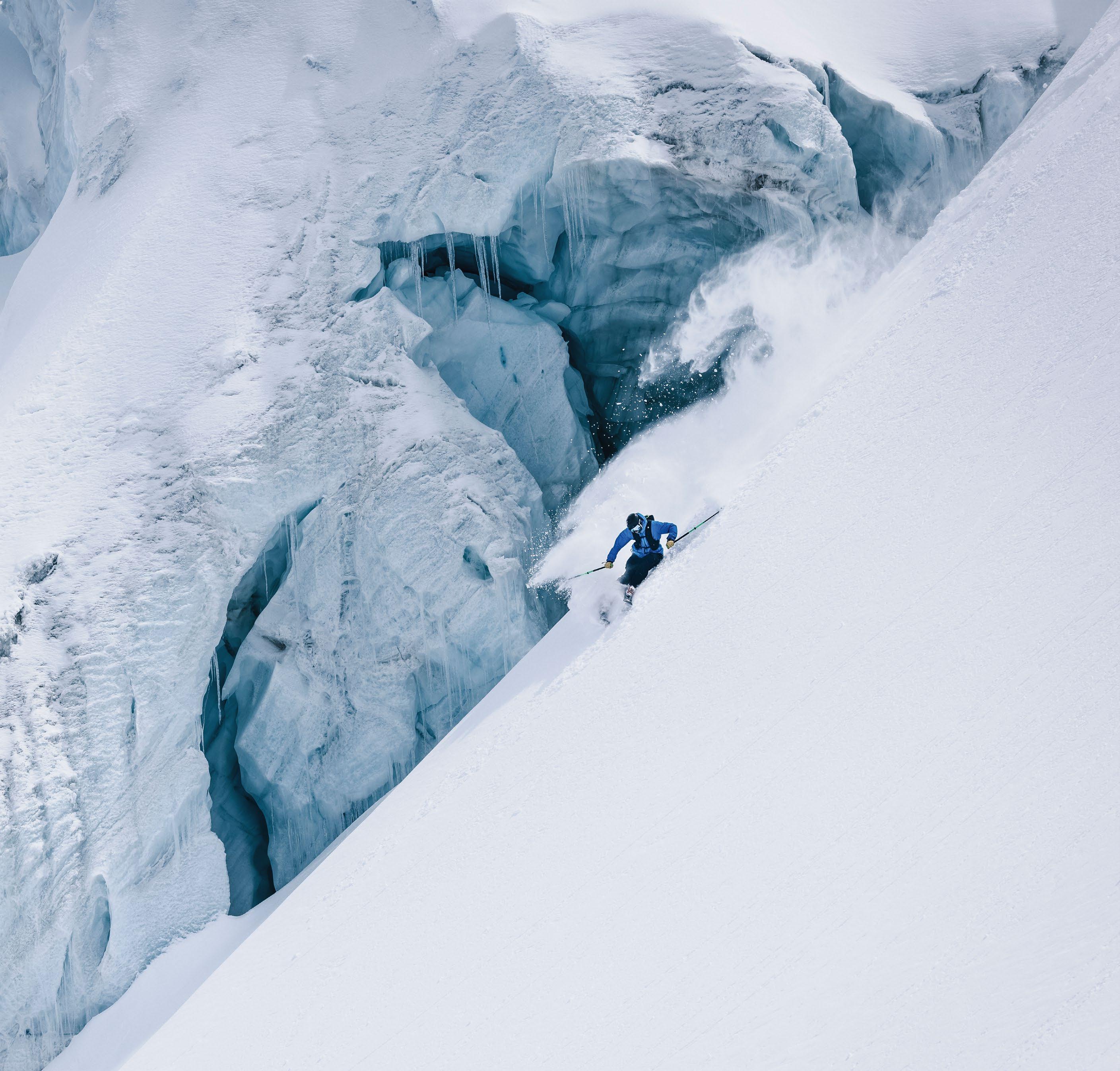
bergzeit.de Bergzeit Outdoor: Am Eisweiher 2, 83703 Gmund | Bergzeit Alpin: Tölzer Straße 131, 83607 Holzkirchen


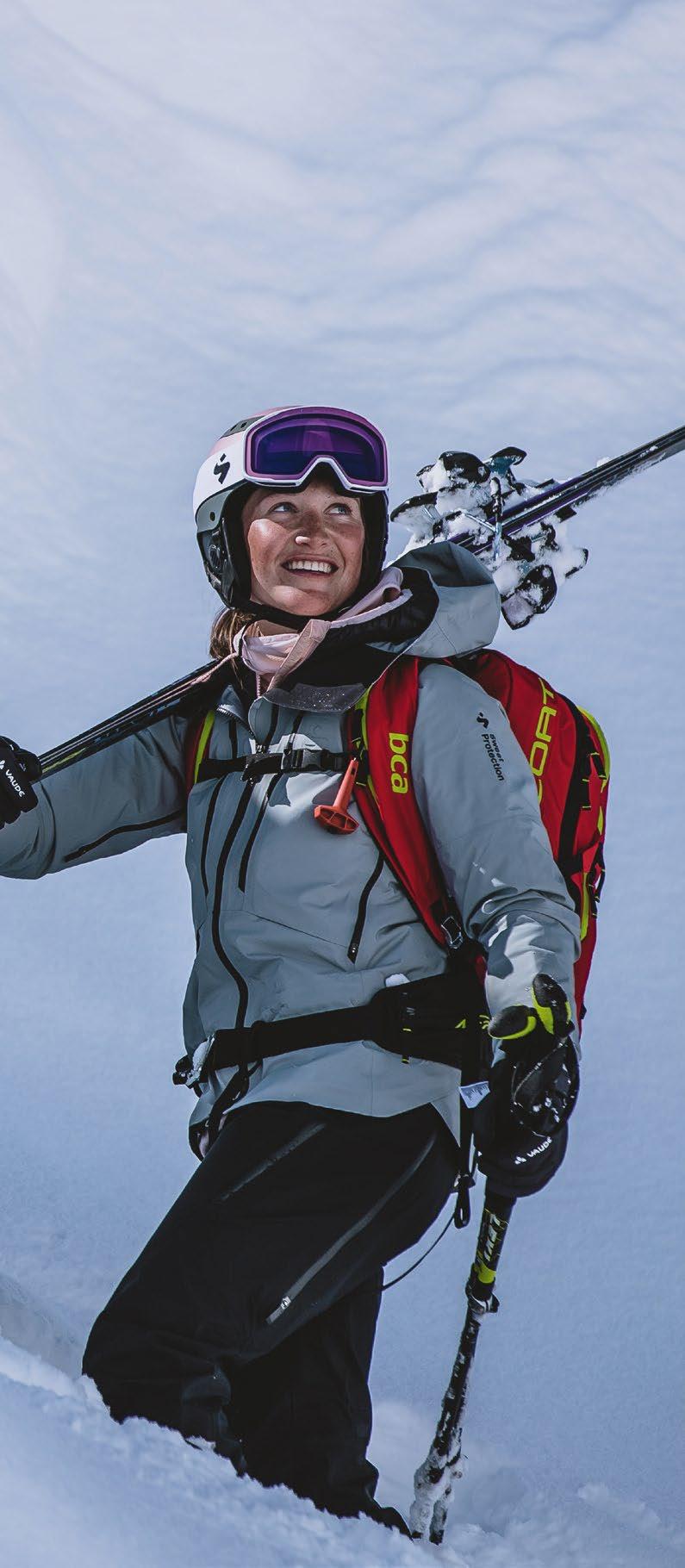

Von all den magischen Orten der North Cascades sind mir einige reizvolle, abgelegene Flecken bisher entgangen. Dazu gehört eine Bergkette, die sich über das Eldorado-Massiv hinausschiebt und am Gletscherwasser des Thunder Creek liegt. Die Region hat keinen besonderen Namen, aber zu ihr gehören die Berge Klawatti, Austera, Primus und Tricouni. Da der Glaziologe Dick Hubley den Klawattigletscher ursprünglich nach dem Chinook-Namen Kahloke benannt hat, was so viel wie Schwan bedeutet, können wir die Region vielleicht „Land of the Swan“ nennen, auch wenn das zugegebenermaßen etwas kitschig klingt. Um diesen Ort mit eigenen Augen zu sehen, musste ich das Tal jenseits der Hänge des Eldorado überqueren. Wer weiß, vielleicht würde er den Erwartungen seines neuen Namens gerecht werden?
Of all the magical places in the North Cascades, a few particularly enchanting remote spots have escaped my attempts to visit them. Among these is a spear of mountains thrusting itself beyond the Eldorado massif and laying claim to the country that rises above the glacier waters of Thunder Creek. The region has no particular name, but it includes the Klawatti, Austera, Primus and Tricouni peaks. Mayhap, since glaciologist Dick Hubley originally named Klawatti Glacier by the Chinook name Kahloke, meaning swan, perhaps we can call this region the Land of the Swan, although admittedly that sounds a bit cheesy. To see this place with my own eyes, I needed to cross the divide beyond the slopes of Eldorado. Who knows, maybe it would live up to the lofty expectations of its new name?
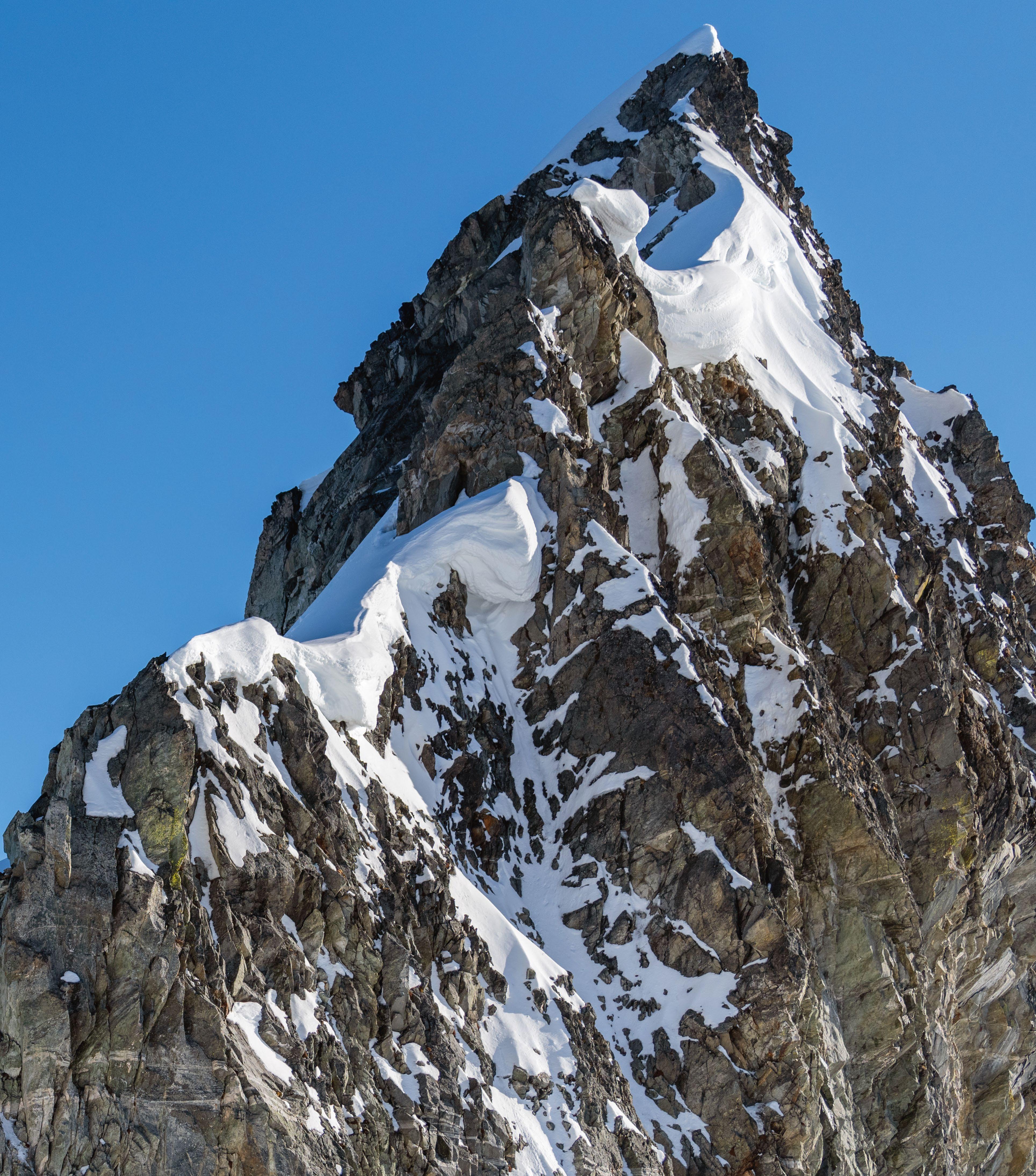
Auf der Tour zum Eldorado Peak schwankte das neblige Wetter zwischen Wolkenbruch und Sonne hin und her. Als das Wetter schließlich richtig schlecht wurde, machten wir kaum noch Strecke. Anstatt auf dem Gletscher herumzuirren, schlugen wir unser Lager genau dort auf, wo wir gerade waren. Schlaf, das merkte ich wieder einmal, ist besser als ziellos im Nebel auf einem Gletscher herumzustolpern.
Am Morgen hing der Himmel voller Wolken, die gegen die Gipfel stießen. Wir schleppten unsere Ausrüstung in das nächste Camp, bevor wir nur mit Tagesrucksäcken zum Austera Peak aufbrachen. Von hier oben sollten wir zum ersten Mal unsere Skier in den Schnee des „Land of the Swan“ setzen. Ich war aufgeregt, denn ich befand mich in einer mir noch unbekannten Ecke der Cascades. Es waren zwar dieselben Berge, aber aus einer anderen Perspektive. Einige sahen furchterregender aus, andere dagegen deutlich zahmer. Nun kannte ich sie ein ganzes Stück besser als zuvor. Am Gipfel des Austera Peak schnallten wir an und stürzten uns in die lange Abfahrt über den Gletscher. Klettern, Skifahren, Klettern und wieder Skifahren – bis zum Einbruch der Dunkelheit.
Am dritten Tag wollten wir die nördlichsten Gipfel des „Land of the Swan“ abhaken. Zunächst kehrten wir zum Ostgrat des Austera zurück und balancierten auf nicht ganz sicherem Schnee um einen massiven Eisfall herum.
On our hike to Eldorado Peak, it rained that misty kind of rain that hemmed and hawed between a released deluge on us to vanishing altogether and becoming sunny. By day’s end, our progress had ground nearly to a stop as the weather pendulumed in the more unsavory direction, so instead of wandering around like drunks on a glacier, we pitched camp where we stood. Sleep, I’ve found, always holds more promise than stumbling around on a glacier in the fog.
Morning rose with white clouds battering against the shores of gathered peaks. They ebbed and flowed in the valleys below, and we shuffled and lumbered gear to another camp before setting off with daypacks for Austera Peak. After circling it, we skied full tilt onto the Klawatti Glacier, and for the first time, I put ski to snow in the “Land of the Swan”. My excitement was soaring because I was in a new corner of the Cascades. Yes, the same mountains stared back at me, but they did so with different expressions. Some meaner and scarier. Others are more solitary and serene. In all cases, they are known better than before.
From the summit of Austera Peak, we flipped our skis onto the snow, snapped them on and soared thousands of vertical feet down the Klawatti Glacier! Climb, ski and repeat until dark.

Our third day was to be a round-up of the northern-most peaks in the “Land
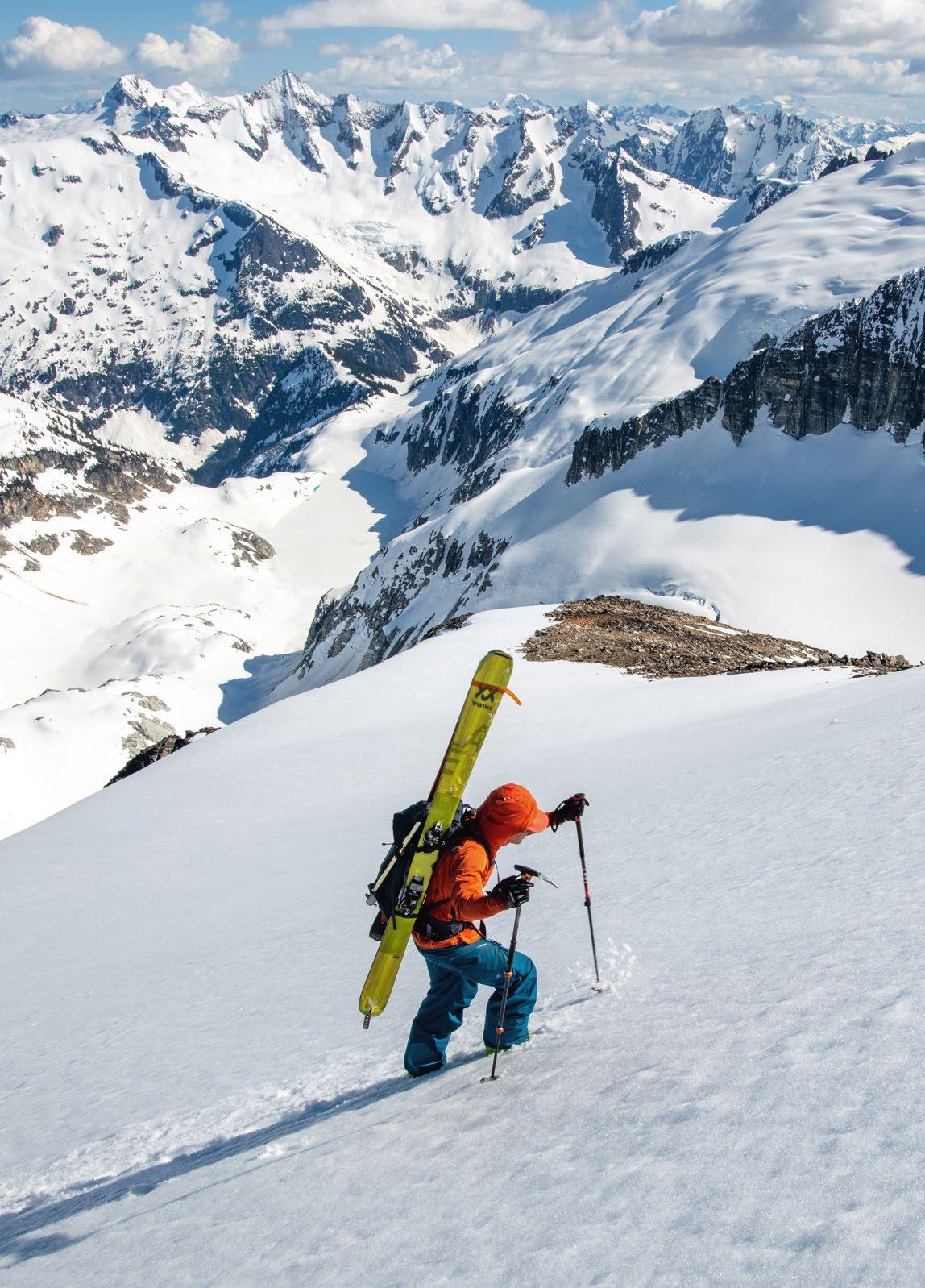
Als wir uns dem Primus-Tricouni-Grat näherten, wurden Carl und ich von einigen Schneefeldern und Couloirs abgelenkt, die an der Südwestseite hinuntergingen. Nach kurzem Abwägen schlug ich Carl vor: „Wie wäre es, wenn wir über das Westcouloir des Tricouni aufsteigen, die Südwestwand abfahren, dann zurück zum Pass klettern, über den Ostgrat des Primus zum Gipfel gehen und dann die Südwand des Primus fahren?“ Wir querten über Fels und Geröll zu einem Schneebalkon unterhalb des Gipfels und über dem Couloir. Oben angekommen nahmen wir unsere Rucksäcke ab, ruhten etwas aus und genossen die Aussicht. Das Panorama war sicher eines der schönsten in den Cascades. Natürlich ist das relativ, denn der aktuelle Gipfel ist immer ganz schnell auch der beste. Kurz darauf folgten wir den Orientierungspunkten, die wir im Aufstieg ausgemacht hatten, nach unten. Sich eine Linie vorzustellen und diese dann in den Schnee zu zeichnen, mag ein völlig egoistischer Genuss sein, aber genau deshalb waren wir ja da. Carl nannte sie „Triceratops“ – ein durchaus passender Name für eine derart gut gelungene Linie. Wir erreichten den Pass zwischen Primus und Austera und stiegen zum Primus Peak auf. Eine Abfahrt zum North Klawatti Glacier später, erreichten wir wieder den Austera. Von dort ging es zurück zum Camp, wo erfreulicherweise bereits unsere Freunde Alexa Cathcart, Jack Kornfeld und Jeff Rich auf uns warteten. An unserem vierten Tag ging es über den Eisbruch des Klawattigletscher,

of the Swan”. First, we returned to the east ridge of Austera and danced around the massive icefall on questionable snow. As we neared the PrimusTricouni saddle, Carl and I became distracted by a series of snow patches and couloirs that led down the southwest face of Tricouni. After some thought, I proposed a plan to Carl, “How about we go up the West Couloir of Tricouni, ski the southwest face, then climb back to the pass, ascend the East Ridge of Primus to the summit and ski down the south face of Primus?”Carl and I traversed rock and boulders to a bench of snow below the final climb to the summit atop the couloir. Of course, we went to the wrong summit! Once recalibrated, we arrived at the ‘actual summit’ where we took our packs off, rested and took in the surrounding views. They have to be among the most beautiful of any in the Cascades. Although, it’s rather convenient to think of those recent summits as most deserving of the label best.
Carl and I traced turns toward our key points, which we had observed on our ascent. The simple thrill of seeing a line and drawing tracks may be a selfish indulgence, but it’s the kind we’re here to satisfy. Carl named the line Triceratops, a most fitting name for a worthy line.
We returned to the pass between Primus and Austera, then climbed Primus Peak. A non-stop descent to the North Klawatti Glacier brought us back
von dort erkundeten wir dann eine Linie am Klawatti Peak. Jeff und seine Freunde hatten am Vortag ein enges Couloir gesichtet. Jeff meinte, es sei „... drei Skilängen breit“ – ausreichend Platz zum Skifahren also! Nachdem wir den Gipfel des Klawatti erreicht hatten, fuhr Jeff als erster los, dann folgte ich. Zwischen jedem Schwung lagen zwei oder drei Atemzüge. Unten schrien wir alle vor Freude. Als wir uns beruhigt hatten, sahen wir zu Jeff hinüber und waren uns einig, dass das Couloir sicher nicht nur drei Skilängen breit war! Später schlug ich als Namen dafür „Swan Song Couloir“ vor, eine Anspielung auf den Gipfel darüber.

Der Morgen des fünften und letzten Tages kam viel zu früh. Während der Rest der Truppe beschloss, im Lager zu bleiben und später über den
toward Austera. From there, we returned to camp to find friends had arrived, adding Alexa Cathcart, Jack Kornfeld and Jeff Rich to our team. On our fourth day, we skied the icefall on the Klawatti Glacier, then explored a line on Klawatti Peak. Jeff and friends had spotted a tiny couloir the day before. Jeff suggested it was “...three ski lengths wide” and held enough room to ski.
After we climbed to the summit of Klawatti, Jeff went first, then I followed. Each turn was separated by two or three breaths until I was down. Once everyone was corralled at the bottom, we whooped and hollered, and when we quieted, we all looked to Jeff and agreed that the couloir wasn’t “...three ski lengths wide!” Later I suggested Swan Song Couloir, a tip of the hat to
Eldorado zu den Autos zurückzukehren, beschloss ich, den Moraine Lake und die Wasserscheide zu überqueren und zum Taboo Glacier aufzusteigen, bevor ich zum Roush Creek Basin fahren würde, um schließlich zur Straße zurückzufahren.
Während meine Freunde noch Kaffee tranken, erzeugte das Gelände oberhalb des Moraine Lake bereits weitaus mehr Adrenalin in mir, als es Koffein je könnte. Über mir klafften Felswände, unter mir brachen 150 Meter hohe Cliffs ins Nichts ab. Beides war Motivation genug, um in Bewegung zu bleiben. Als ich den 2.000 Meter hohen Pass östlich des Forbidden Peak erreichte, atmete ich erleichtert auf. Direkt hinter dem Pass legte ich mich ins Heidekraut und machte ein Nickerchen. Ich nahm mir vor, diese Route nie wieder zu gehen,
the root meaning of the peak it descended from. Early morning on the fifth and final day came all too soon. While the remainder of the group chose to linger at camp, climb Eldorado and return to their vehicles, I decided to traverse above Moraine Lake, cross the divide and climb to the Taboo Glacier before returning to Roush Creek Basin for the descent back to the road.
While my friends drank coffee, I found the terrain above Moraine Lake far more effective than any caffeine could be. Cornices gaped above me, and five-hundred-foot cliffs drooled hungrily below me. Either was enough encouragement to keep me moving. As I slipped out from their gaze, I breathed a sigh of relief when I reached a 2,000 meters pass, just east of Forbidden Peak. Once over it, I laid in the heather and took a nap. I resolved

nicht einmal an einem kalten Frühlingsmorgen. Bald konnte ich den Taboo Glacier ausmachen, entschloss mich angesichts des stellenweise fast einen Meter tiefen Schneematsches und der Gefahr versteckter Spalten gegen ein Weitergehen. Macht nichts, Scheitern gehört zum Abenteuer!
Nach 1.200 Metern Abstieg erreichte ich einen umgestürzten Baumstamm über dem Cascade River. Ich tauchte meinen Kopf ins Wasser und setzte mich ans Ufer. Das eiskalte Wasser machte meine Gedanken klar. Die Zeit im „Land of the Swan“ war kurz, aber ich messe sie nicht in Stunden, sondern in Erinnerungen, die ich nun tausendfach wieder erleben kann. photo
to never take this route again, even on a cold spring morning.
Eventually, I arrived within sight of my destination. Sadly, with the spring slush nearly a meter deep in places and the threat of hidden bergschrunds, I decided against continuing. No matter, failure is part of the adventure!
After 1,200 meters of descent, I reached a fallen log across Cascade River, where I dipped my head into the frigid waters and sat on the rocks.The cold had cleared my thoughts.While my time in the “Land of the Swan” was brief, it was a time not measured by hours but by memories made and re-lived a thousandfold.



 Photo: Tom Klocker | Text: Roman Rohrmoser
Photo: Tom Klocker | Text: Roman Rohrmoser
Im Kurzfilm „TimeOut“ von Andreas „Mone“ Monsberger und Roman Rohrmoser begegnen sich der Freeskier und Biker Roman und der Almer Schorsch an einem besonderen Flecken Erde, der sie beide gleichermaßen anzieht und verbindet. Mit innovativer Kameraführung erzählt „TimeOut“ die Geschichte von Schorsch, dem „Aussteiger“, der den Weg in die Natur gewählt hat und Roman, dem „Ausfahrer“, der ebenfalls abseits der ausgetretenen Pfade in der Natur seine Erfüllung findet. Das Wechselspiel von Sommer und Winter, Bike und Ski verleiht dem Film seinen einzigartigen Flow. Auf bewegenden Bildern ist es den beiden Freunden gelungen, ein richtiges Timeout einzufangen und dabei auch die eine oder andere Lebensweisheit mit nach Hause zu nehmen.
In the short film “TimeOut” by Andreas “Mone” Monsberger and Roman Rohrmoser, the freeskier and biker Roman and Georg Almer meet at a special spot on earth that attracts and connects them both to the same extent. With innovative camera work, “TimeOut” tells the story of Georg, the “dropout,” who has chosen the path to nature, and Roman, the “freerider,” who finds fulfillment in nature off the beaten path.
The interplay of summer and winter and biking and skiing creates the unique flow of this film. Roman and Mone have captured a real timeout in moving images while also giving one or two life lessons to remember.

Die Idee zu diesem neuen Filmprojekt hatte Roman schon länger im Kopf –eigentlich seit er mit dem Bike auf Single Trails unterwegs ist. Immer wieder führten ihn seine Biketouren zu Spots, die er bereits vom Winter her kannte. Anfangs kam er, um für den Winter zu scouten, dann aber auch, um dort ähnliche oder dieselben Runs zu fahren. So entstand die Idee, aus den Sommerund Winter-Linien einen Film zu machen, doch die Umsetzung war gar nicht so einfach und so vergingen die Jahre.
Als Roman seinem Sponsor im Herbst 2020 die Idee vorschlug, erhielt er sogleich positives Feedback. Auch ein Teil seiner anderen Sponsoren stieg mit ein. Mone, Romans Büropartner, Filmer und Fotograf war ebenfalls begeistert. Mone ist selbst Profi-Snowboarder, Biker und seit über zehn Jahren hinter der Linse und hat schon den ein oder anderen sehenswerten Film produziert. Mitte November begannen Mone und Roman mit den ersten Bike-Aufnahmen. Gleich am ersten Tag hätte es schon alles vorbei sein können. Bei einer der letzten Einstellungen verschlug es Roman bei einem Sprung den Vorderreifen und er flog etwas zu weit nach links. In der Flugbahn stand leider ein Baum. Nach diesem schmerzhaften Aufeinandertreffen war erst einmal für einige Tage Schluss mit Biken.
Als Ende November der erste Schnee fiel, wusste niemand, ob und unter

Roman had the idea for this new film project for quite some time - actually, ever since he started riding single trails on his bike. His bike tours kept taking him to spots he already knew from the winter. At first, he came to scout for the winter, but then also to ride similar or the same runs. So the idea was born to make a movie showing both the summer and winter lines, but the realization proved to be not so easy, and the years went by.
When Roman proposed the idea to his sponsor in the fall of 2020, he immediately received positive feedback. Some of his other sponsors also got on board. Mone, Roman’s office partner, filmer and photographer, was also enthusiastic. Mone himself is a professional snowboarder and biker who has been behind the lens for over ten years and has already produced a couple of films worth seeing.
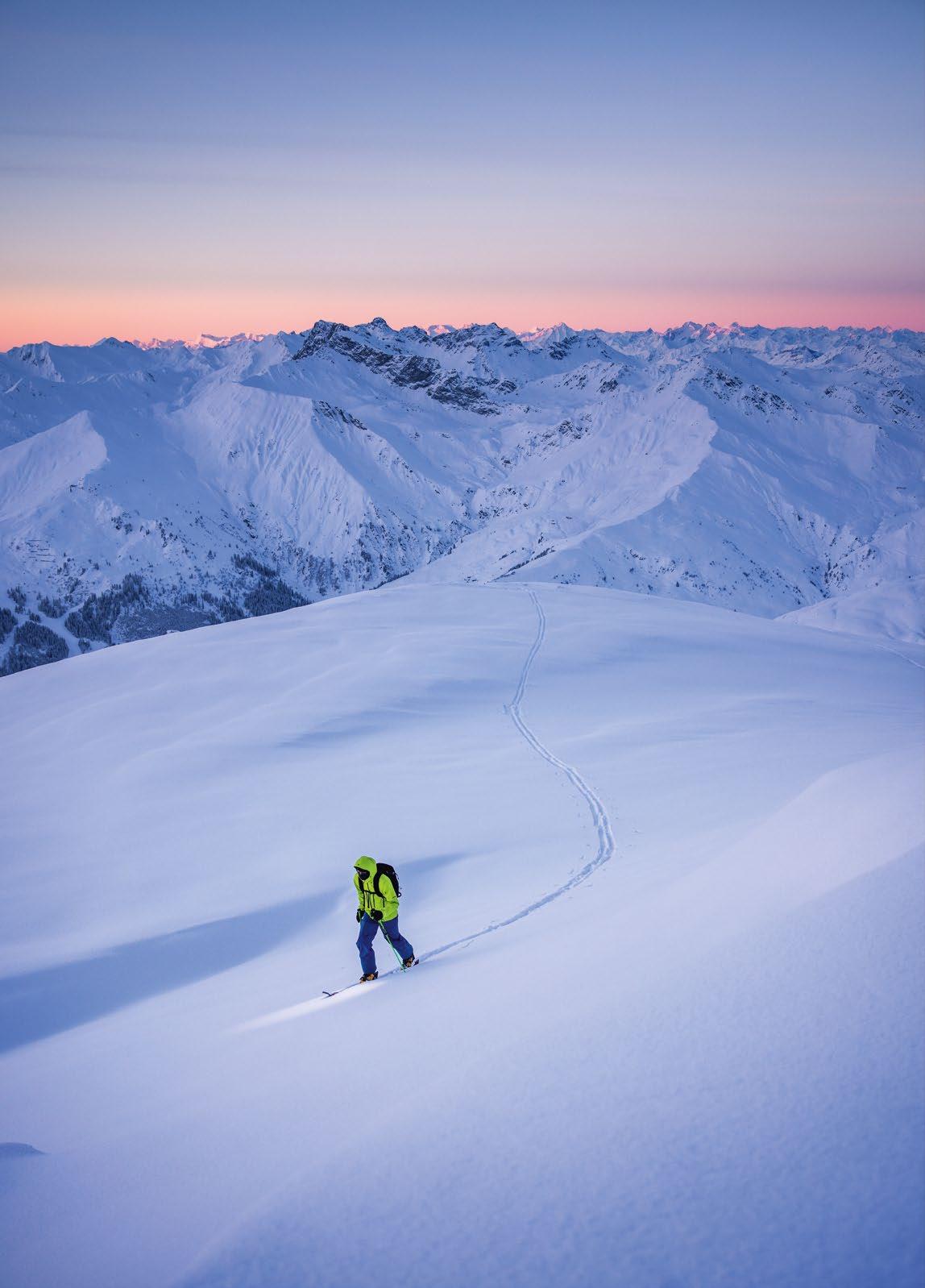
In mid-November, Mone and Roman started with the first bike shots. On the very first day, everything could have already come to an end. While finishing one of the last scenes, Roman missed a jump and went a bit too far to the left. Unfortunately, there was a tree in his flight path. After this painful encounter there was no way to continue filming for several days.
When the first snow began to fall in late November no one knew if and
welchen Auflagen die Skigebiete aufmachen würden. Außerdem war Tirol im Lockdown. Skitouren konnten die Jungs jedoch gehen – ob das erlaubt war oder nicht, sei dahingestellt, aber das wollten sie sich nicht nehmen lassen. Und so standen Mone, Roman und der Fotograf Tom Klockner Mitte Dezember 2020 um 6 Uhr morgens mit ihren Powderlatten und Fellen endlich wieder im Schnee. Gegen 8 Uhr ging die Sonne auf und sie hatten knapp 900 Höhenmeter geschafft. Es war ein Wahnsinnsgefühl, endlich wieder am Berg zu sein, während der Lockdown im Tal alles lahmlegte. Die Gruppe nutzte das rötliche Morgenlicht und filmte die erste Linie für den Film. Unten angekommen zog Roman wie im Rausch gleich wieder die Felle auf, um 600 Höhenmeter später einen zweiten Run zu machen. Um 10 Uhr waren sie wieder am Auto und hatten tolle Bilder im Kasten. Alaska, Kanada… schön und gut, aber wenn zu Hause alles passt, dann gibt es nichts Besseres, als das Backcountry vor der eigenen Haustür zu haben – eine glückliche Situation, für die Roman und seine Freunde nicht nur im Lockdown dankbar sind.
Der Dezember verging mit kaum Niederschlag. Da es zu Hause nicht passte, reisten die Jungs schließlich dem Schnee hinterher. Da man Tirol ohne Coronatest nicht verlassen durfte, war das gar nicht so einfach. Auch durfte man nirgendwo übernachten, wenn es nicht „beruflich“ war, dementsprechend wenig Hotels waren geöffnet. Nach ein paar Stunden Fahrt kam die Gruppe
under what constraints the ski resorts would open. In addition Tyrol was in Covid lockdown. However, the guys were still able to go ski touringwhether that was allowed in the lockdown or not, they weren’t sure, but they didn’t want to be deprived of this only pleasure.
And so, in mid-December 2020, Mone, Roman and photographer Tom Klockner were finally back in the snow at 6 a.m. with their powder skis. Around 8 a.m. the sun came up, and they had managed to hike nearly 900 meters in altitude. It was a blast to finally be back on the mountain while the lockdown in the valley paralyzed everybody. The group took advantage of the crimson morning light and filmed the first line for their movie. Once at the bottom Roman put the skins back on right away, as if in a frenzy, to make a second run 600 vertical meters later. At 10 o’clock they were back at the car, and the first scenes were a wrap. Alaska, Canada... all great, but when it’s all perfect at home, there’s nothing better than having the backcountry right in your own backyard – a fortunate situation for which Roman and his friends are genuinely grateful, not just during the lockdown.
December passed with hardly any precipitation, and the guys ended up chasing the snow. Since you weren’t allowed to leave Tyrol without a Covid test, it wasn’t that easy. Also, one was not allowed to stay overnight unless
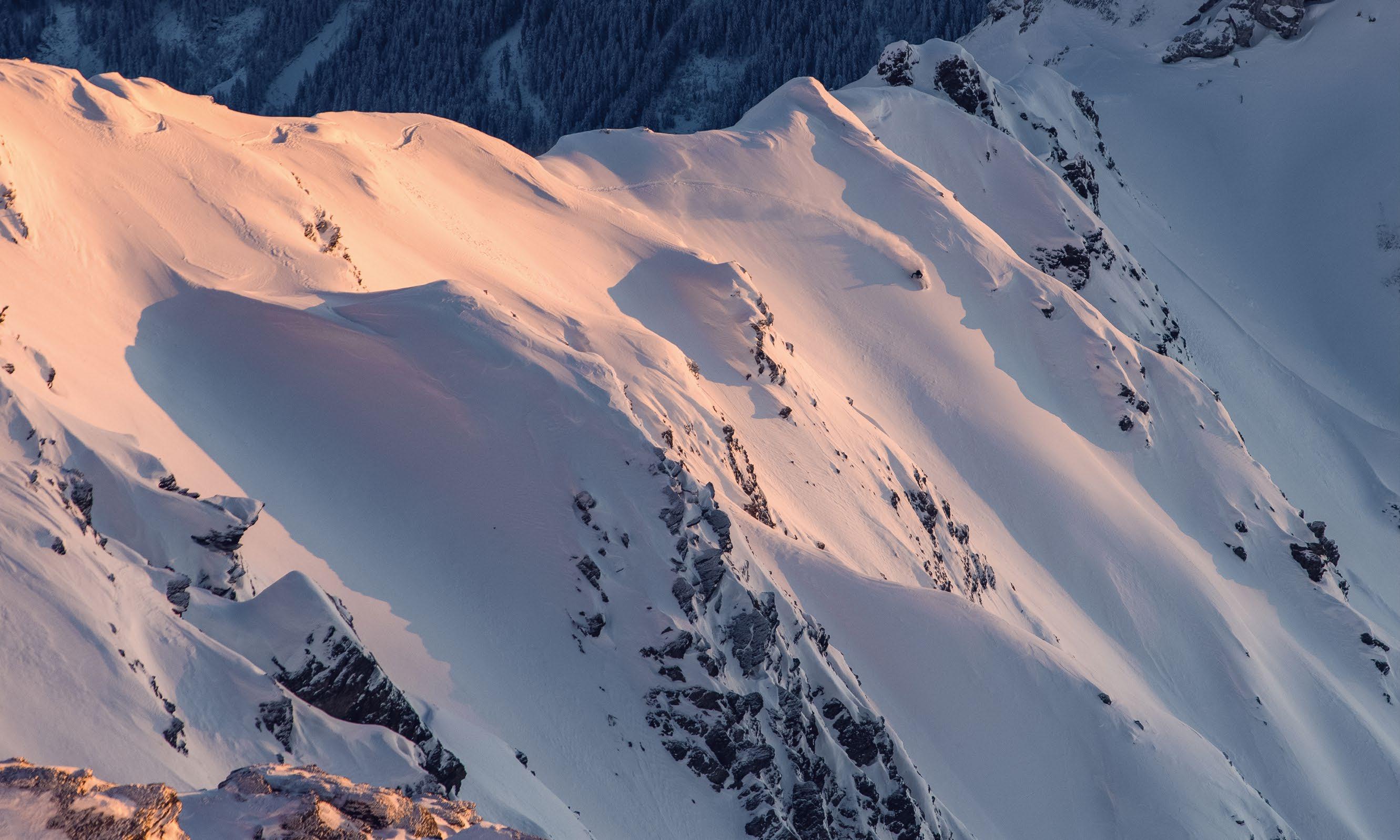
ans tief verschneite Nassfeld. Nach fünf Tagen und vielen coolen Aufnahmen kehrten sie ins Zillertal zurück, das mittlerweile ebenfalls einiges an Schnee bekommen hatte – leider jedoch mit viel Wind, und da es vorher lange kalt und ohne Niederschlag war, war die Schnee- und Lawinensituation alles andere als sicher.
Erst Ende März bescherte Mutter Natur das Zillertal mit besten Bedingungen, zumindest was den Schnee anging. Die Sonne versteckte sich trotzig, aber zu 80 Zentimetern Schneefall über Nacht kann man nicht nein sagen. Und es blieb kalt. Am 28. März war der letzte Shootingtag im Schnee, im Sonnenuntergang hoch über dem Tal auf einer Nordflanke, mit perfekten Bedingungen und perfektem Licht. Weitere Tage im hochalpinen Gelände hätten folgen sollen,

it was “for business”; accordingly, few hotels were open. After several hours of driving the group arrived at the snow-covered Nassfeld. After five days and a lot of cool shots they returned to the Zillertal, which in the meantime had also received quite a bit of snow – but unfortunately with a lot of wind. Since it had been cold for a long time without any precipitation, the snow and avalanche situation was anything but safe.
It was not until the end of March that Mother Nature graced the Zillertal with excellent conditions, at least as far as the snow was concerned.The sun hid defiantly, but you can’t say no to 80 centimeters of powder overnight. And it stayed cold. March 28 was the last shooting day in the snow, in the sunset high above the valley on a northern flank, with perfect conditions and perfect light. More days in the high alpine were to follow, but conditions
aber die Bedingungen und diverse Einschränkungen wegen Corona bremsten das Team ein, und so konzentrierten sie sich langsam auf die Bike-Szenen.
Die ganze Saison war eine Herausforderung, durch Corona, Lockdown, Quarantänemaßnahmen. Aber auch die Schnee- und Wettersituation war nicht einfach. Die Filmstory wurde daher hier und da noch verändert, doch am Ende haben es Mone und Roman geschafft, etwas wirklich Einmaliges auf die Beine zu stellen.

Das erste Feedback zum Film war bereits überwältigend. Die eigens von Freunden produzierte Musik, das Wechselspiel aus Bike und Ski und die Interviews und Lebensweisheiten des Almer Schorschs. Nach der Kinotour im Herbst gibt es Timeout dann auch online.
and various restrictions due to Corona slowed the team down, so they slowly focused on the bike scenes.
The whole season was challenging due to Covid, the lockdown or quarantine measures. But also the snow and weather situation was not easy. Therefore the plot of the movie had to change here and there, but in the end, Mone and Roman managed to create something unique.
The first feedback on the film was already overwhelming. With music, specially produced by friends, the interplay of bike and ski and the interviews and life wisdom of Georg Almer make a great story. After the cinema tour in the fall Timeout will also be available online.
INFO:
Film „TimeOut“ – 16 min.
Premiere: Kino November ’21 – online Dezember ’21
Filmtour alp-con.net | alp-con.net/snow-filmblock
Filmer/Editor: Andreas „Mone“ Monsberger
Regie: Mone/Roman
Eigens produzierte Musik von www.sempre-caoz.com & BRX Christoph Abfalter
Bilder: Mone und Tom Klocker
Roman Rohrmoser: 36 Jahre, Ramsau im Zillertal, Freeski Profi u Biker ca. 17 movie parts, ca. 6 davon zum Teil mit produziert; bei TimeOut jedoch von Anfang bis Ende alles selber organisiert bzw. zusammen mit Mone
photo | f 7.1 – 1/1000
INFO:
Film “TimeOut” 16min
Premiere: Cinema November ‘21 - online December ‘21
Film tour alp-con.net | alp-con.net/snow-filmblock
Camera/Editing: Andreas “Mone” Monsberger
Director: Mone/Roman
Specially produced music by www.sempre-caoz.com and BRX Christoph Abfalter
Photos: Mone and Tom Klocker
Roman Rohrmoser: 36 years, Ramsau in Zillertal, freeski pro and biker approx. 17 movie parts, approx. 6 of them were partly co-produced; for TimeOut, however, everything was organized by him and More from beginning to end.
rider | ROMAN ROHRMOSER

RETHINK YOUR EQUIPMENT: GET YOUR BIG SIX PACK, NOW. ENTDECKEN SIE POWER UND LEIDENSCHAFT FÜR DIE MUSIK NEU – BEIM MUSIZIEREN. IHRE AUSRÜSTUNG: SECHS BIG SIX MUNDHARMONIKAS IN DEN TONARTEN G, A, Bb, C, D, F. IN SECHS STARKEN FARBEN: BLACK, LAVA, SKY, OLIV, YELLO, WHITE. DAS BIG SIX PACK KOMMT ZUSAMMEN MIT EINEM UMHÄNGEBAND IN EINER PRAKTISCHEN GÜRTELTASCHE. FÜR ALLE, DIE LANGSAM STARTEN WOLLEN: DIE INSTRUMENTE SIND AUCH EINZELN ERHÄLTLICH UND PASSEN IN JEDE HOSENTASCHE. ERLEBEN SIE DIE ENORME VIELFALT VON SEYDEL – UNSERE INSTRUMENTE ENTSTEHEN AUSSCHLIESSLICH IN HANDARBEIT IN KLINGENTHAL, UNTER VERWENDUNG BESTER MATERIALIEN. WELTWEIT EINZIGARTIG IST DER EINSATZ VON EDELSTAHL-STIMMZUNGEN, DIE EINE BIS ZU 5-FACH VERLÄNGERTE HALTBARKEIT



ROBIN O’NEILL
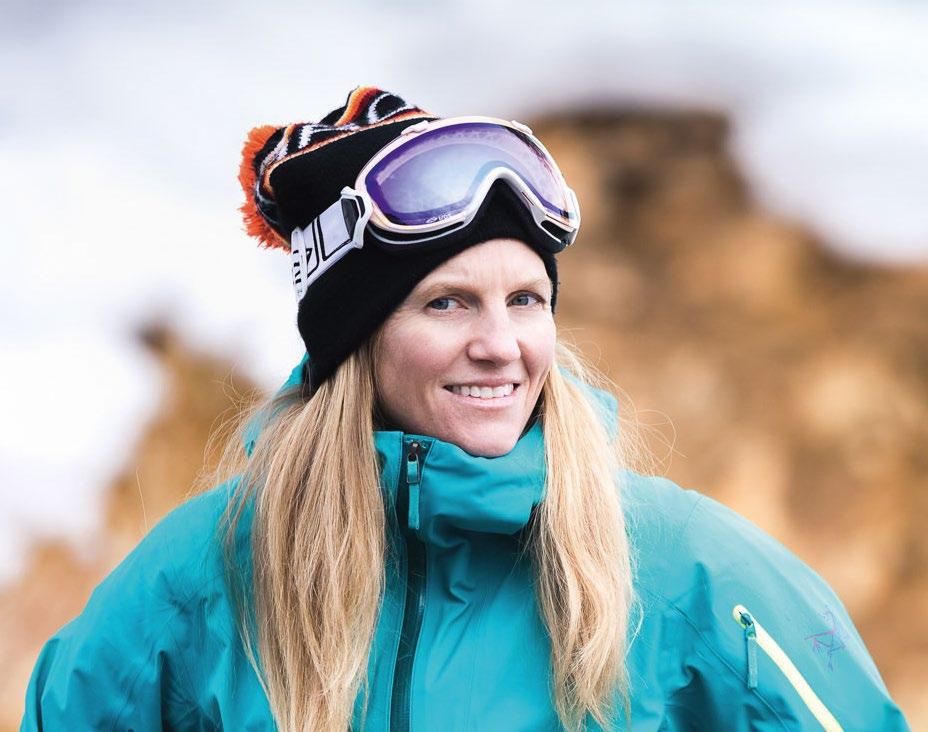
Whistler, Canada
Canon 1Dx Mark IV www.robinoneillphotography.com
Eric Hjorleifson



BORIS LANGENSTEIN

Tignes, France
Fuji xT3




Where the Adventure is Real
BEN TIBBETTS
Chamonix, France
Nikon Z7 www.bentibbetts.com
Blessing and Curse
MARTIN FIALA Wertach, Germany
Canon 5D III www.mafia-photography.com
Dani Arnold
ANDREAS VIGL
Innsbruck, Austria
Nikon D850 & Z6 www.andreasvigl.com
A few Steps from Home
DOM DAHER Geneva, Switzerland
Canon R5 www.domdaher.com
Friends on a Touring Day
CHRISTOPH JOHANN
Ingolstadt, Germany
Sony Alpha 7 III www.johannphotography.com
Brothers of the Mountain
MING POON
Tahoe City, CA USA
Canon Sony A7 RIII & DJI Mavic 2 Pro www.mingpoonphotography.com
The Evolution of Daron Rahlves
ANTON BREY
Garmisch-Partenkirchen, Germany
Fuji xT4 & DJI Mavic 2 Pro www.brey-photography.de NoMansLand
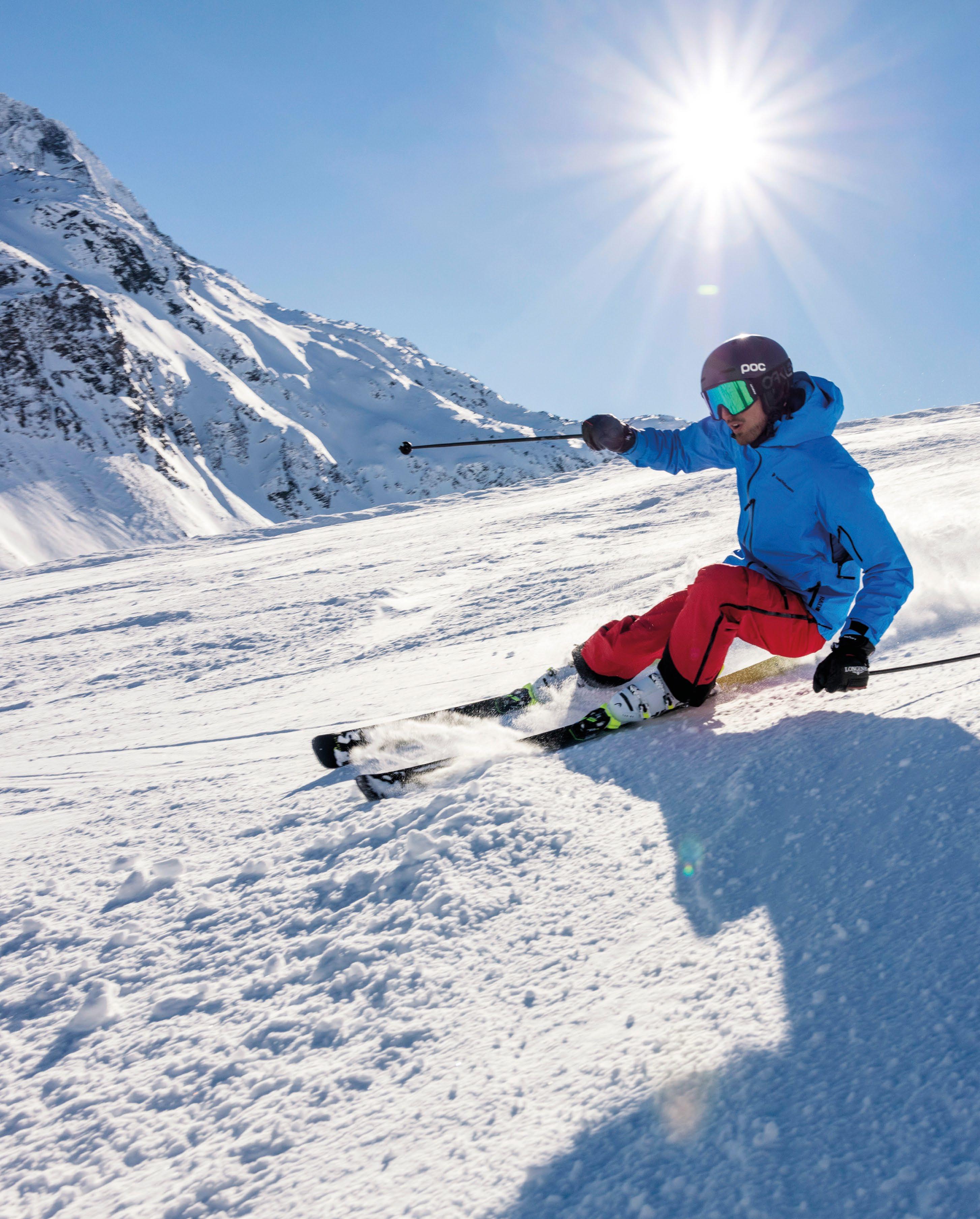
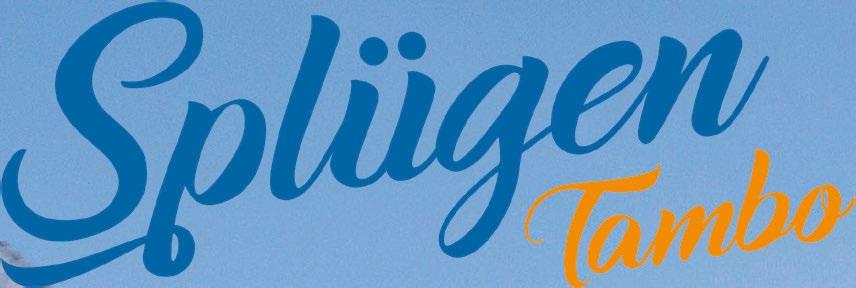
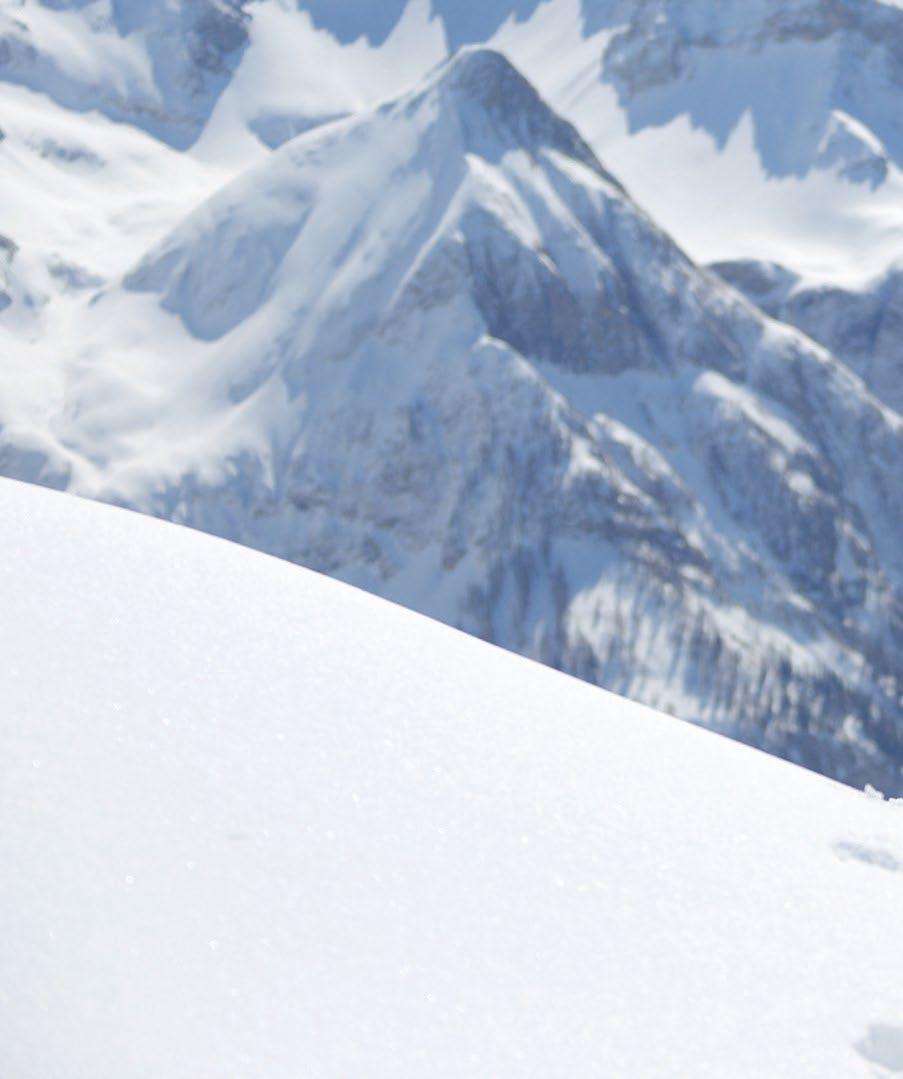
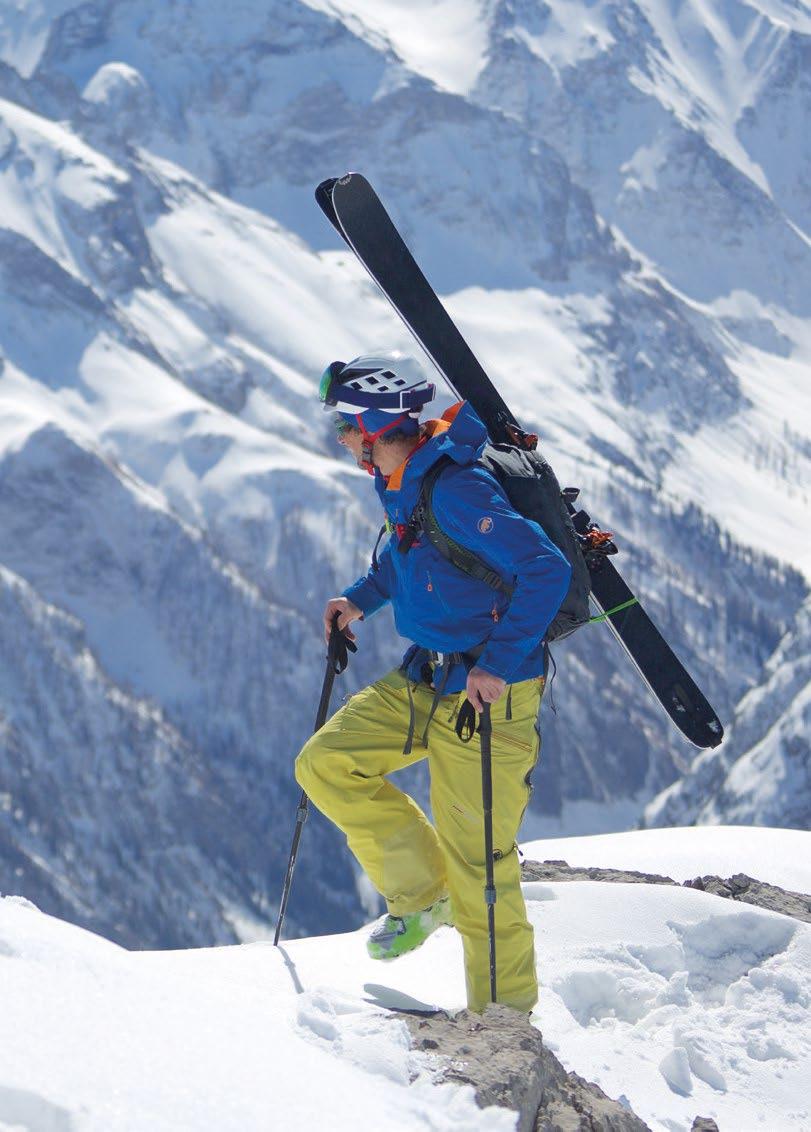




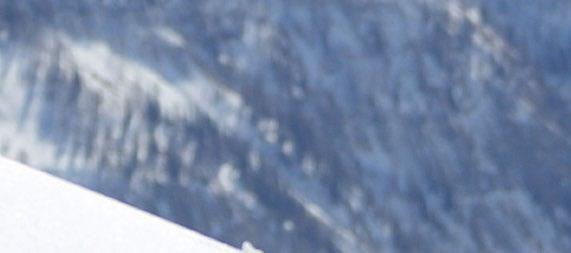

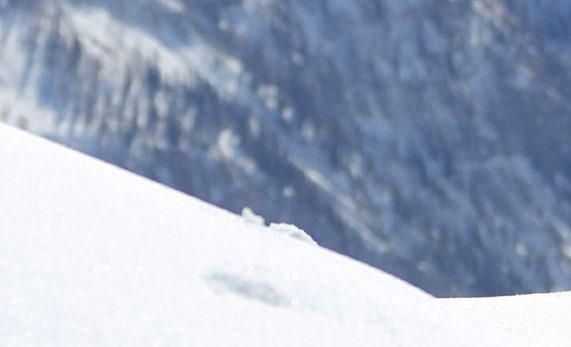
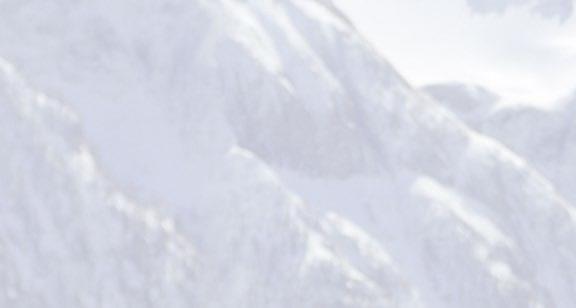


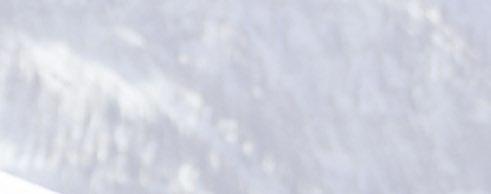


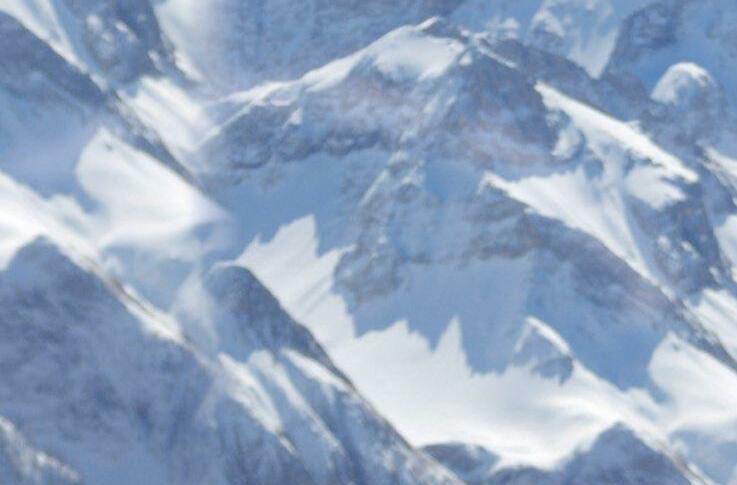







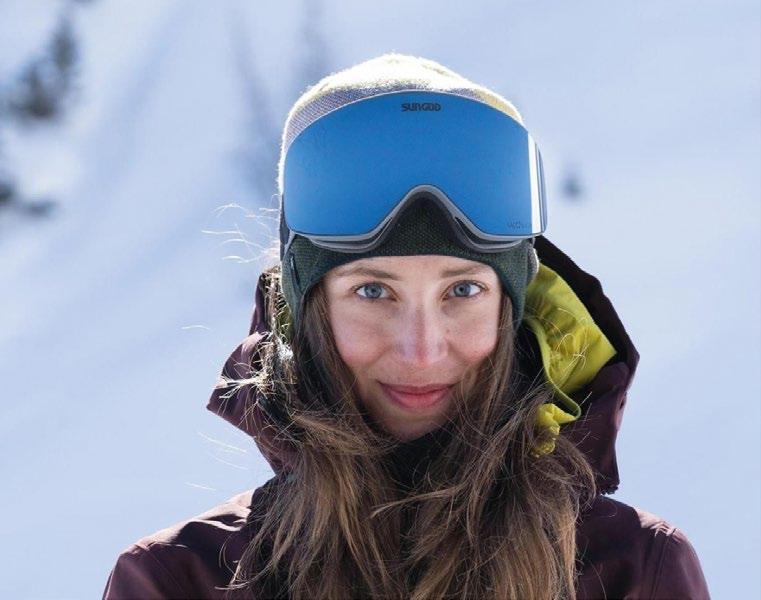

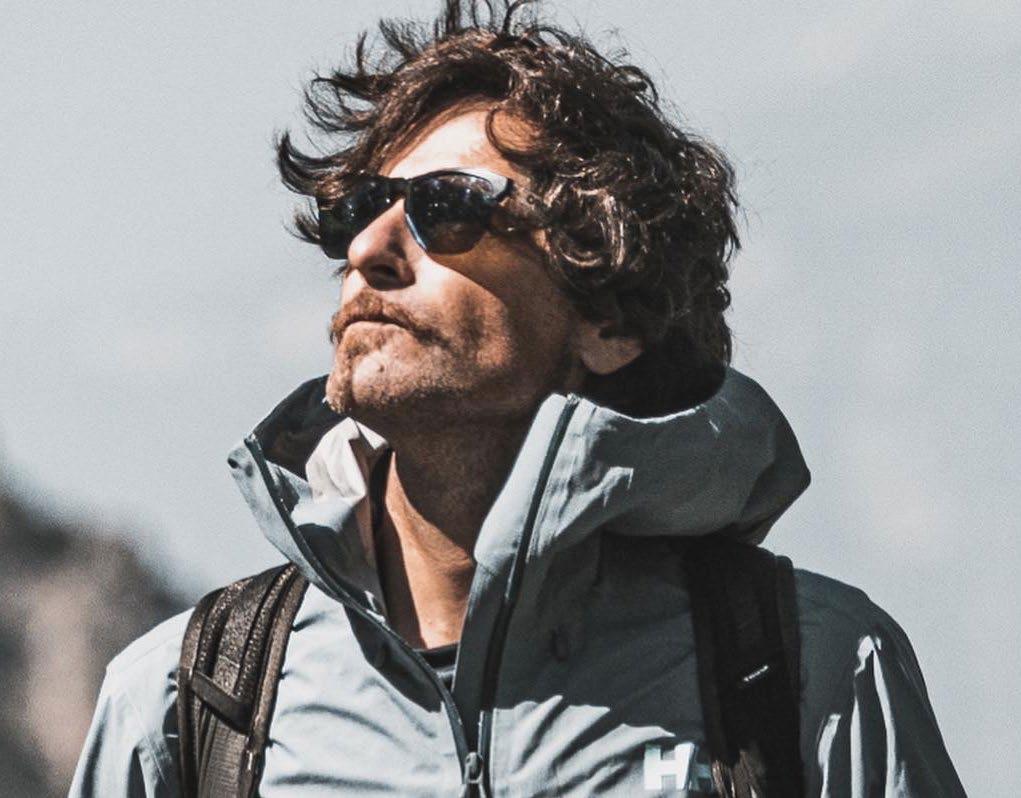
Backline Pants
Backline Jacket www.maier-sports.com


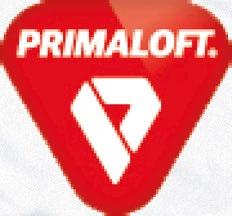


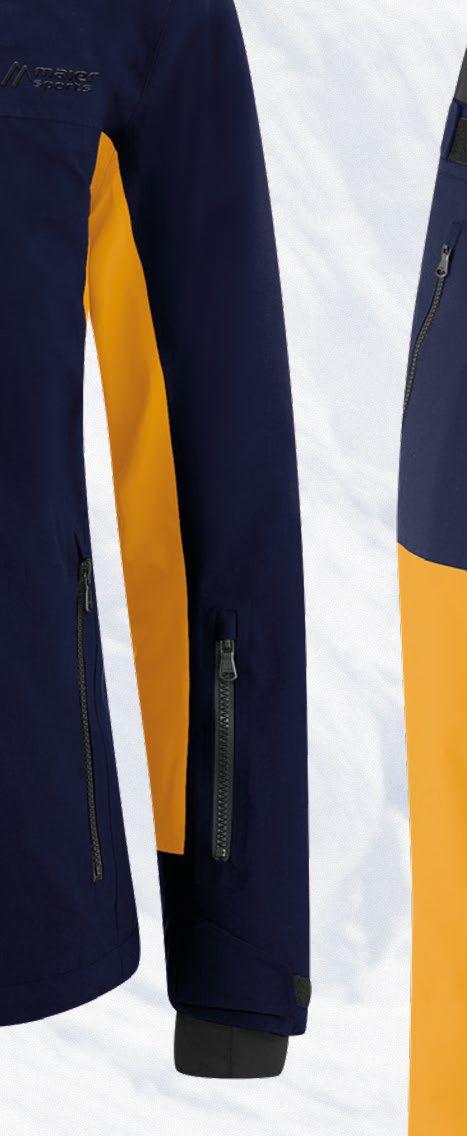


Cool, lässig und hochfunktionell – so zeigen sich das Backline Ski Outfit. Gemacht für Skifahrer*innen, die sich auf herausfordern den Pisten genauso zuhause fühlen wie beim Freeriden. Look und Ausstattung zeigen sich unisex. Aber klar: Der Schnitt ist auf die unterschiedliche Anatomie abgestimmt. Das darfst du von uns als den Hosen- und Passform-Spezialist zurecht erwarten.







12. 2021 – 06. 2022: Selecting the best stories for BACKLINE 2022 – feel free to send us your story until May 2022 01. 12. 2022: 12th BACKLINE 2022
Updates about photo contest: www.backline-magazin.com | www.facebook.com/BACKLINE.Backcountry.Freeskiing.Photo.Magazine | @backline_magazine


Anschrift Verlag | publishing house: wilderer marketing agentur Scheffelstr. 57 70193 Stuttgart, Germany sandra.wilderer@backline-magazin.com www.wilderer-marketing.de
Anschrift Redaktion | editorial dept.: Martin Fiala Haaggasse 14 87497 Wertach, Germany martin.fiala@backline-magazin.com www.backline-magazin.com
Herausgeber | publishers: Martin Fiala & Sandra Wilderer
Chefredaktion | editor in chief: Martin Fiala (v.i.S.d.P) martin.fiala@backline-magazin.com
Redaktion | editor: Wolfgang Greiner (Texts | Translation)
Redaktionelle Mitarbeit | editorial staff: Martin Fiala | Tiphaine Duperier | Boris Langenstein Ben Tibbetts | Enak Gavaggio | Christoph Johann Max Kroneck | Jochen Mesle | Megan Michelson Ricarda Schneegass | Lorenzo Alesi | Alice Linari Max Draeger | Jason Hummel | Roman Rohrmoser Dagmar Schächter | Sandra Wilderer
Grafikdesign & Layout | graphic design & layout: Anton Brey – www.brey-photography.de
Publisher & Anzeigen | publisher & advertising: Sandra Wilderer – sandra.wilderer@backline-magazin.com
Einzelverkaufspreis | copy price: D, A: 10,- € | CH: 15,- SFR | ITA: 12,90 € | SWE: 140,- SEK LUX: 10,- €
Prepress & Druck | prepress & printing company: AZ Druck und Datentechnik GmbH Heisinger Straße 16 87437 Kempten www.az-druck.de
Vertrieb | distribution company: stella distribution GmbH Überseering 10a 22297 Hamburg Phone: ++49 (0)40/80805300
BACKLINE finden Sie im ausgewählten Einzelhandel, Bahnhofsbuchhandel und an Flughäfen www.mykiosk. com/suche/24049/backline . Unter der Rubrik „BuyShop“ auf www.backline-magazin.com stehen die online Bestellmöglichkeiten.
BACKLINE will be distributed via special retailer, train station bookstores and airports www.mykiosk.com/ suche/24049/backline . Please find the online ordering under the rubric „Buy - Shop“ here: www.backlinemagazin.com
Die Zeitschrift und alle in ihr enthaltenen Beiträge und Abbildungen sind urhe berrechtlich geschützt. Eine Verwertung ohne Einwilligung des Verlages ist strafbar. Namentlich gekennzeichnete Beiträge geben nicht unbedingt die Meinung der Redaktion oder des Herausgebers wieder. Für unverlangt eingesandte Manuskrip te, CD-Roms, Fotos und Illustrationen übernehmen Verlag und Redaktion keine Haftung. Anspruch auf Ausfallhonorar oder Archivgebühren besteht nicht. In Fällen höherer Gewalt kein Anspruch auf Lieferung oder Rückzahlung des Bezugspreises. Erfüllungsort und Gerichtsstand ist Stuttgart.
imprint | BACKLINE 2021 & 2022 118
photo | Yhabril Moro rider | Alex Miguel location | Arnousse Peak, Spain photo | Fabian Johann rider | Josh Absenger location | Obertauern, AustriaBut never grown up. Unser extrem beliebter CLIFF wächst in der RT-Variante nochmals über sich hinaus! Mit seinem Schlafdach bietet der Camper Van noch mehr Freiheit und noch mehr Raum für Abenteurer. Bei allen Grundrissen finden zwei Personen auf der größten Liegefläche der Branche Platz! Und das alles zu einem unschlagbaren Preis-/Leistungs verhältnis ab 45.999,– Euro. Natürlich mit prämierter Spitzenqualität „Made in Germany“. Your adventure starts now!


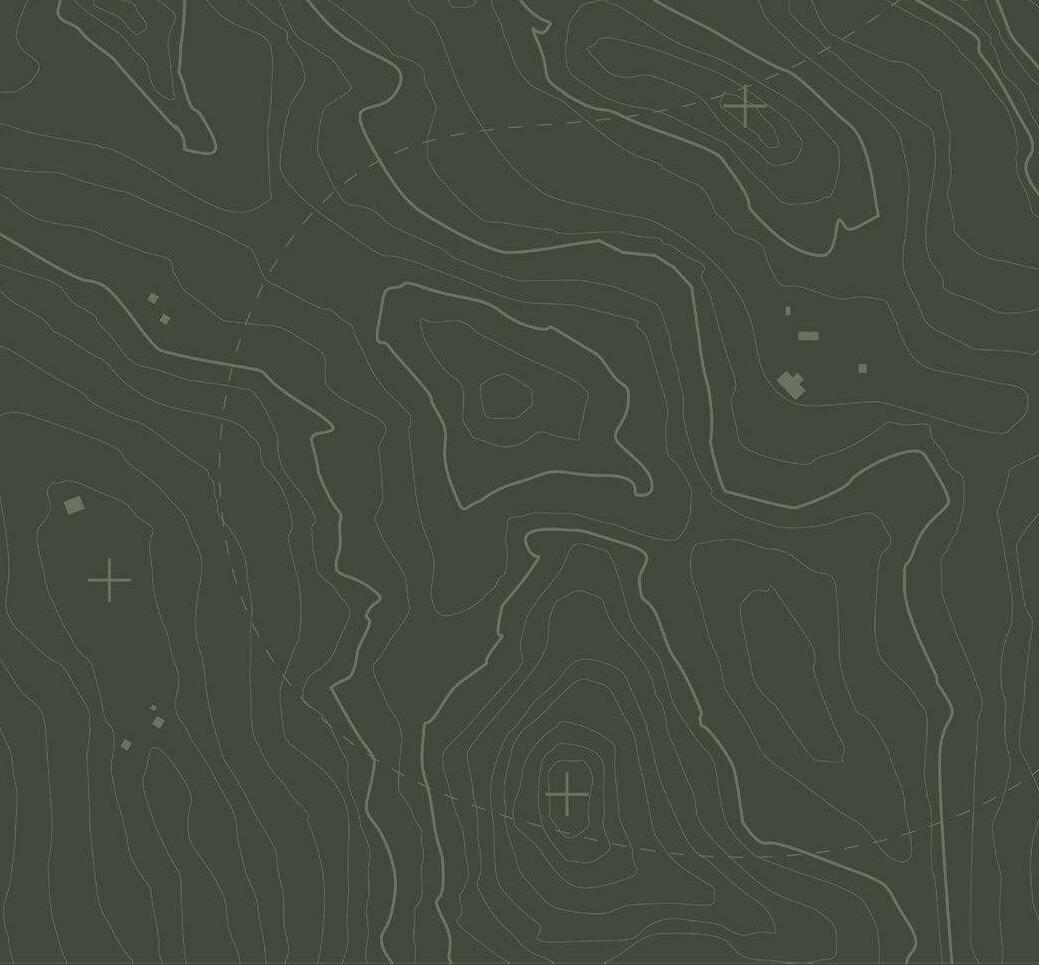

Innovative Technologie, kompromisslose Qualität und die perfekte Harmonie aus Design, Material und Optik. evil eye Sportbrillen garantieren höchsten Schutz und beste Sicht bei allen Sportarten – auch mit optischen Korrektionsgläsern erhältlich.








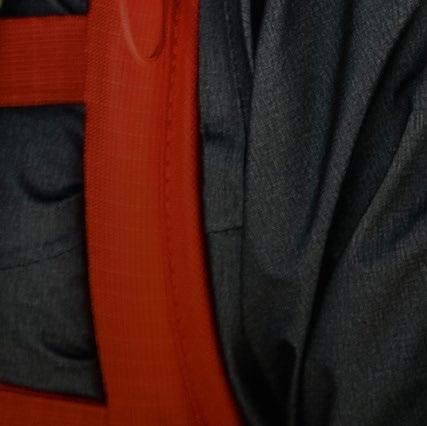


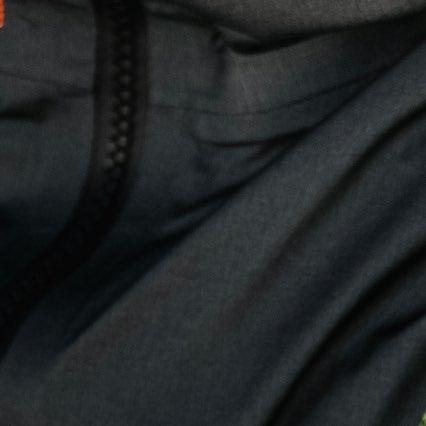
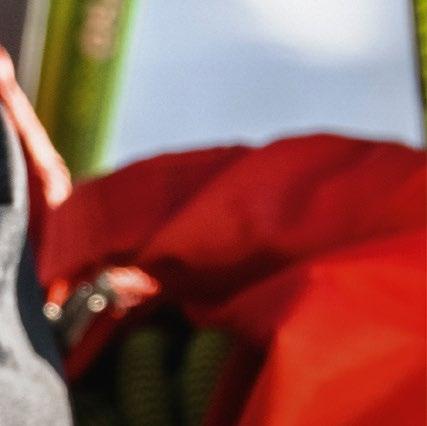



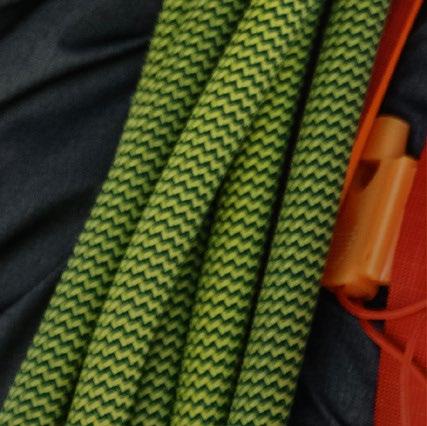




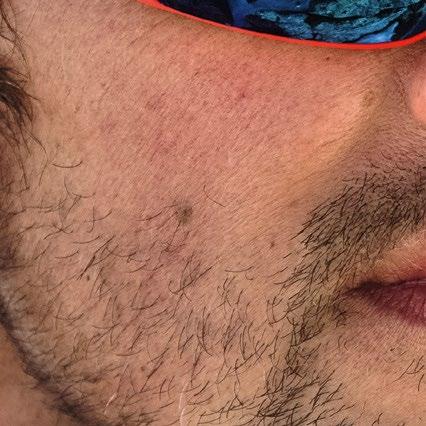

evileye.com
